Ireland (April, 2018)
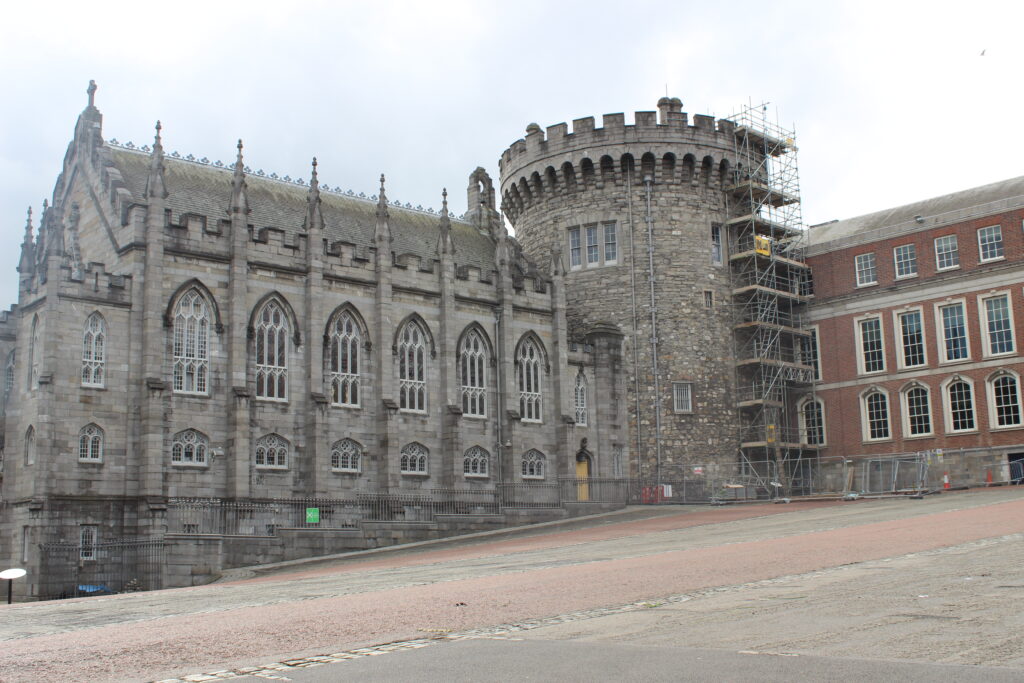
Dublin Castle has been the seat of Irish government since King John, 1204. Most of its construction dates to the 18th century.
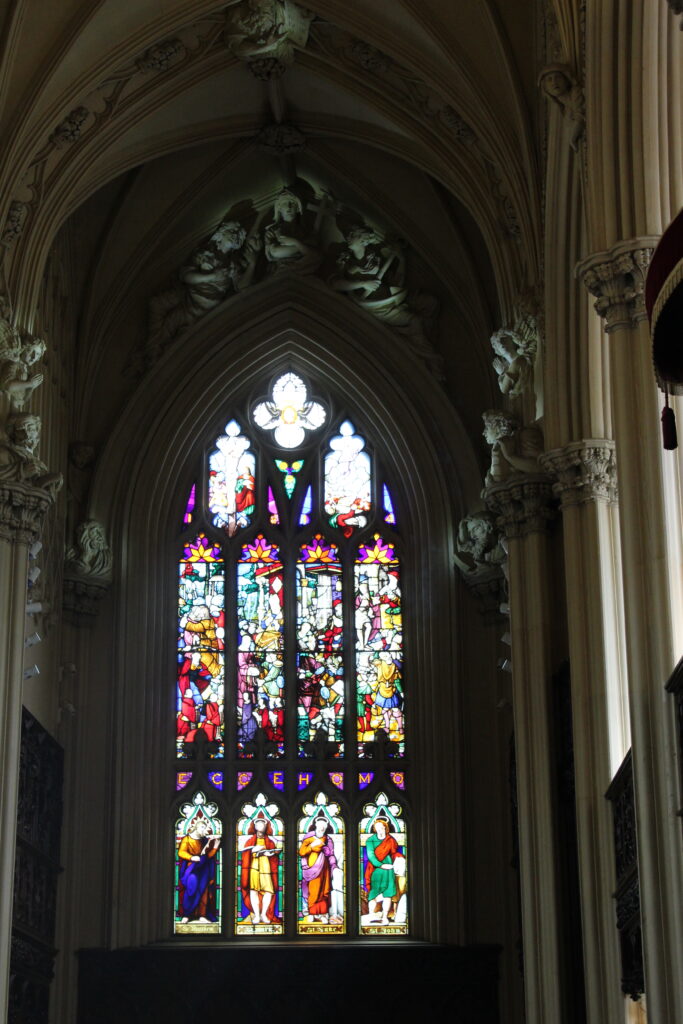
The chapel in Dublin castle has painted, pre-dating stained, glass.
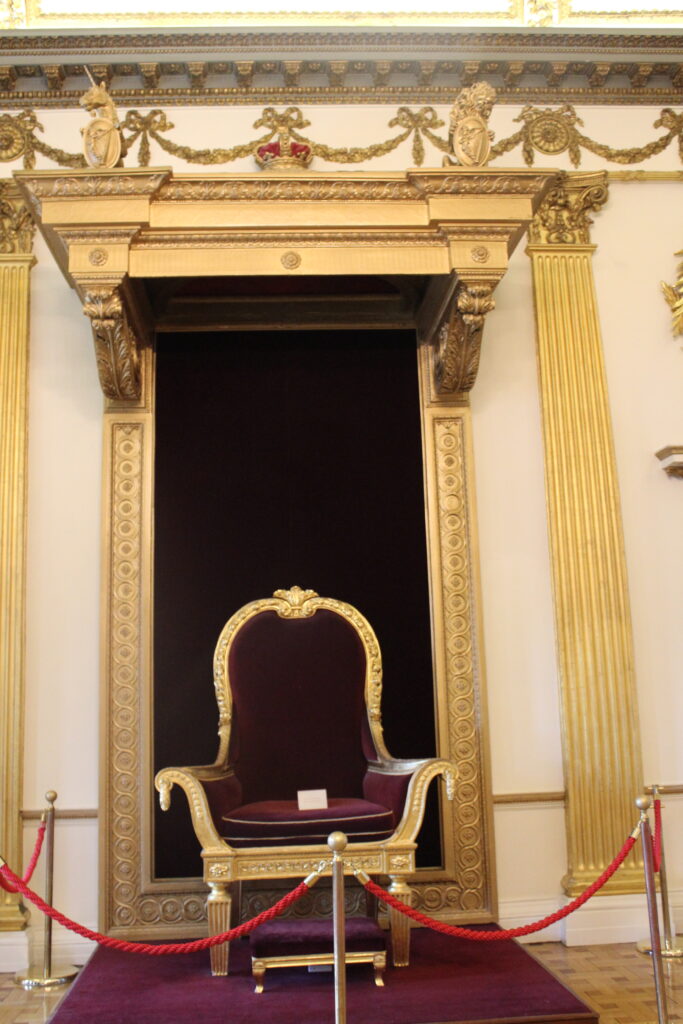
This throne was reportedly installed for King George IV, 1821.
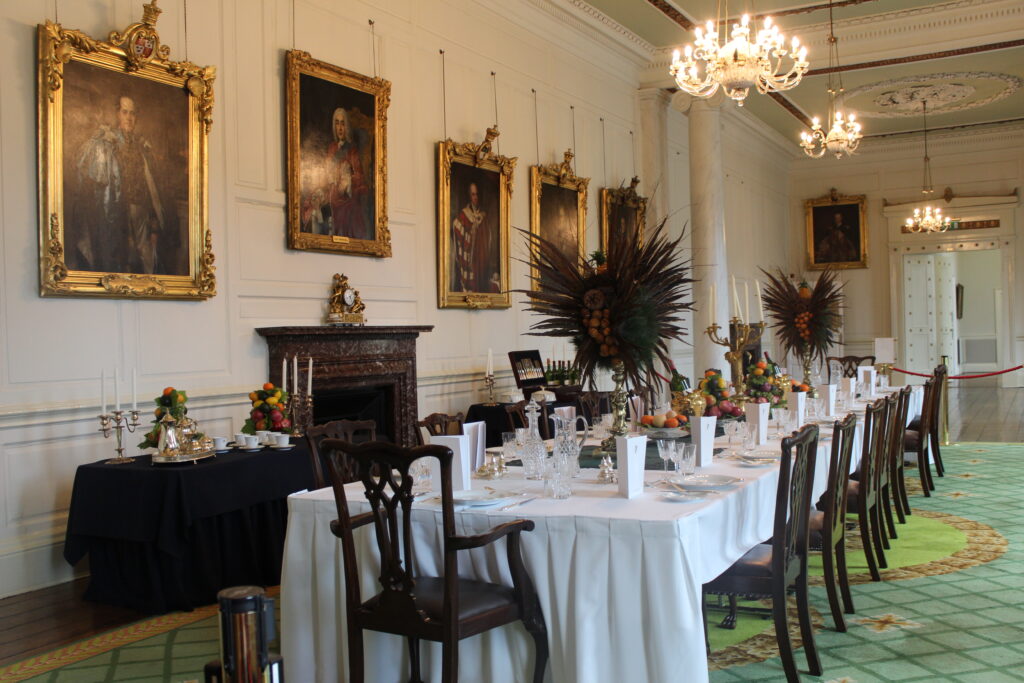
Formal dining room of the castle set with official china.
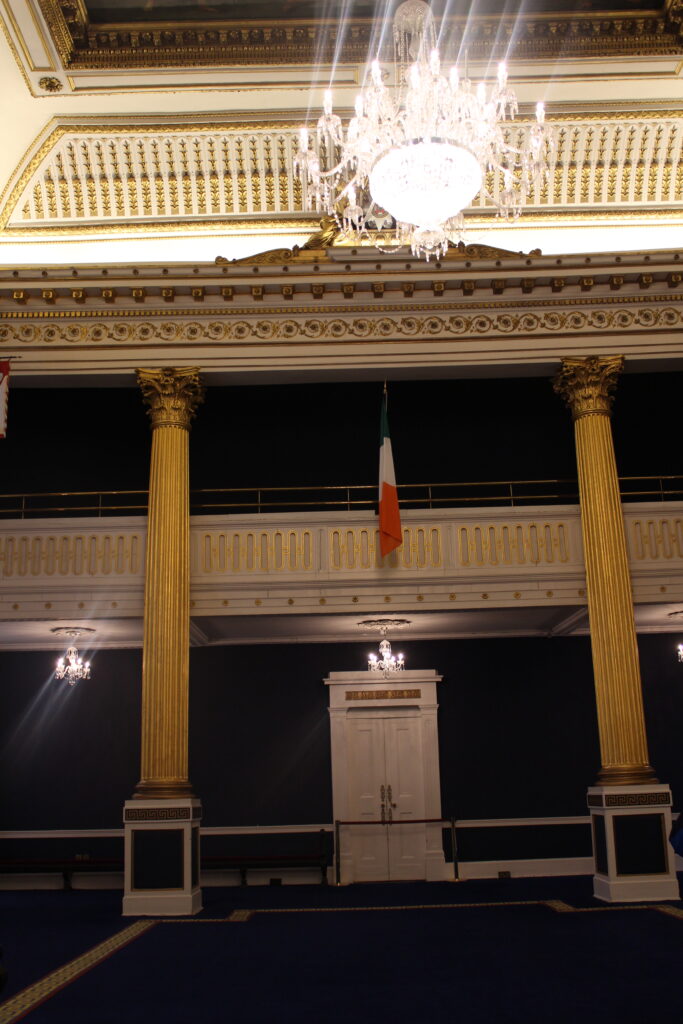
Official stateroom of Ireland, still in use
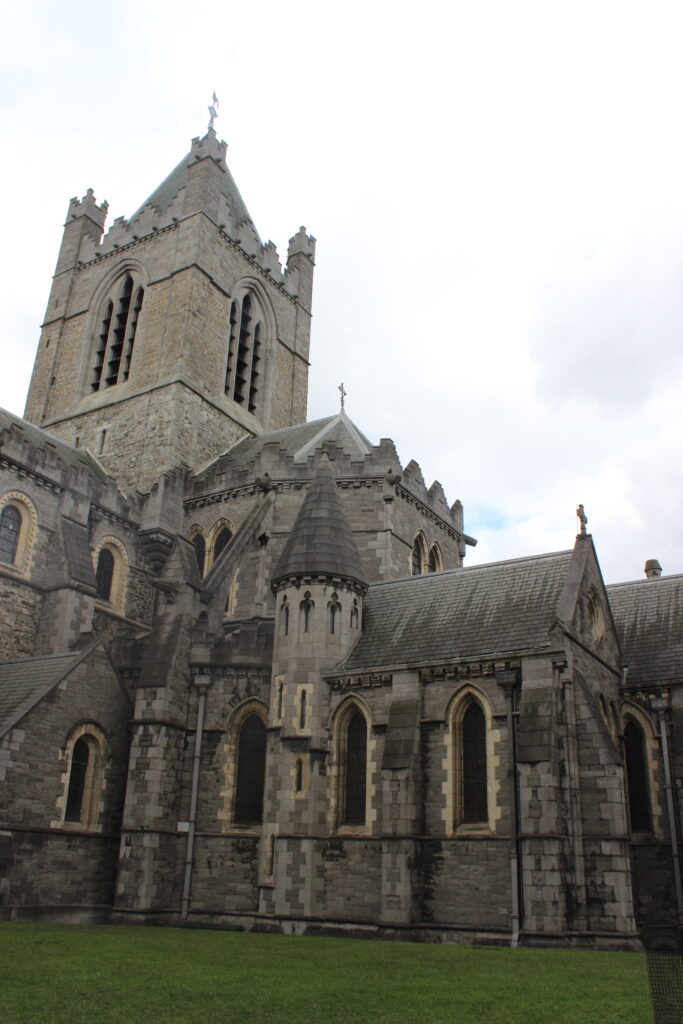
Christ Church Cathedral, originally founded in 1030
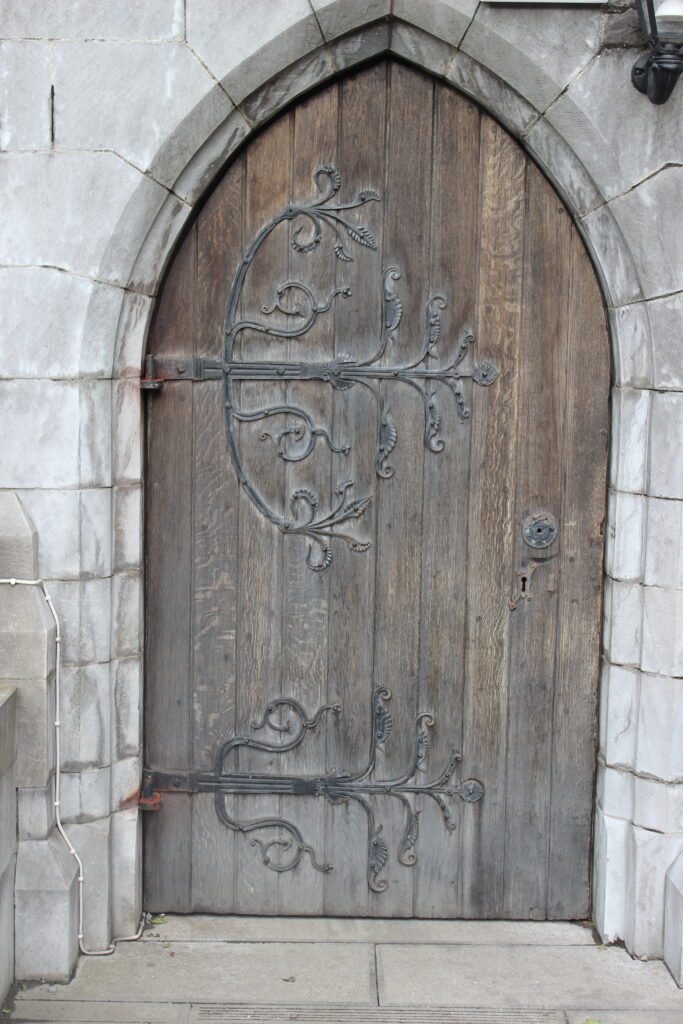
Medieval arched doorway
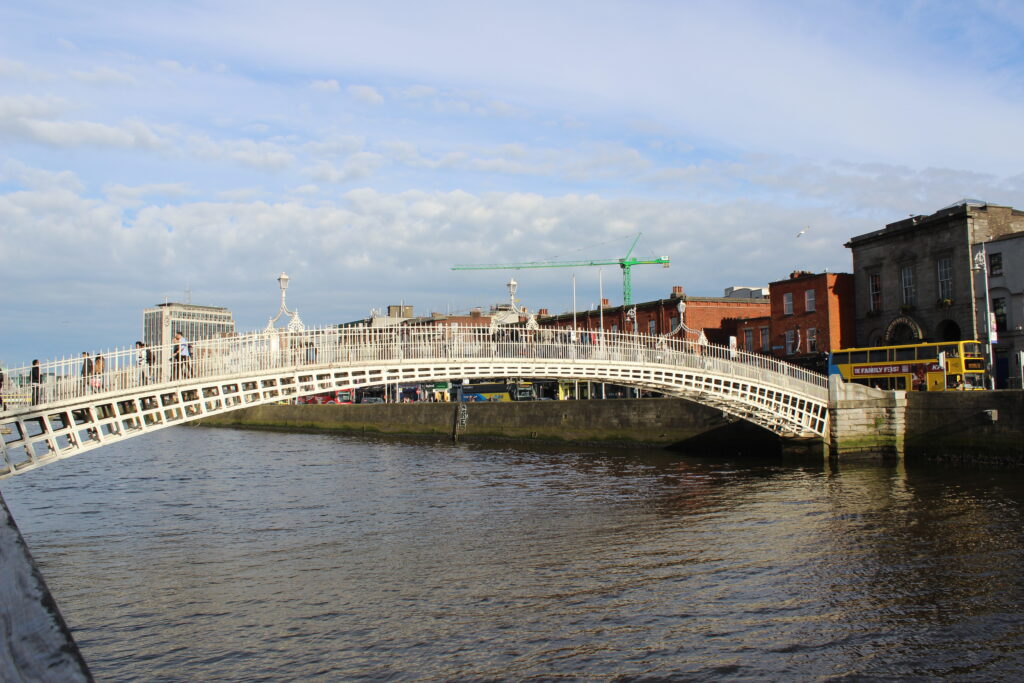
Ha’penny Bridge over the River Liffey; built May, 1816; named because of the cost to cross
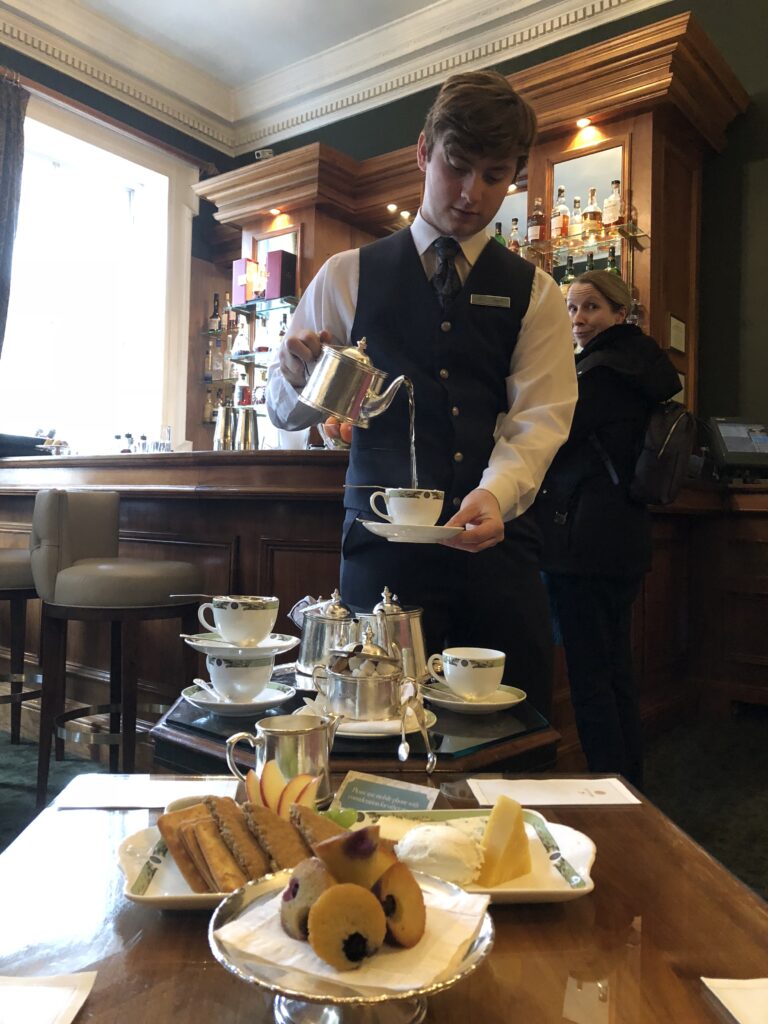
Merrion Hotel is known for its high tea and artwork
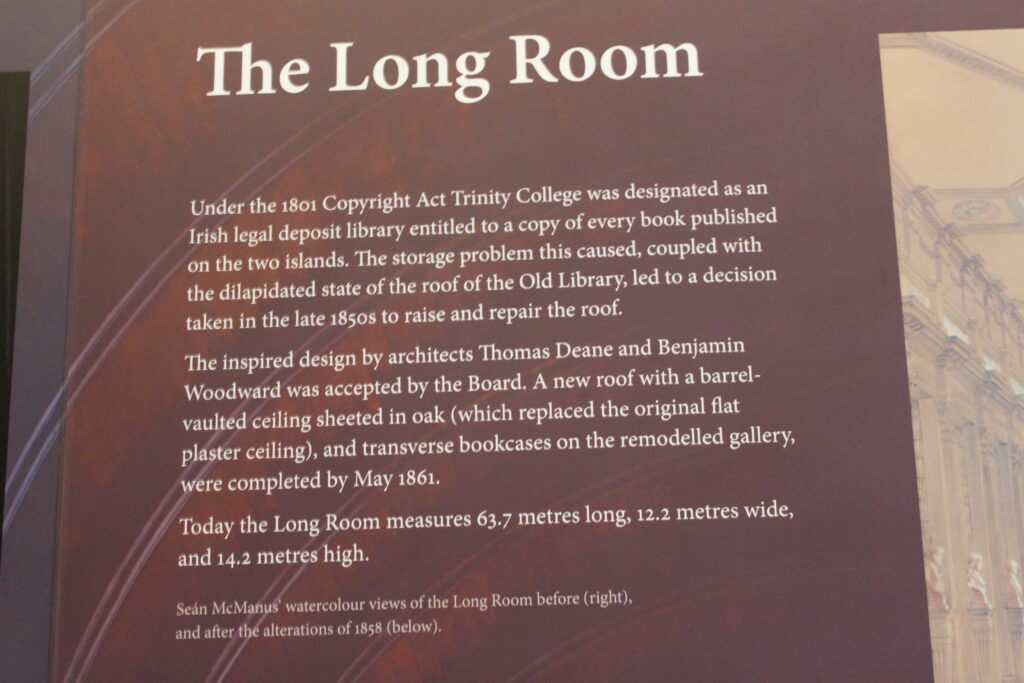
Trinity College, founded in 1592
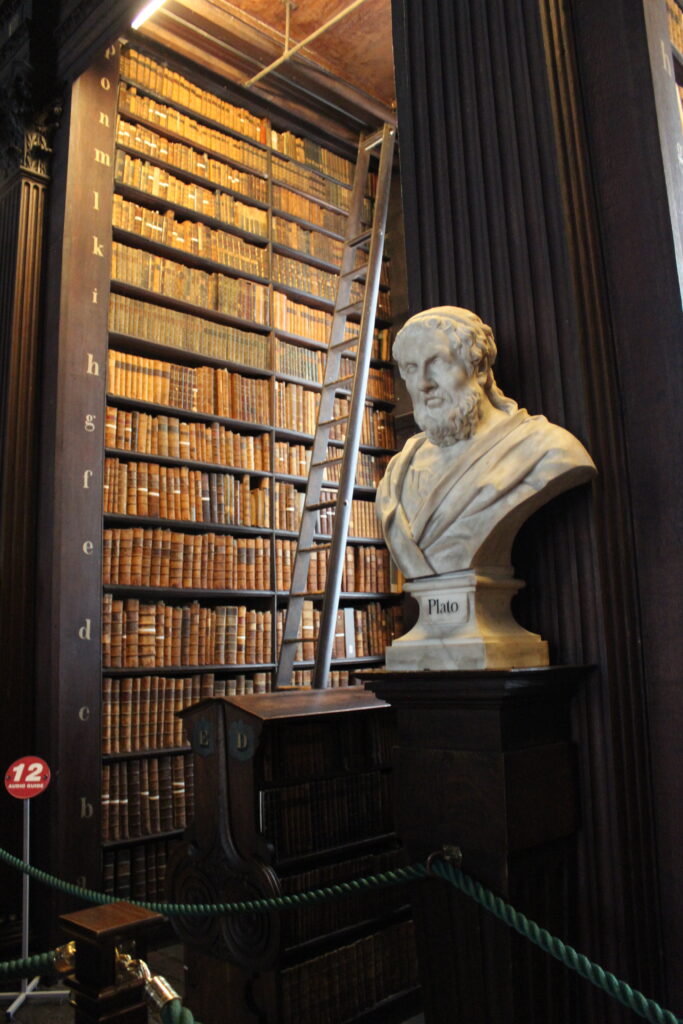
Busts of the most famous thinkers line the stacks.

The reason the library is called The Long Room.
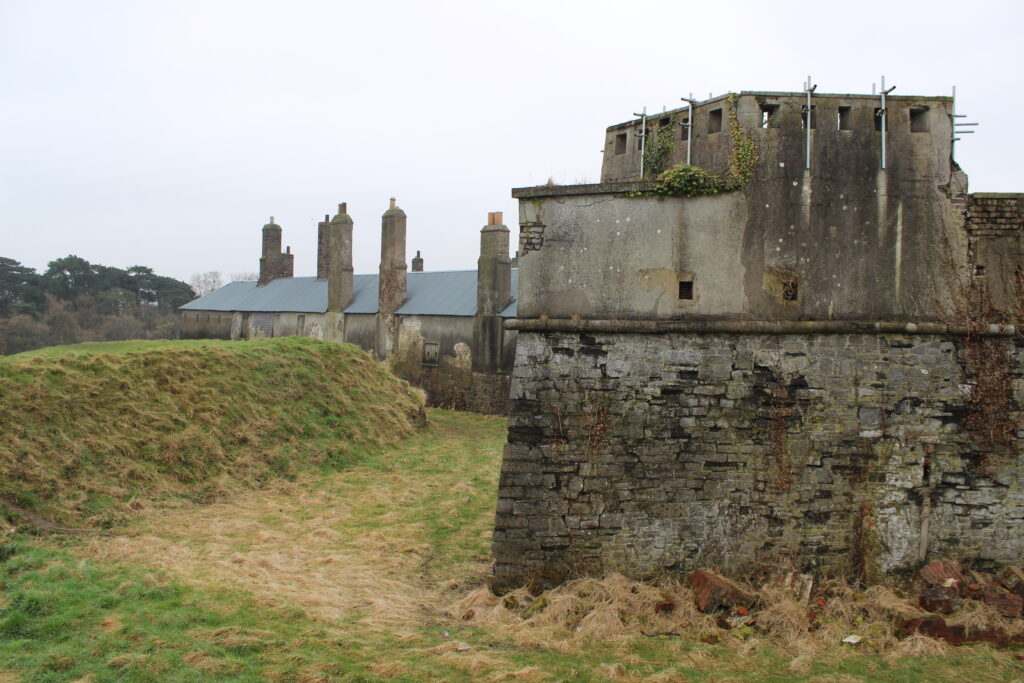
Phoenix Park Magazine Fort, originally built in 1611, British added barracks in 1801

Original fort lined by the moat
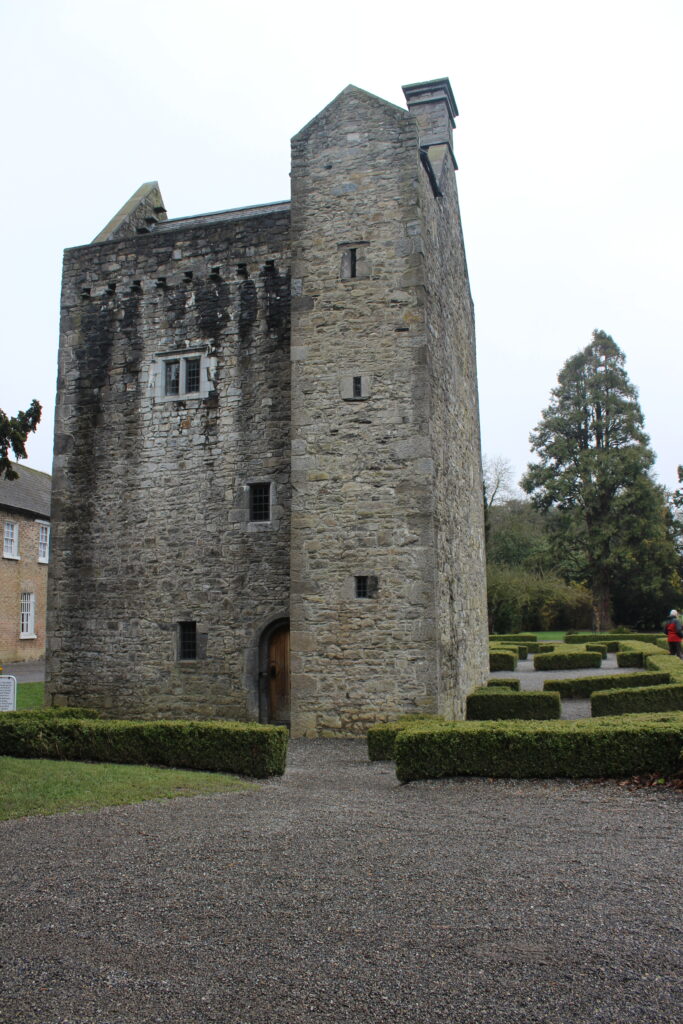
Ashtown Castle was unknown until it was found hidden inside a mansion. Castles are not necessarily big – they were built to be a fortified residence.
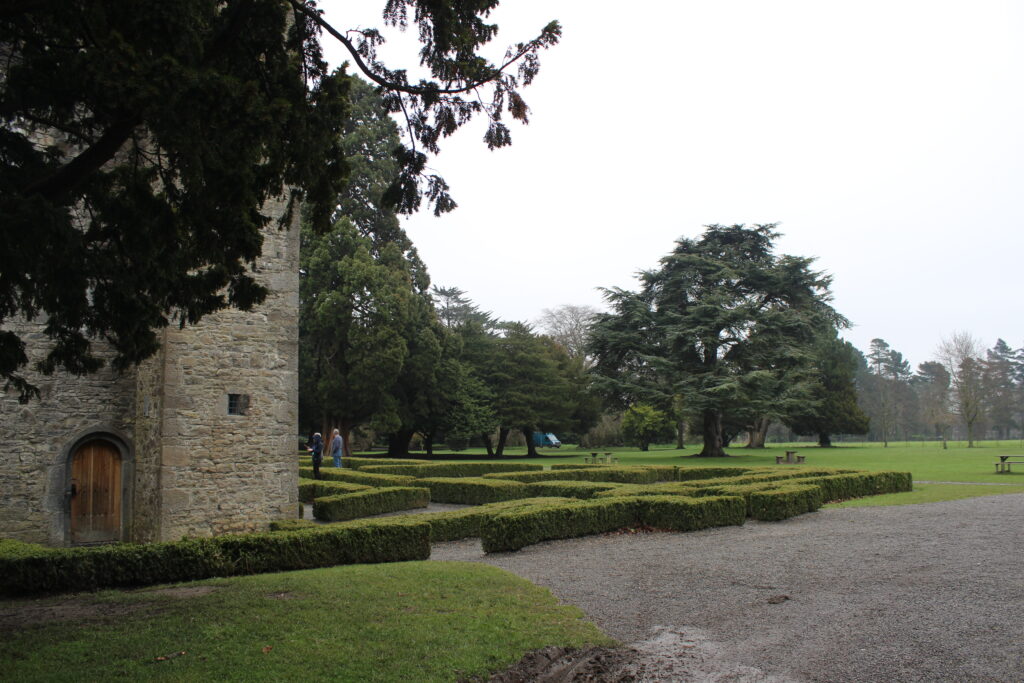
Maze hedge shows the outline of the mansion that was razed.
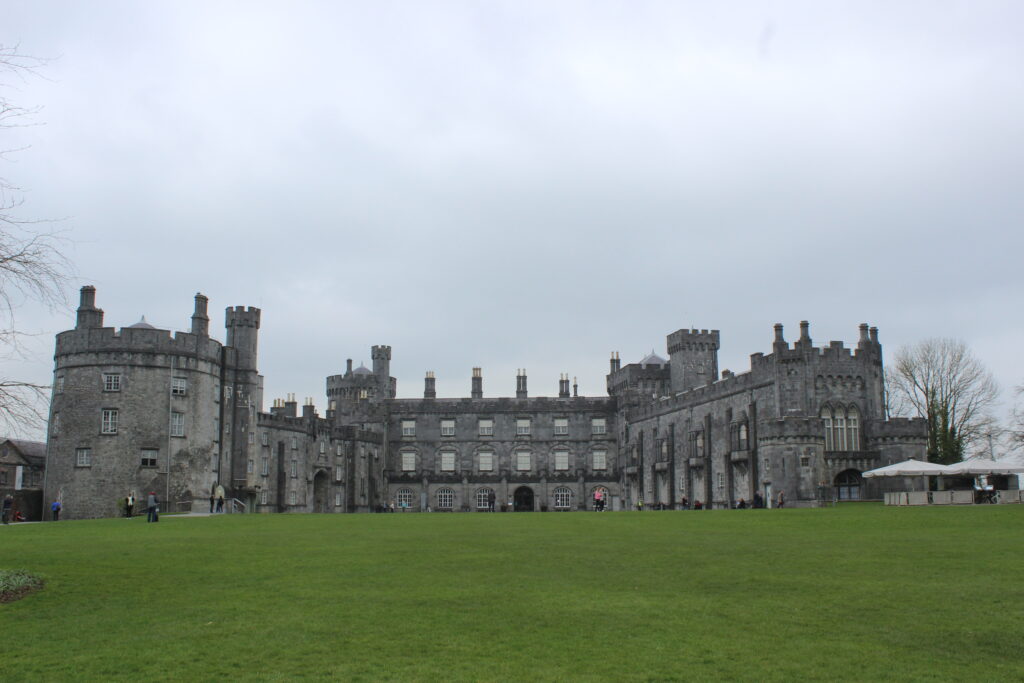
Kilkenny Castle was built in the twelfth century by the Butler family and was remodeled during the Victorian Era.
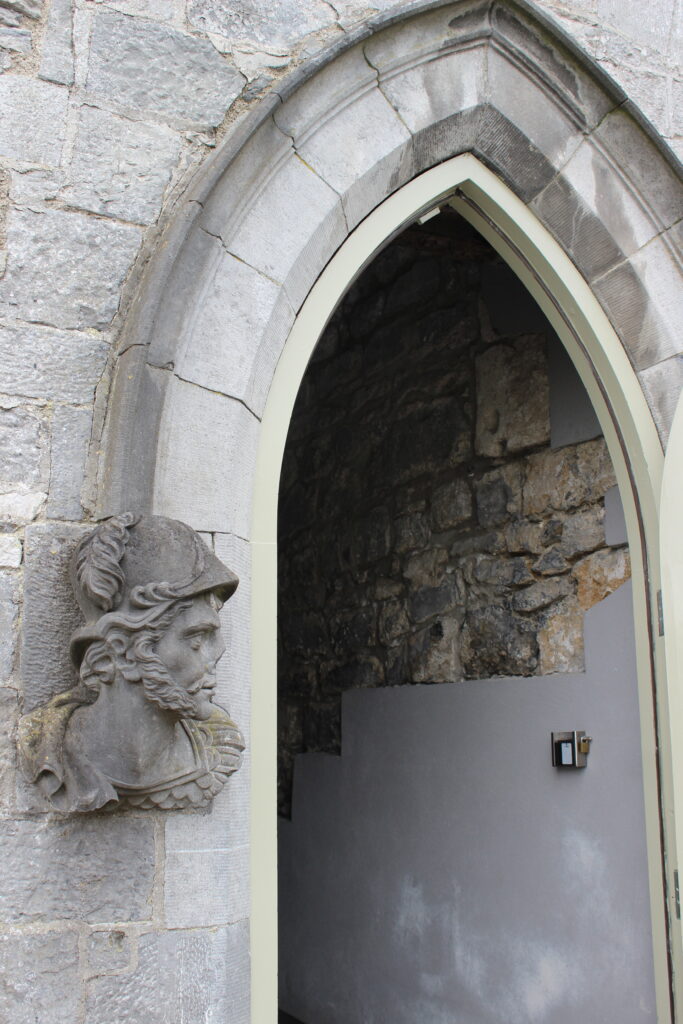
Somewhat repaired doorway into castle with decorative bust

Castles were defensive. This soldier would have been on duty.
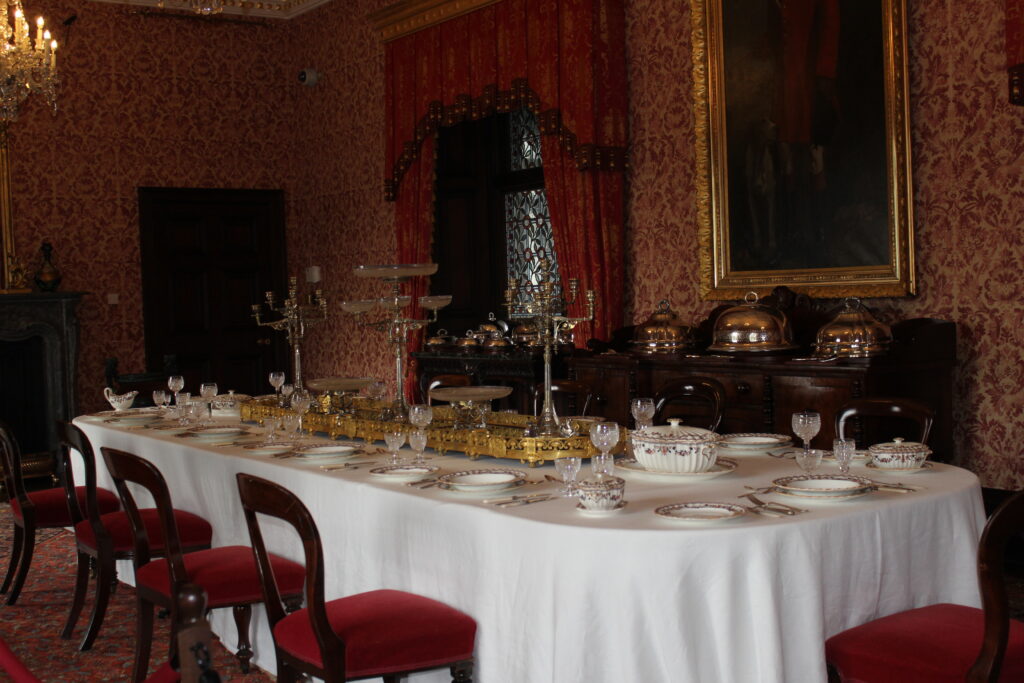
Formal dining room set with traditional Victorian place settings.
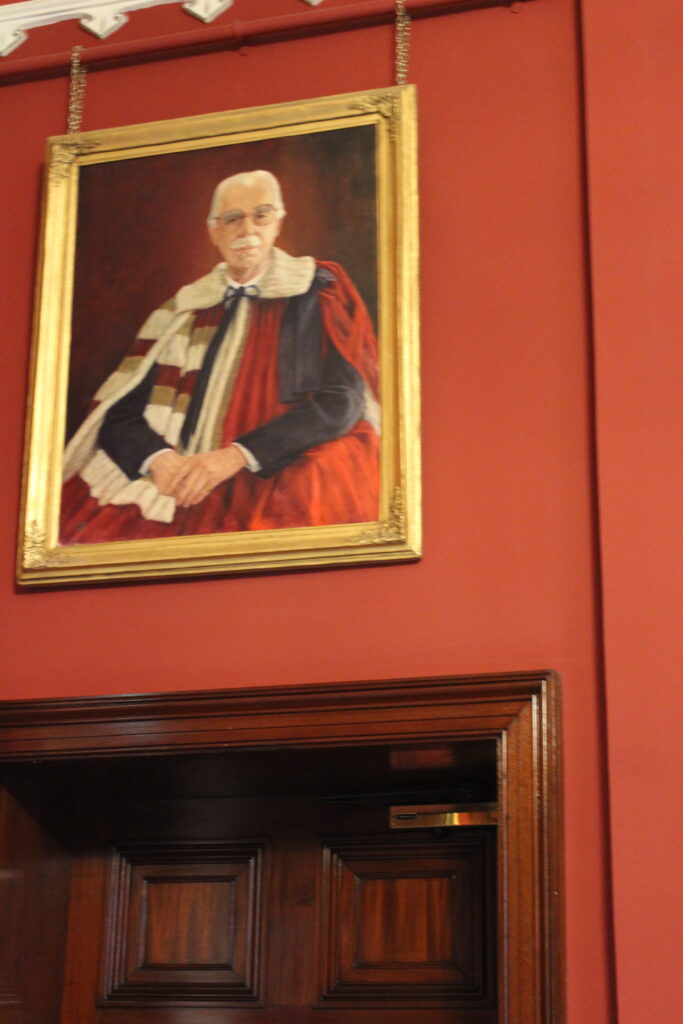
Charles Butler, last lord of castle before it became a museum, lived in Oak Park and was a major contributor to the Art Institute of Chicago!
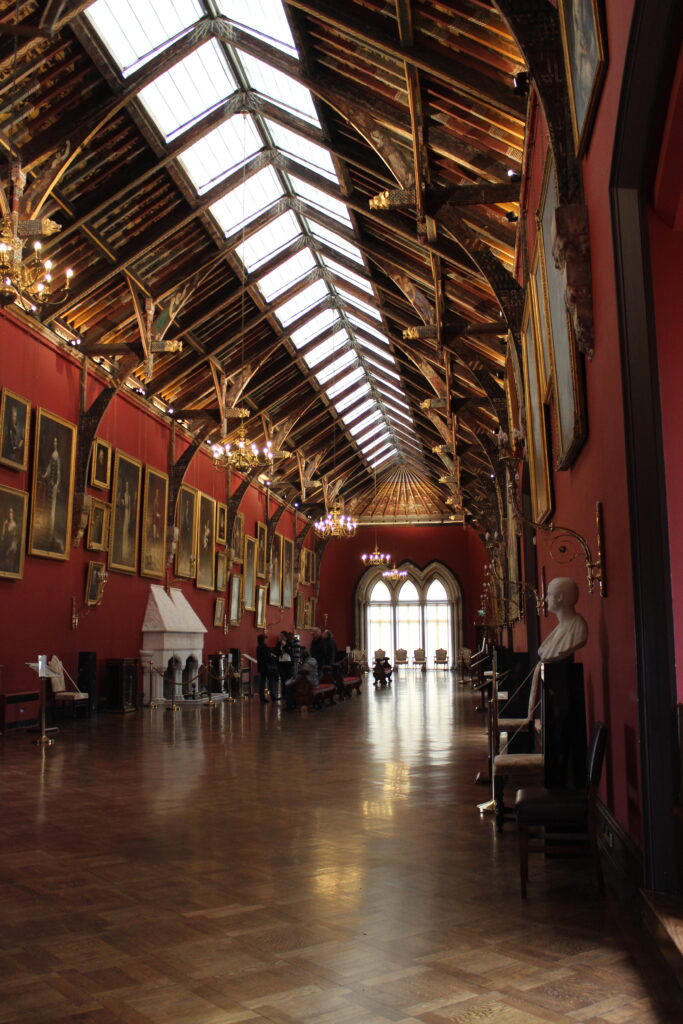
Castle’s art gallery with traditional upside down Viking ship shaped ceiling
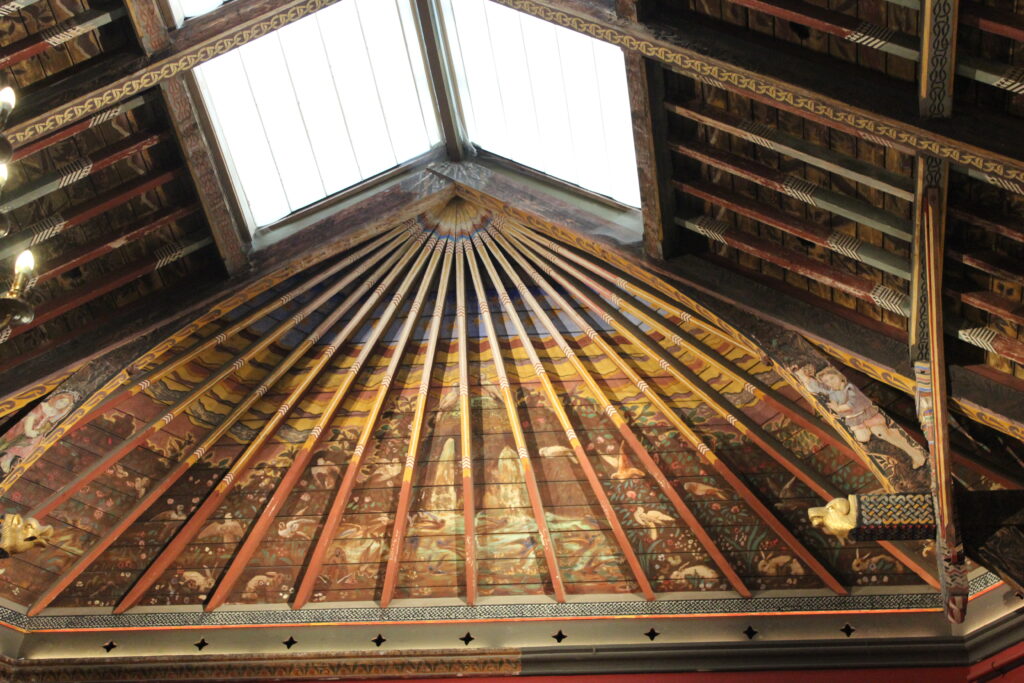
Traditionally, the artist would paint nymphs and fairies. This artist added his son.
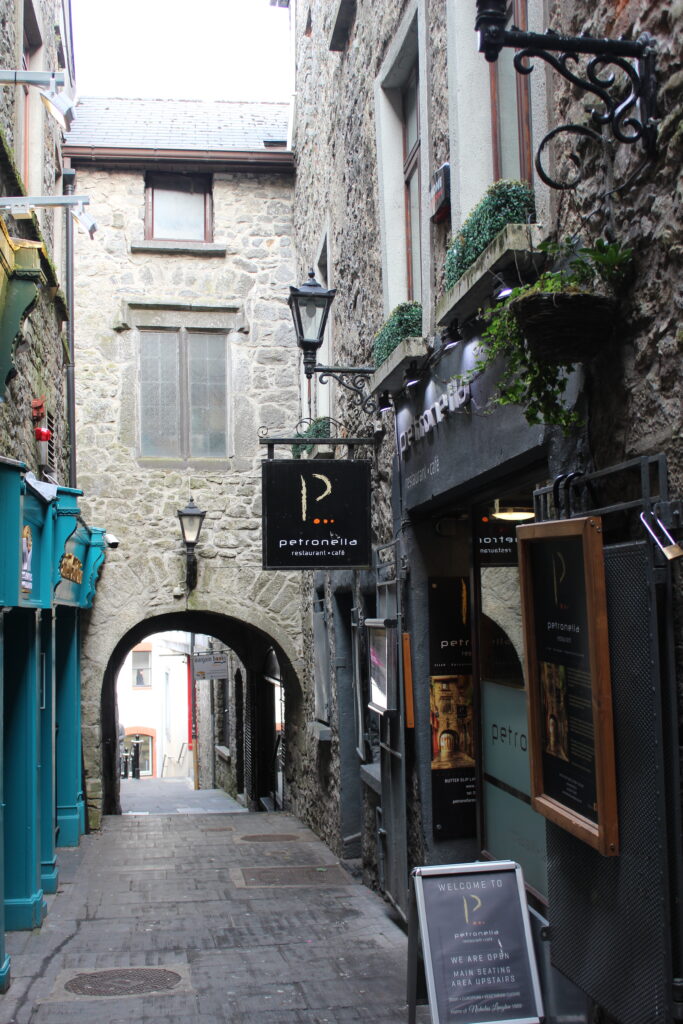
Kilkenny is a 400 year old city. This is the Butter Slip of the market; thick stone buildings on all sides kept it cool to market the butter.
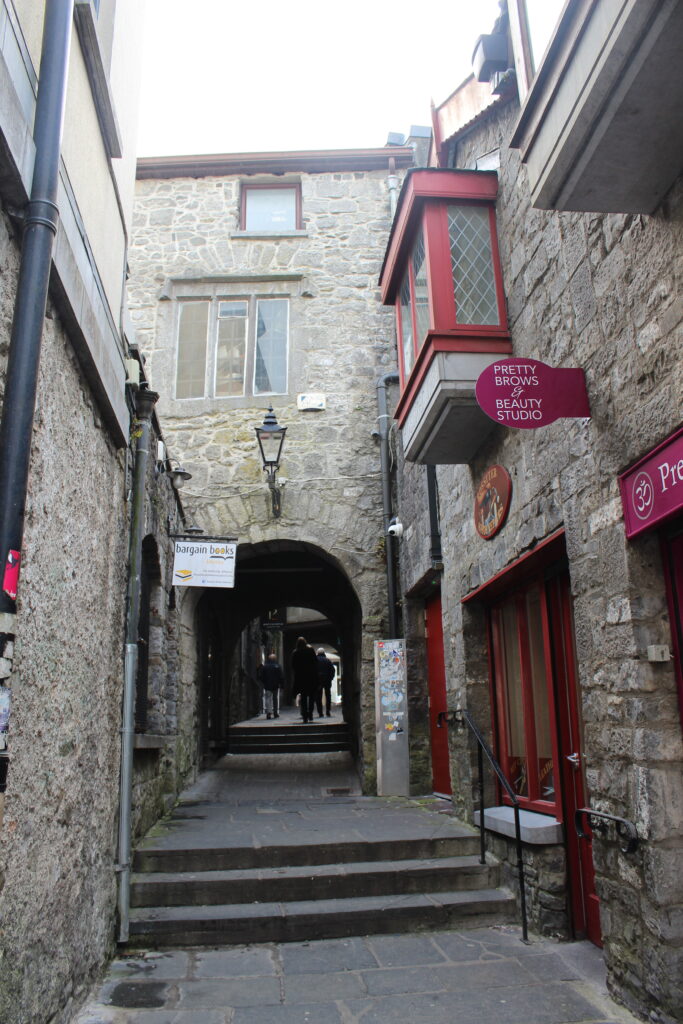
The Butter Slip from the other side of the arch
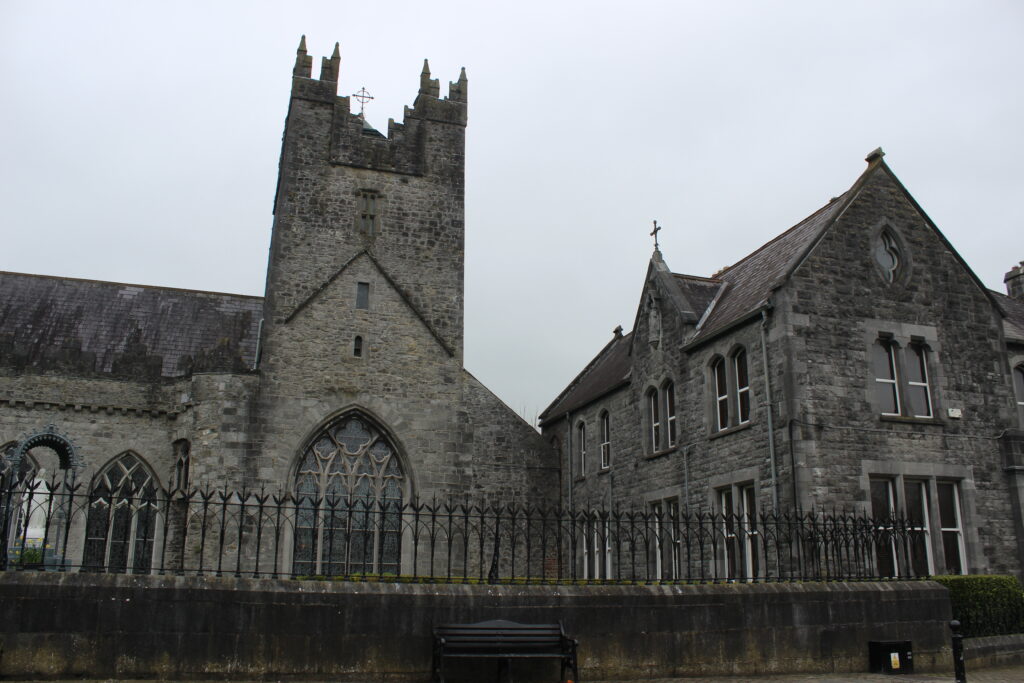
All medieval towns had an abbey just outside the town walls. The Black Abbey was built in 1225. Tower and windows are original.
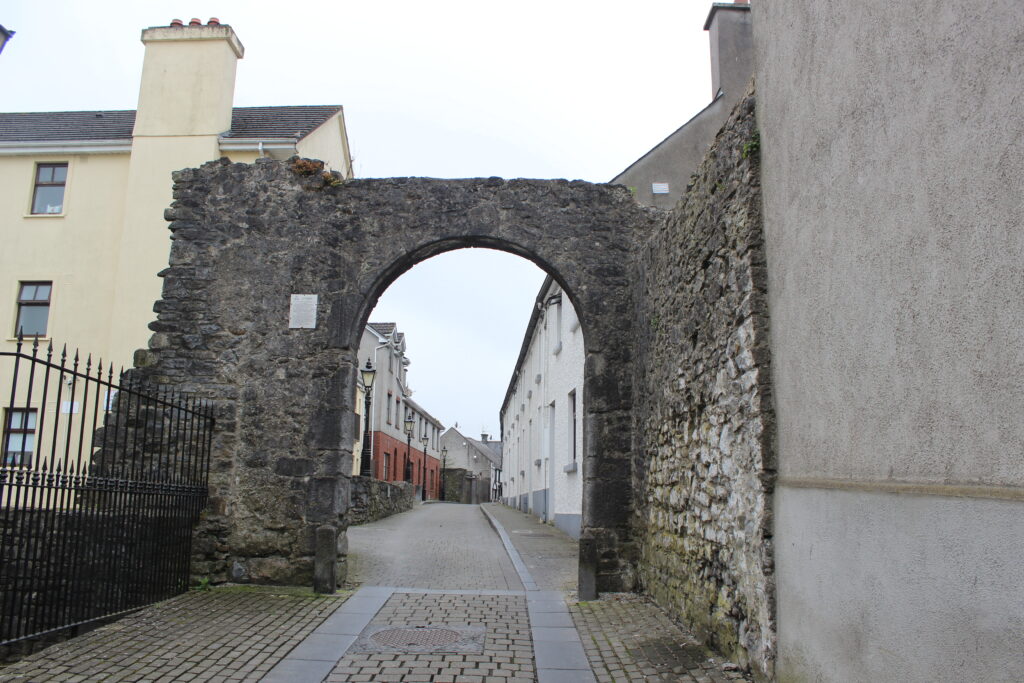
The Black Freren Gate is an original gate that led from the abbey to the city.
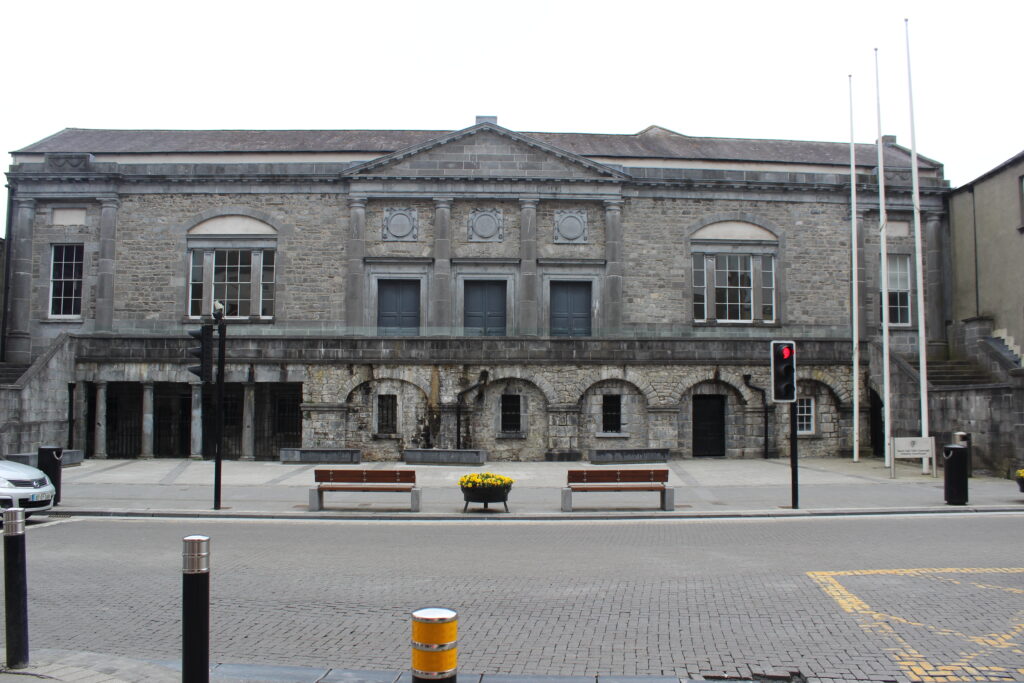
Currently the Kilkenny Court House, was Grace Castle in 1210, was the prison from 1556 to end of 18th century

Ballycotton Lighthouse, built in the 1840’s, is one of only two black lighthouses in Ireland.
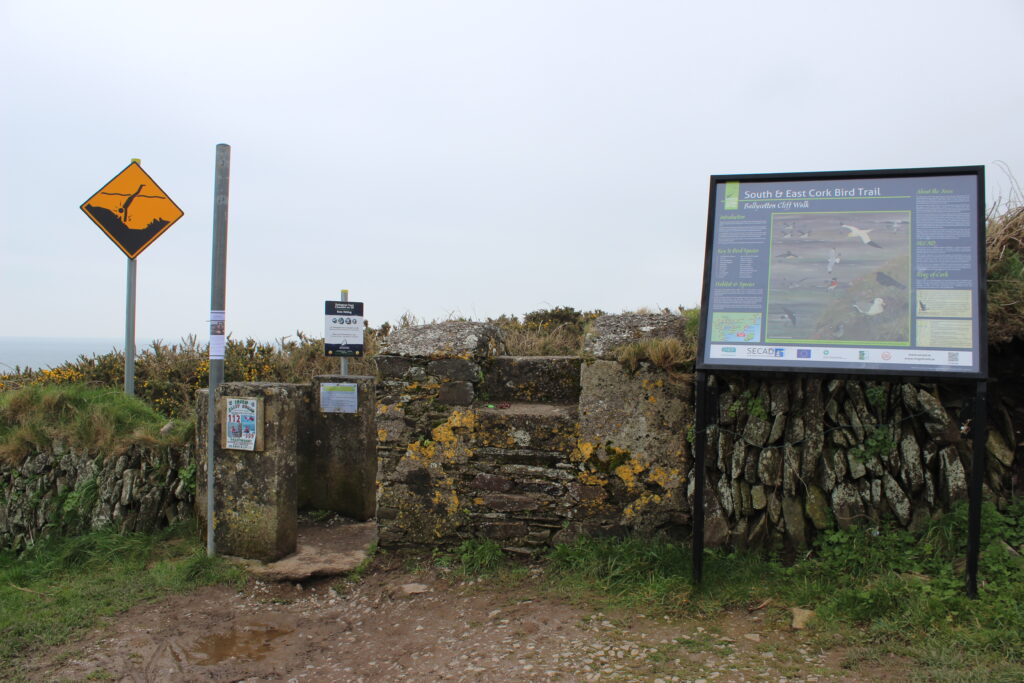
Ballycotton Cliff Walk, 7.4 k trail with sea on oneside and landscape on the other
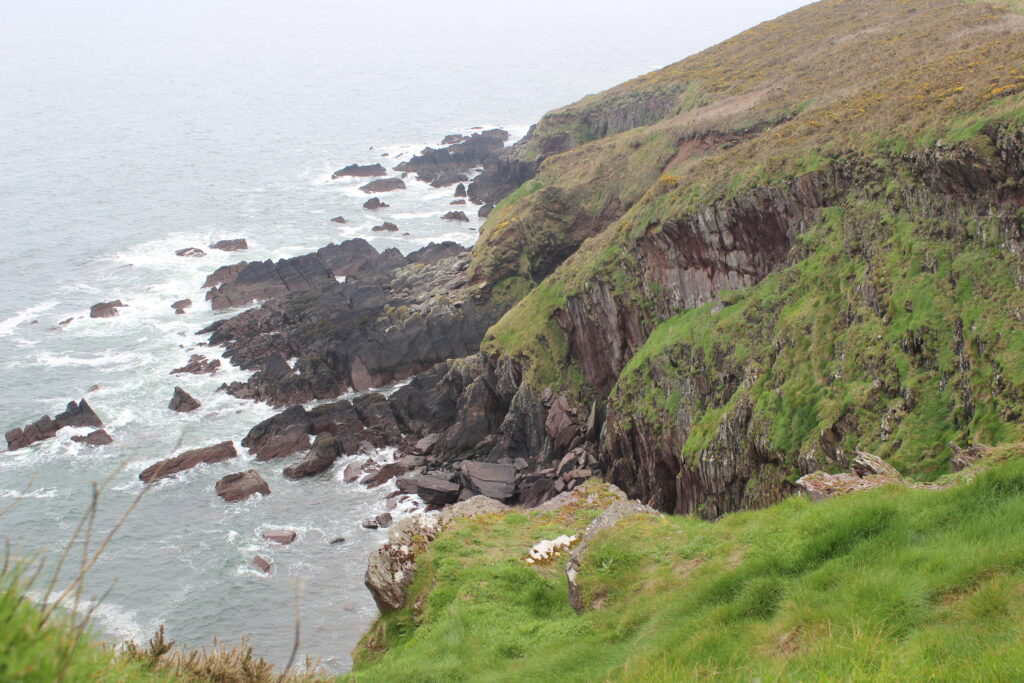
Rugged Irish coast of which legends have been made
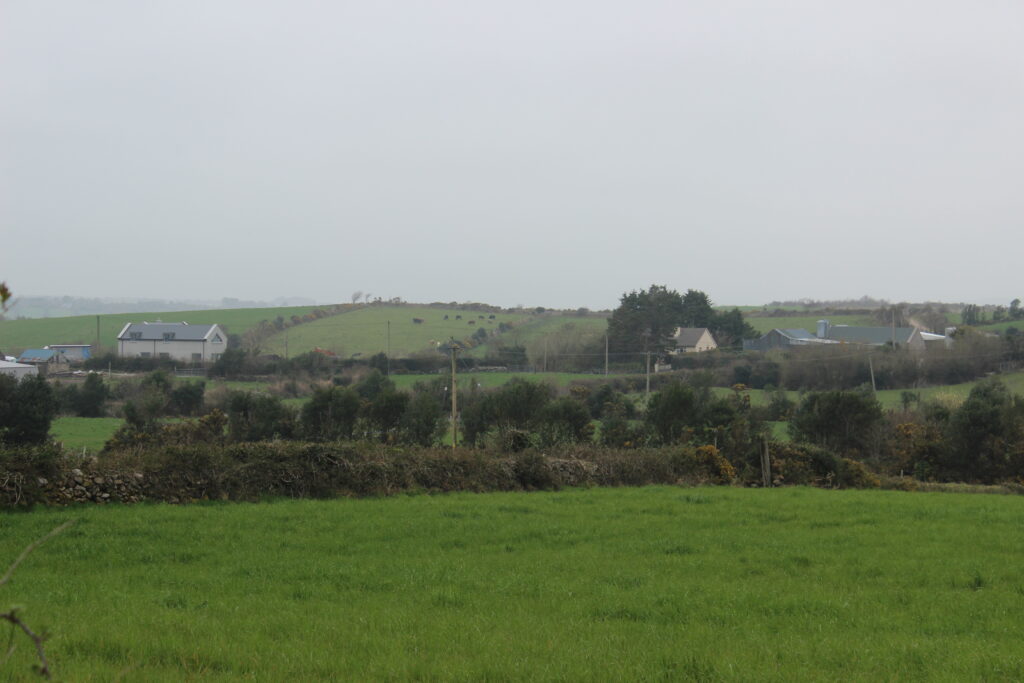
Ballycotton, a small fishing village also known for potatoes, is actually a re-settlement of an old village that is now completely underwater.
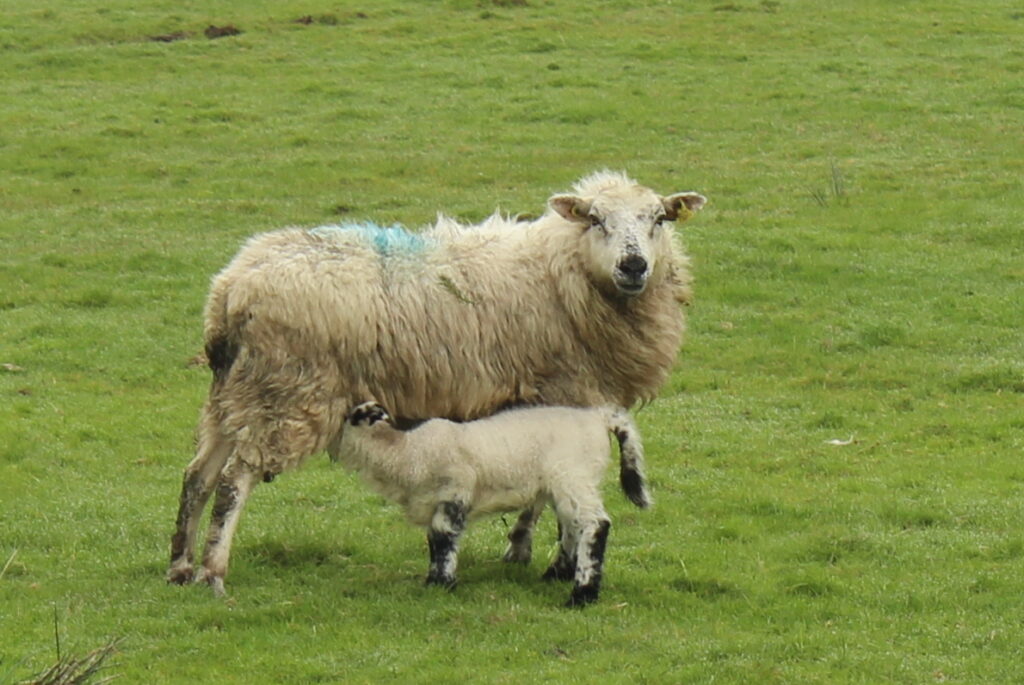
How quaint to be there in the spring
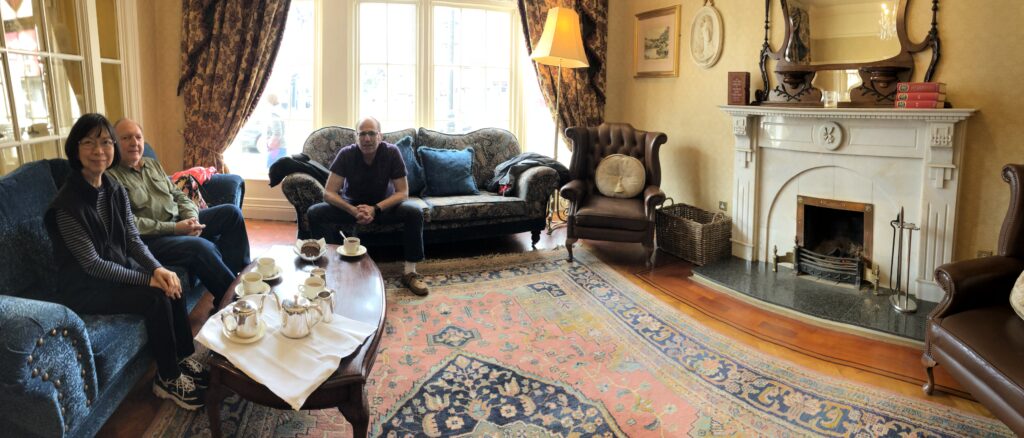
Tea at the Arbitus Hotel in Killarney; Killarney history begins with a monastery founded in 640.
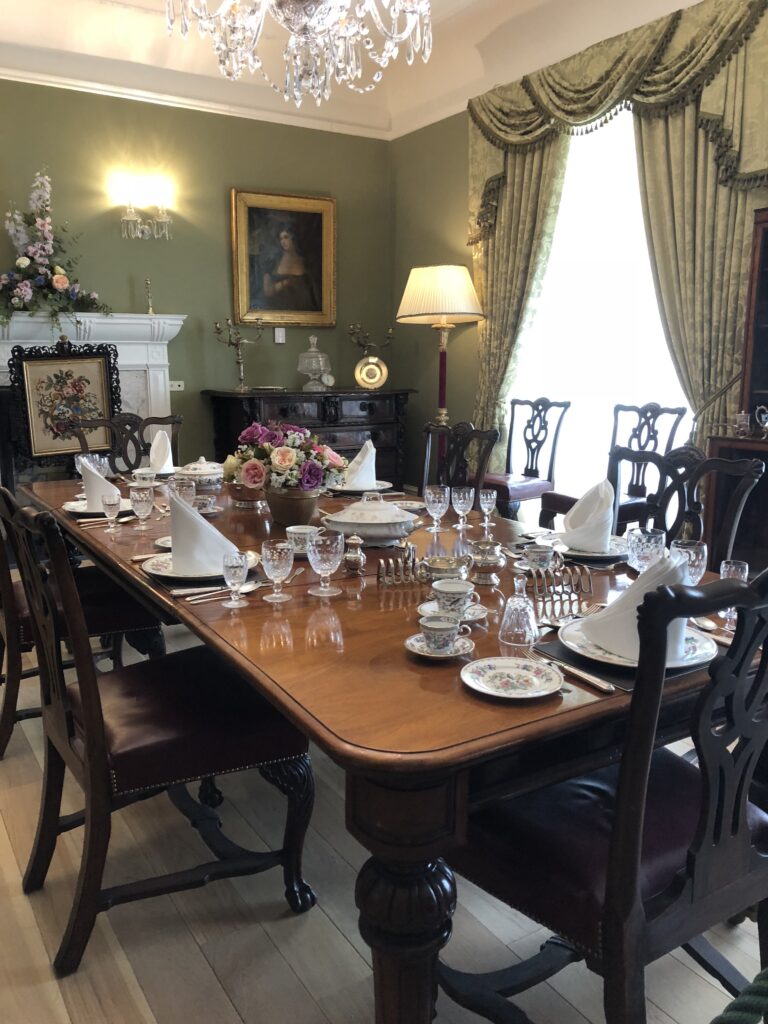
Killarney House was once a stable block for a French chateau, built in 1720 but destroyed by fire. Current house was created in 1914. The dining room is set with traditional table ware.
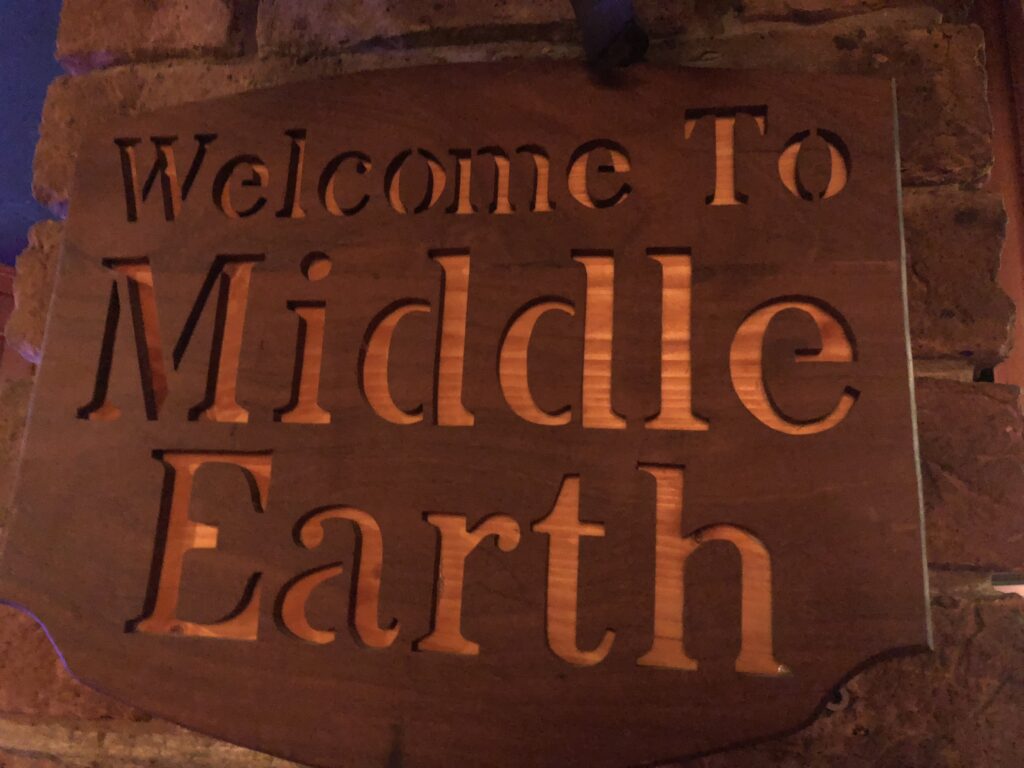
My favorite pub in Killarney
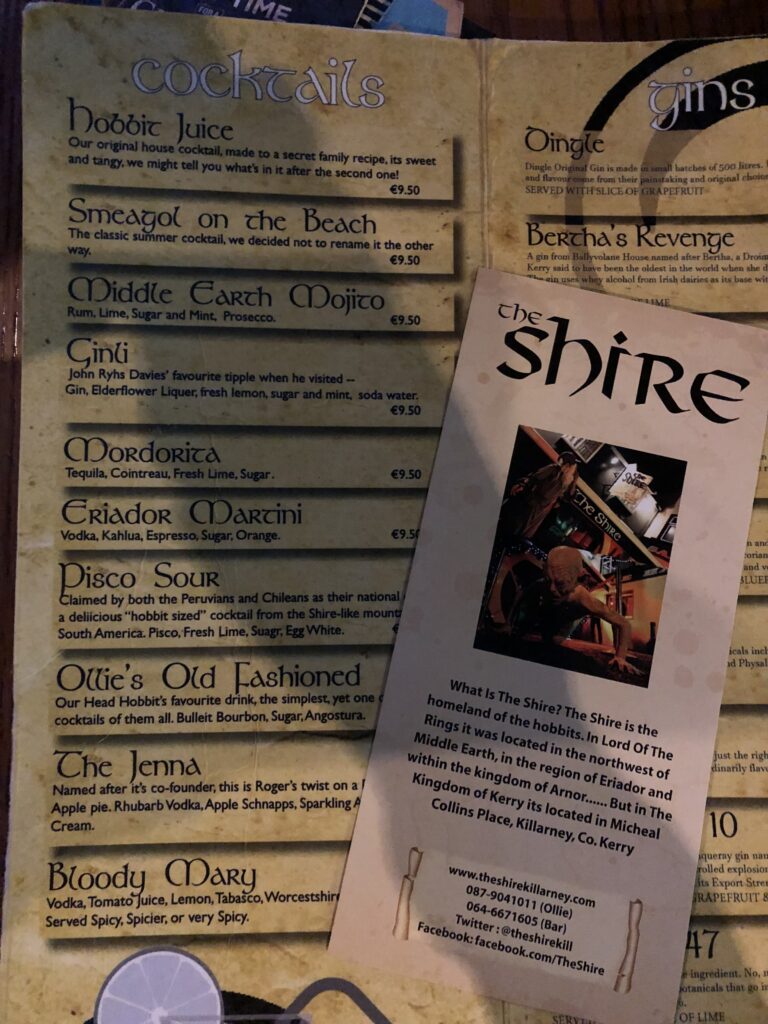
Menu of the Shire
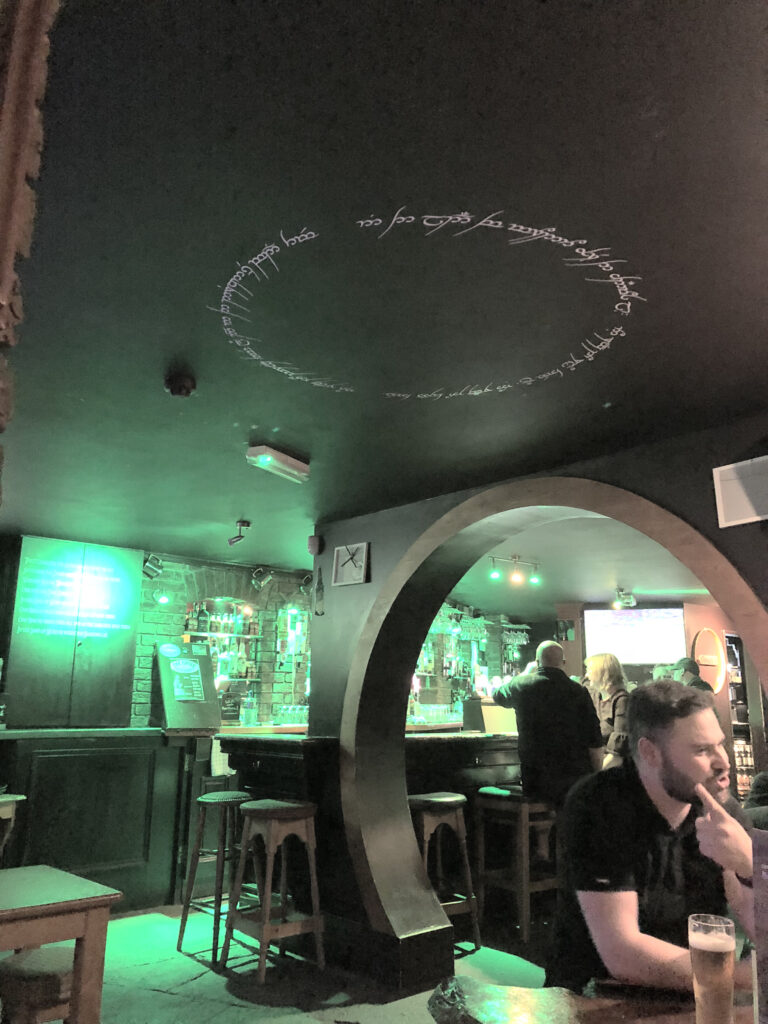
Hobbit hole but we couldn’t find any hobbits
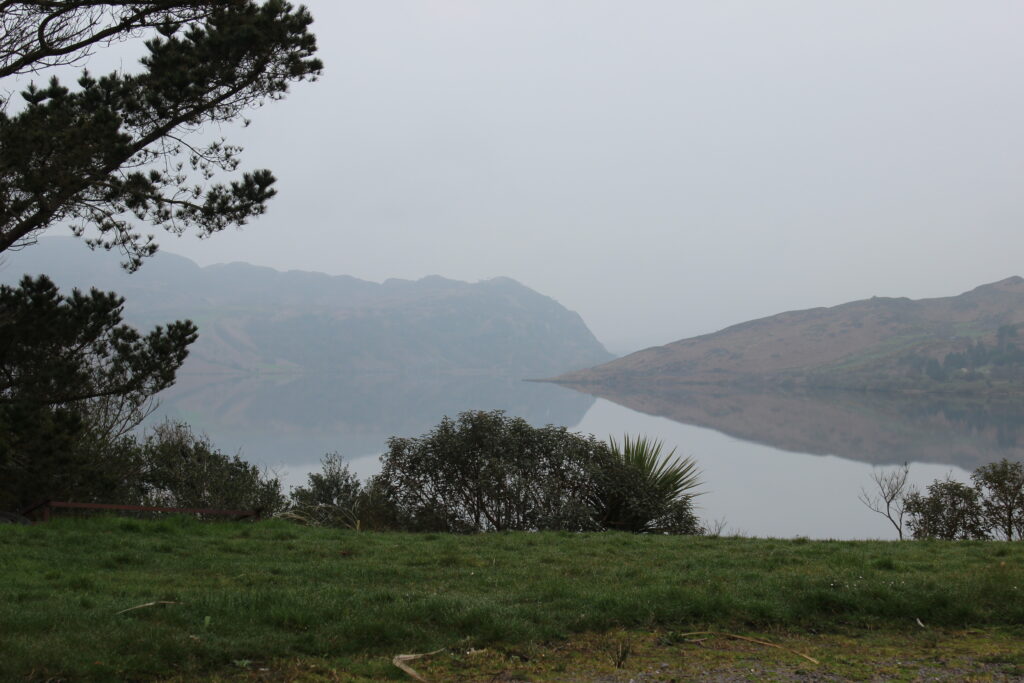
Misty, foggy morning on the Ring of Kerry, a 111 mile loop of scenic south-western Ireland
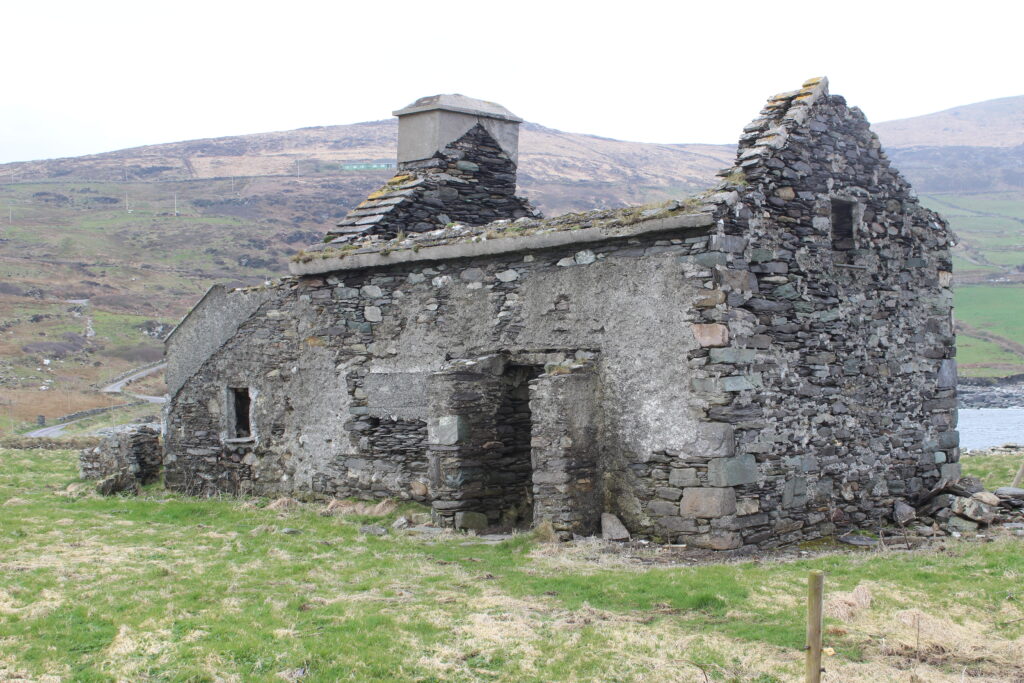
Ruins of castles and cottages dot the Irish countryside everywhere.
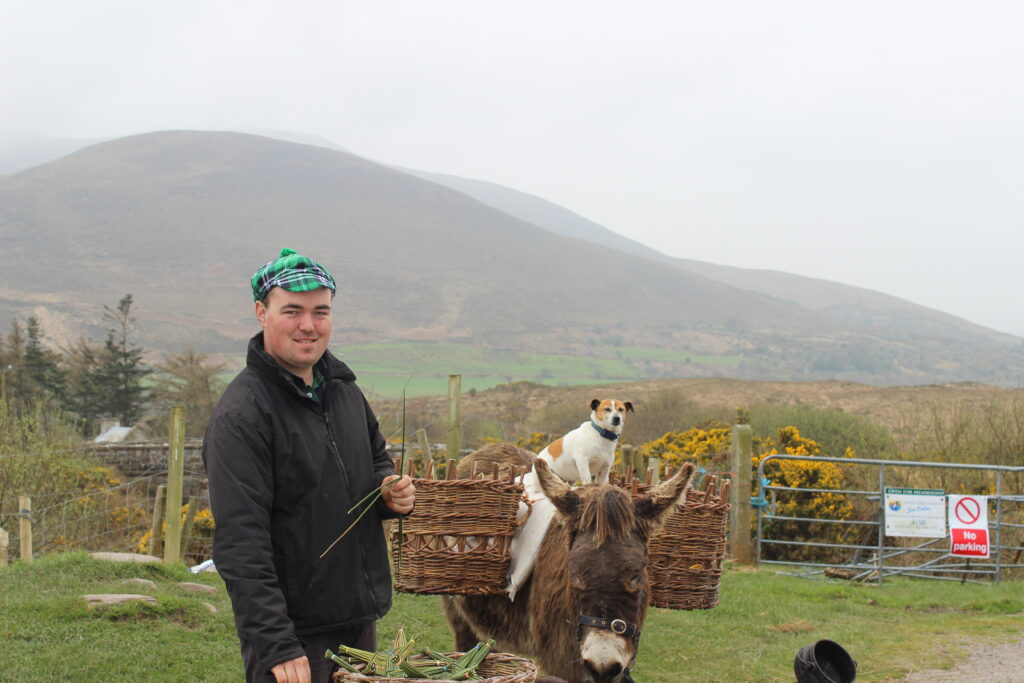
Irish gentleman selling his wares on the side of the road
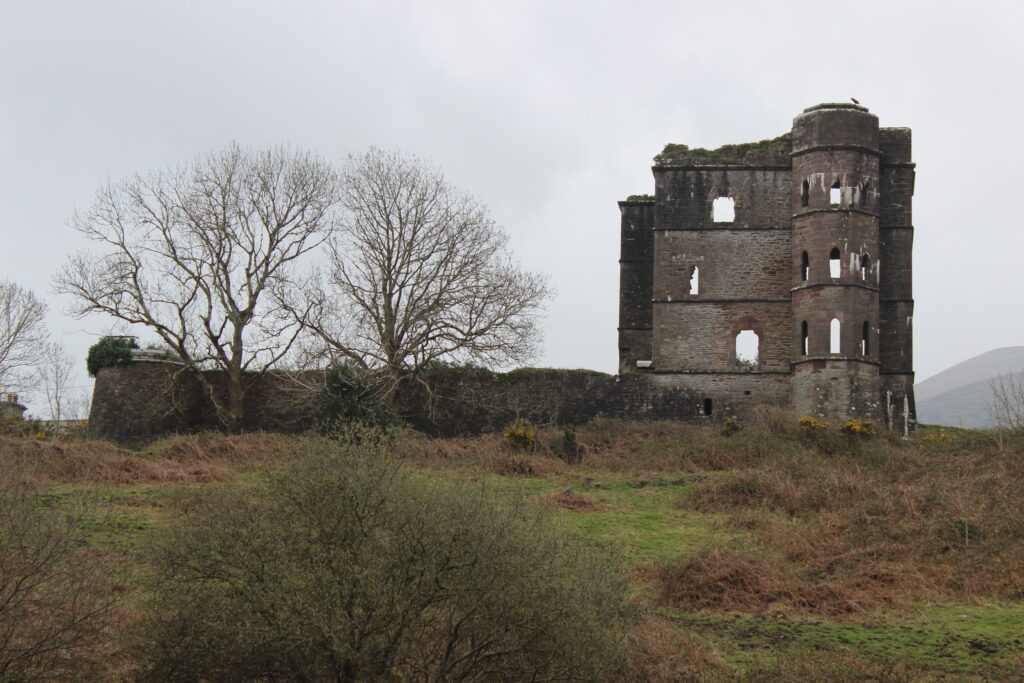
One of the many ruins of castles abandoned in the countryside
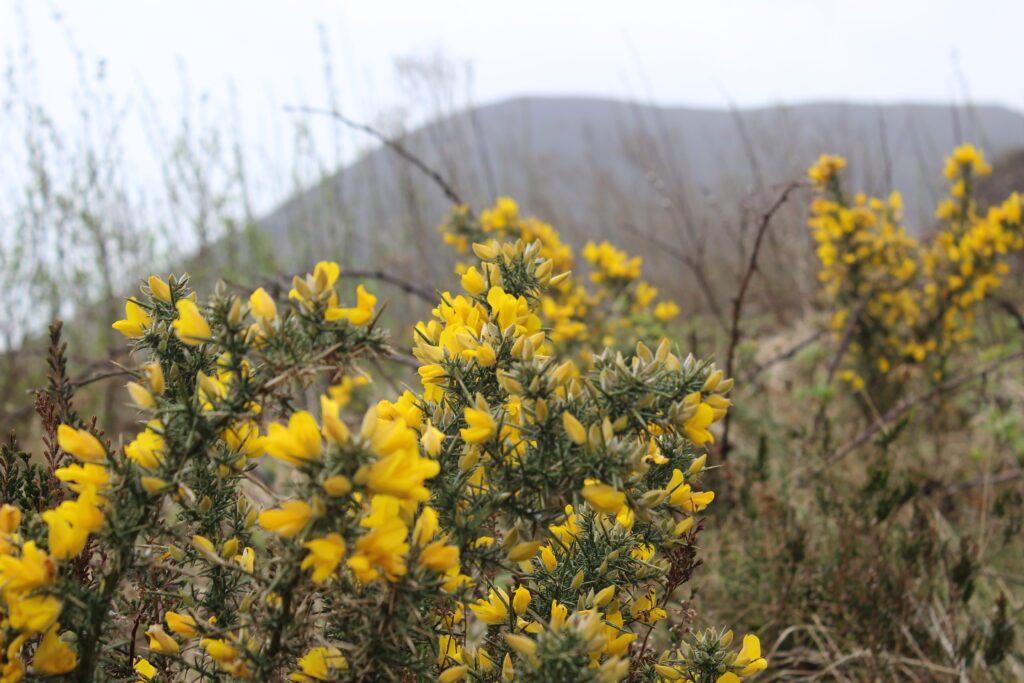
Gorse, also known as furze or whin, dots the landscape and is one of the few plants that can withstand the harsh Irish conditions.
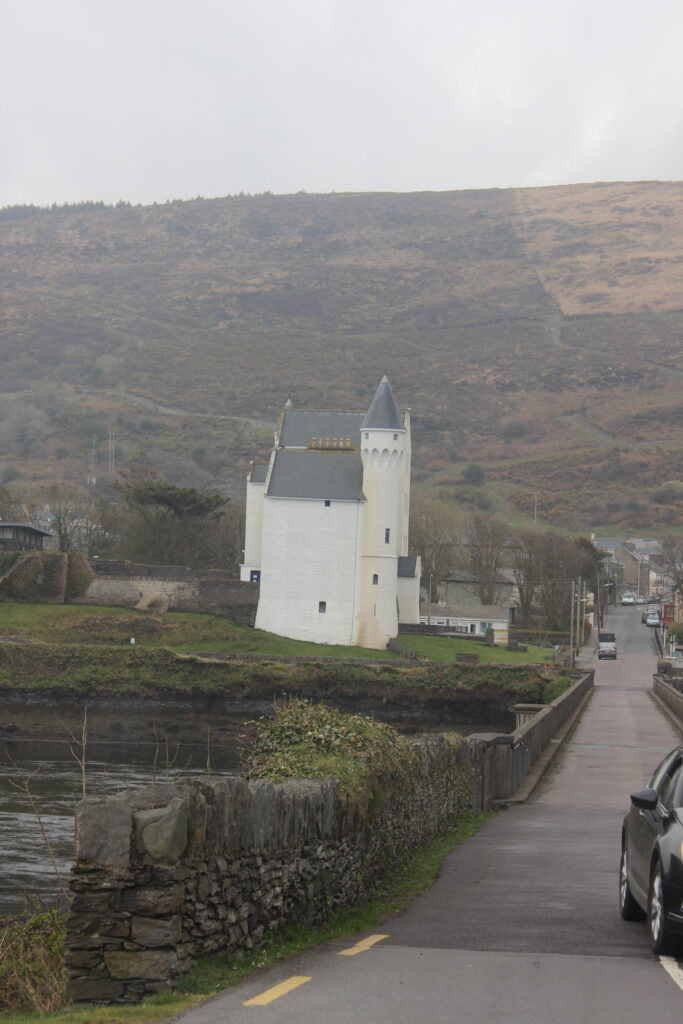
The Barracks, built in 1870’s by the British to protect telegraph cable to America
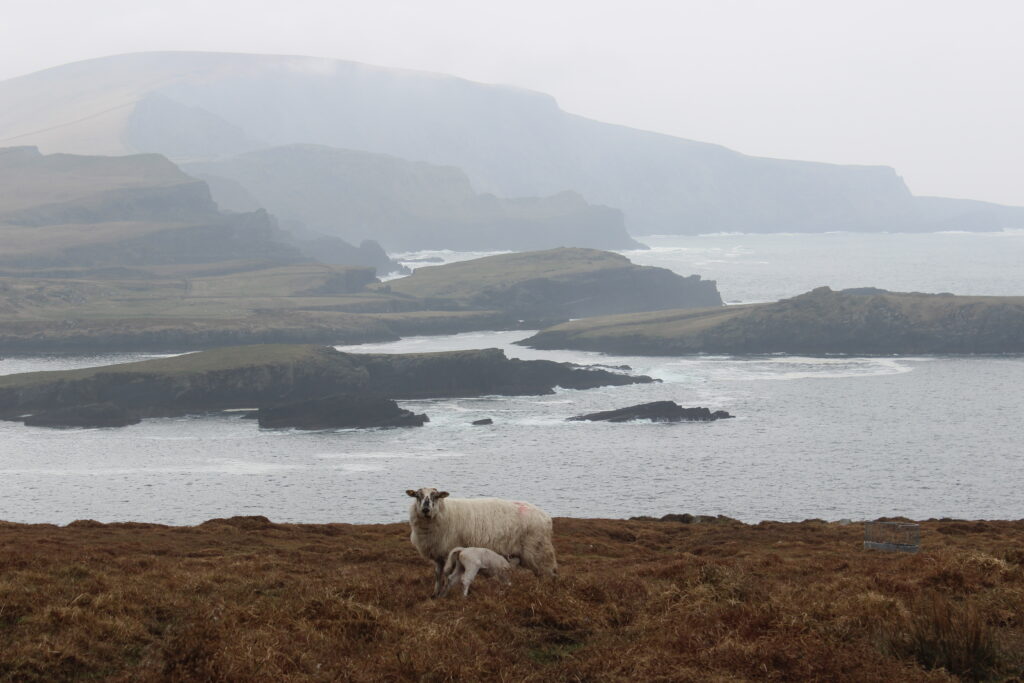
Typical Irish coastline; everywhere are sheep which provide for Irish wool
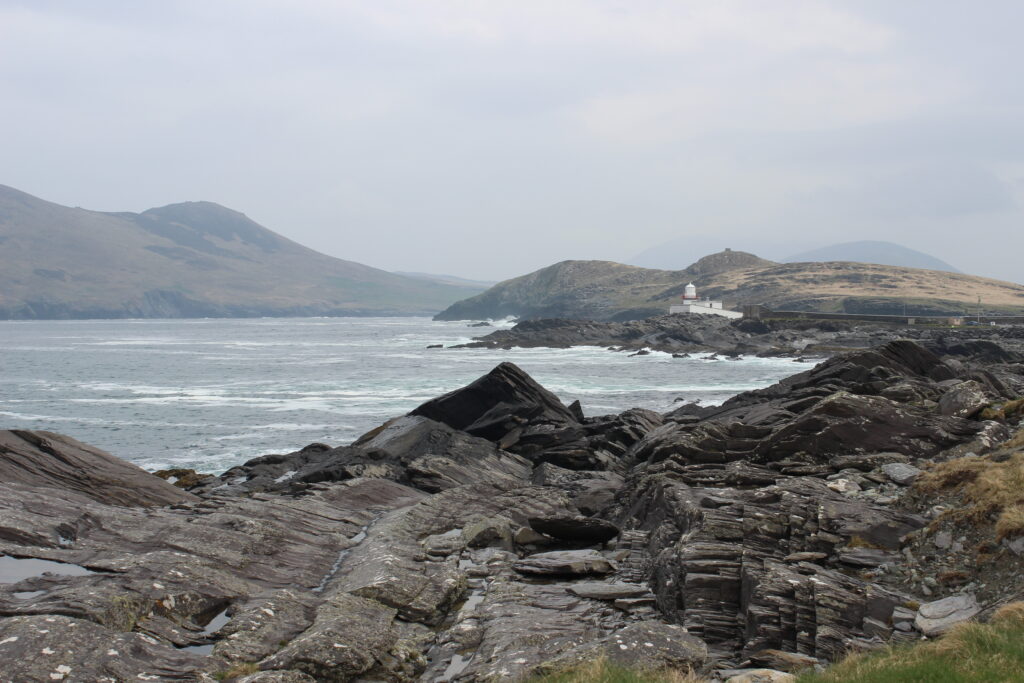
One of the Skellig lighthouses, built about 1826, major guide of southwest Ireland
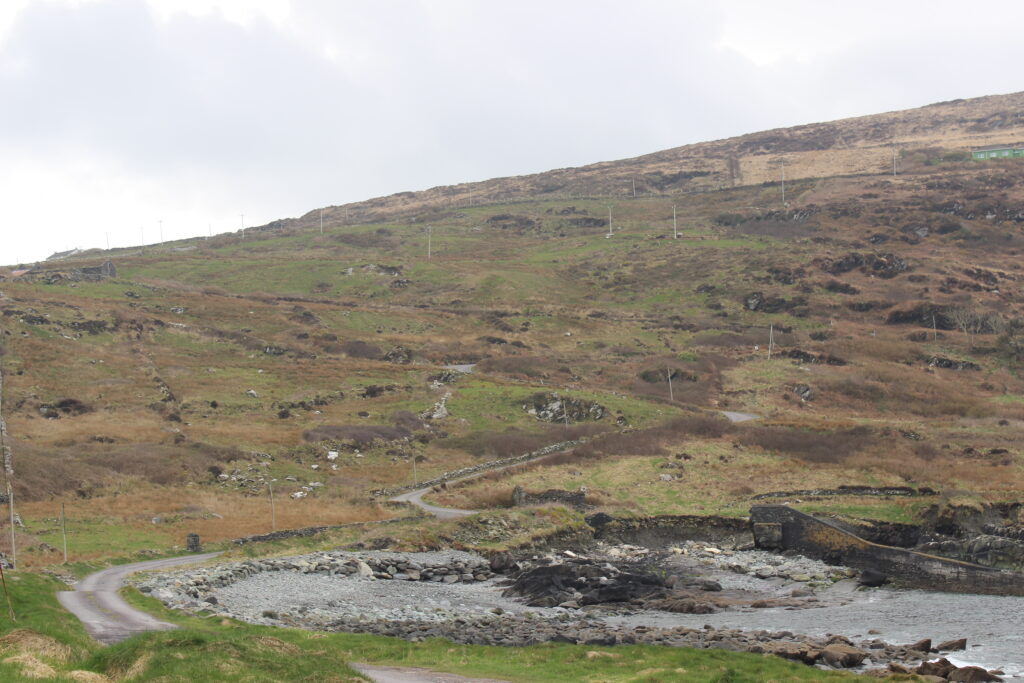
The two way road we drove down and then back up so we could see the lighthouse
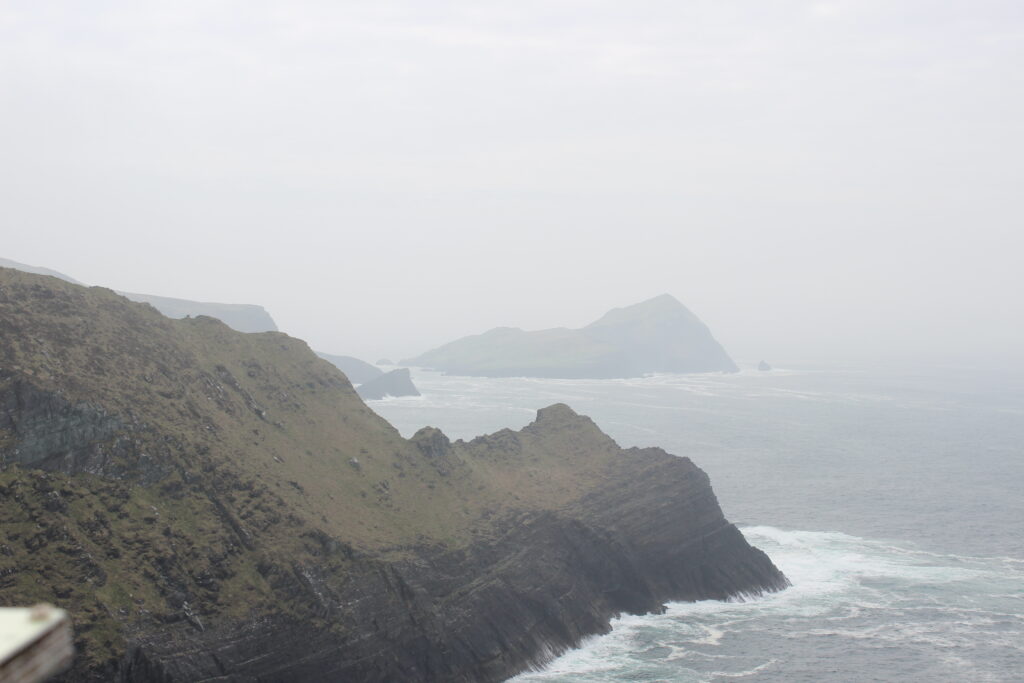
In the distance, Skellig Michael, site of a 6th century monastery
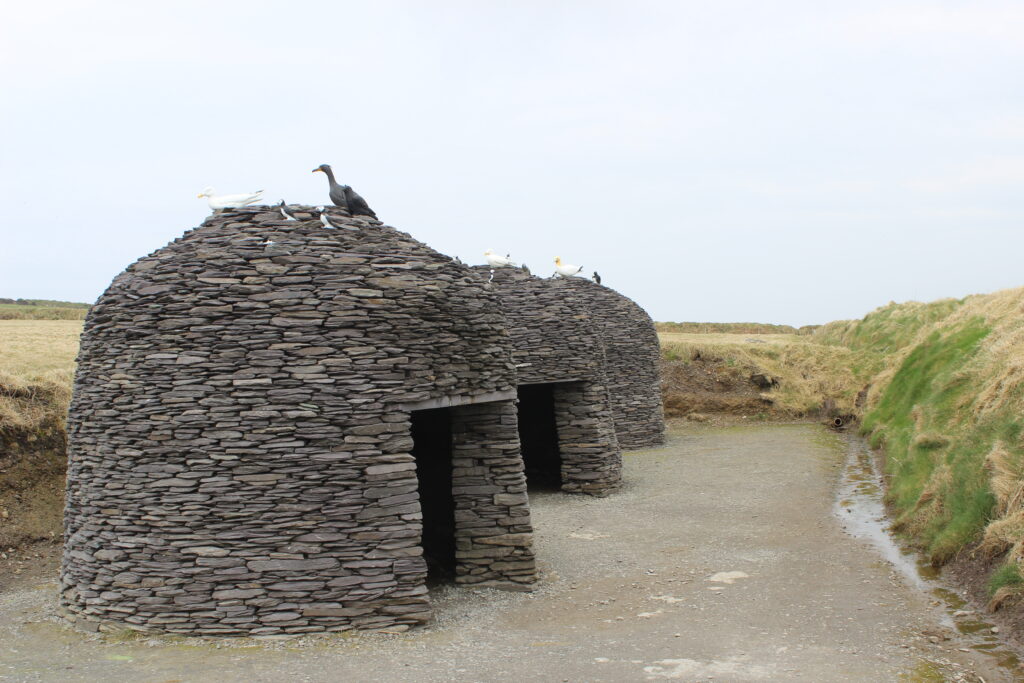
Reproductions of bee hive huts used by monks on Skellig Michael on the Kerry Cliffs
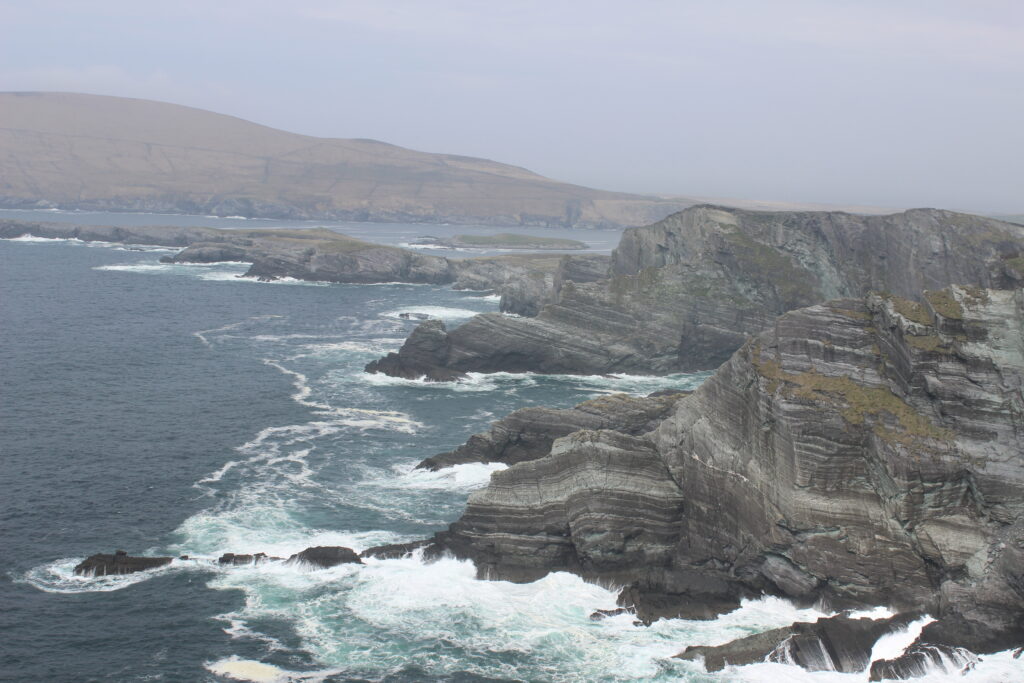
Irish coastline from the Kerry Cliffs
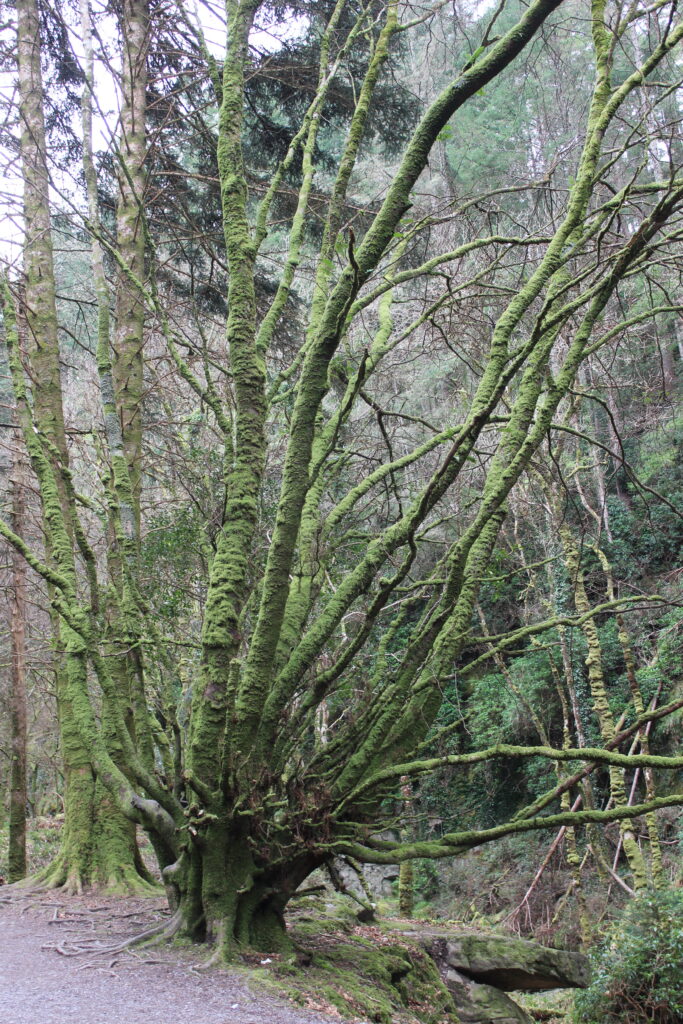
Killarney National Park
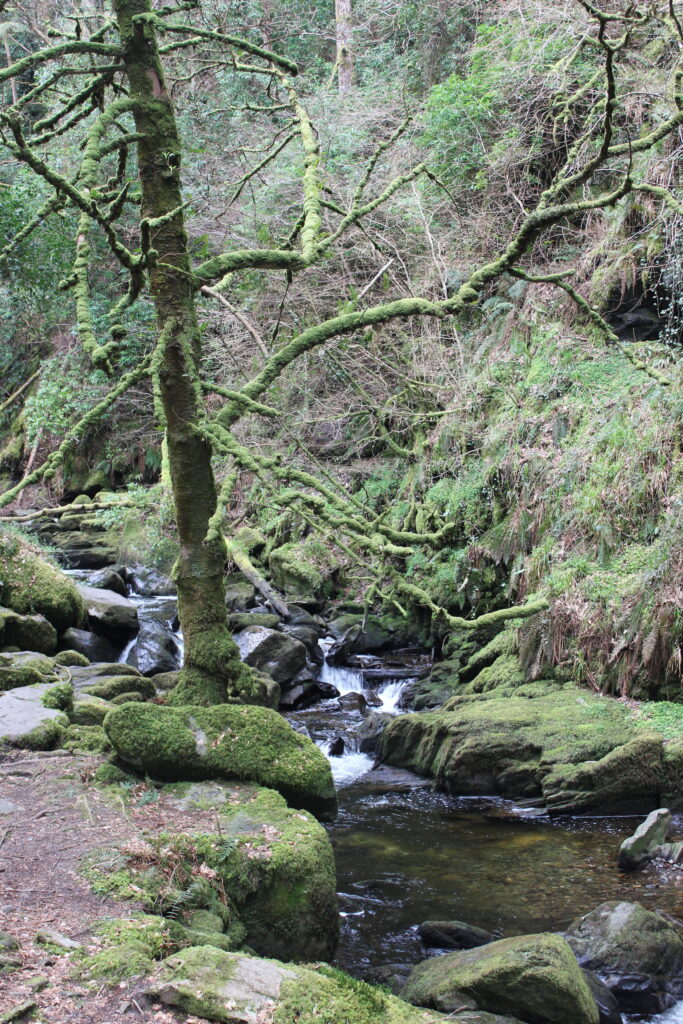
Easy to see why Ireland is the green country.
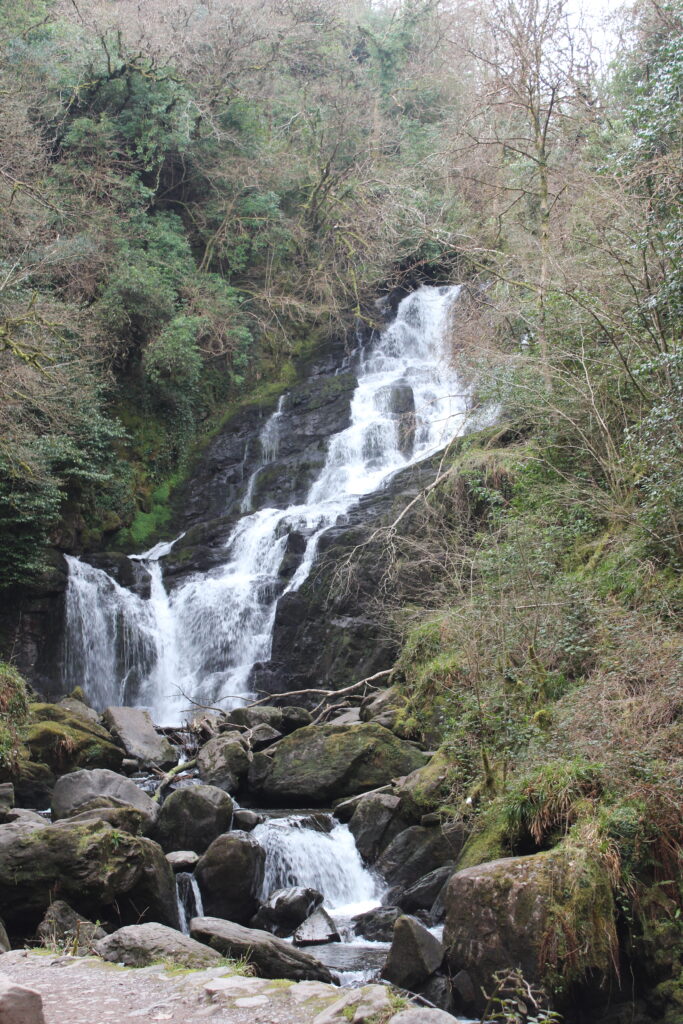
Torc Waterfall in Killarney National Park
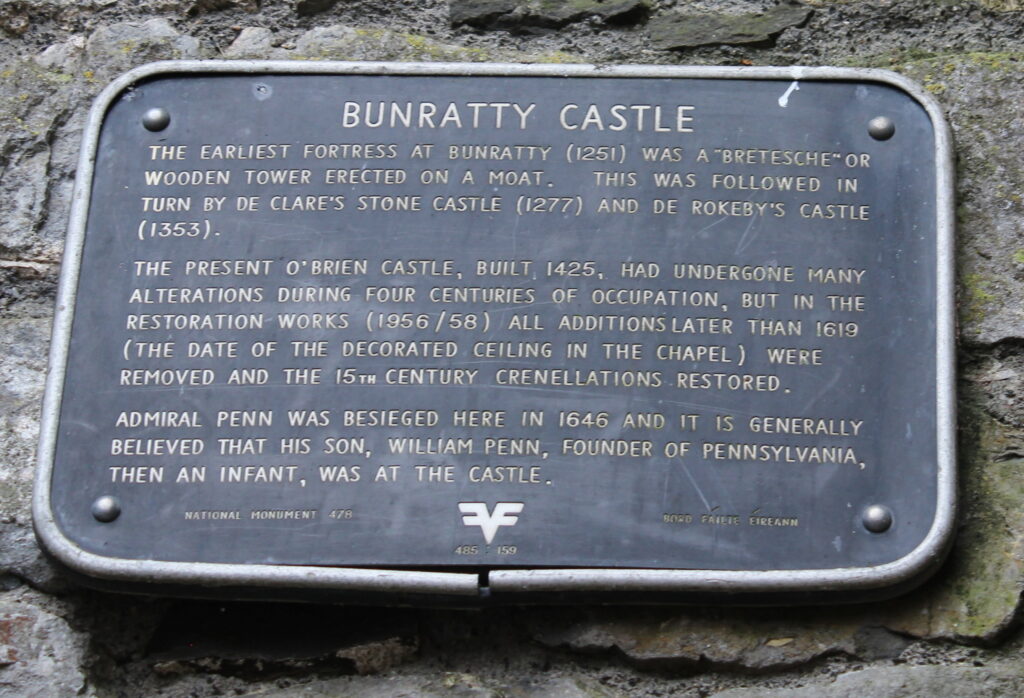
Bunratty Castle and village is a living museum.
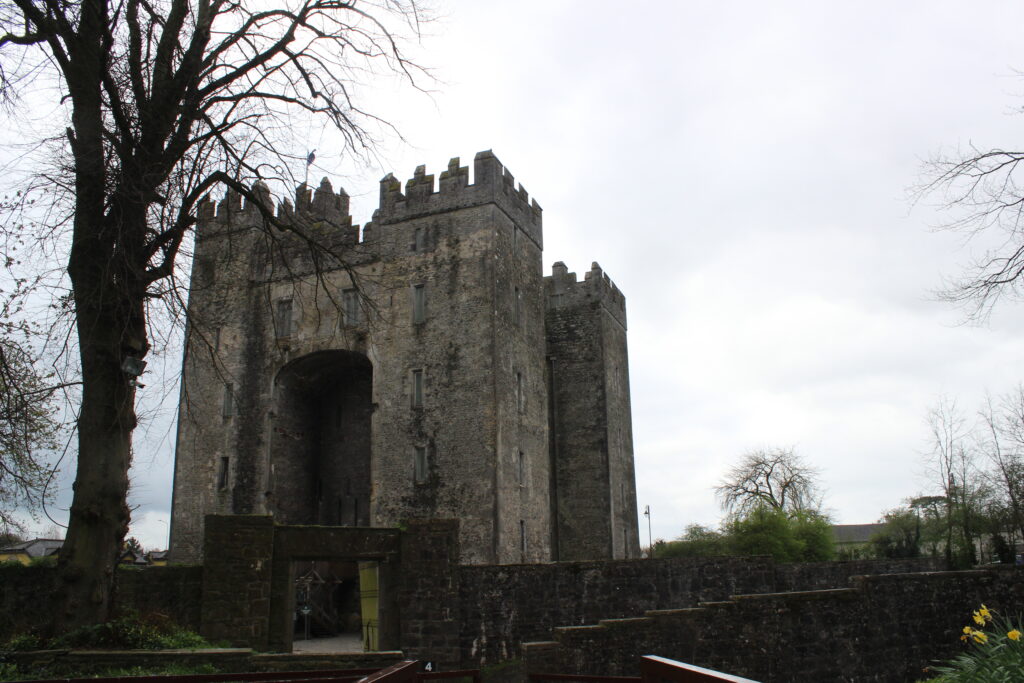
The castle protects the village and the lord of the castle is responsible for the safety of the villagers.
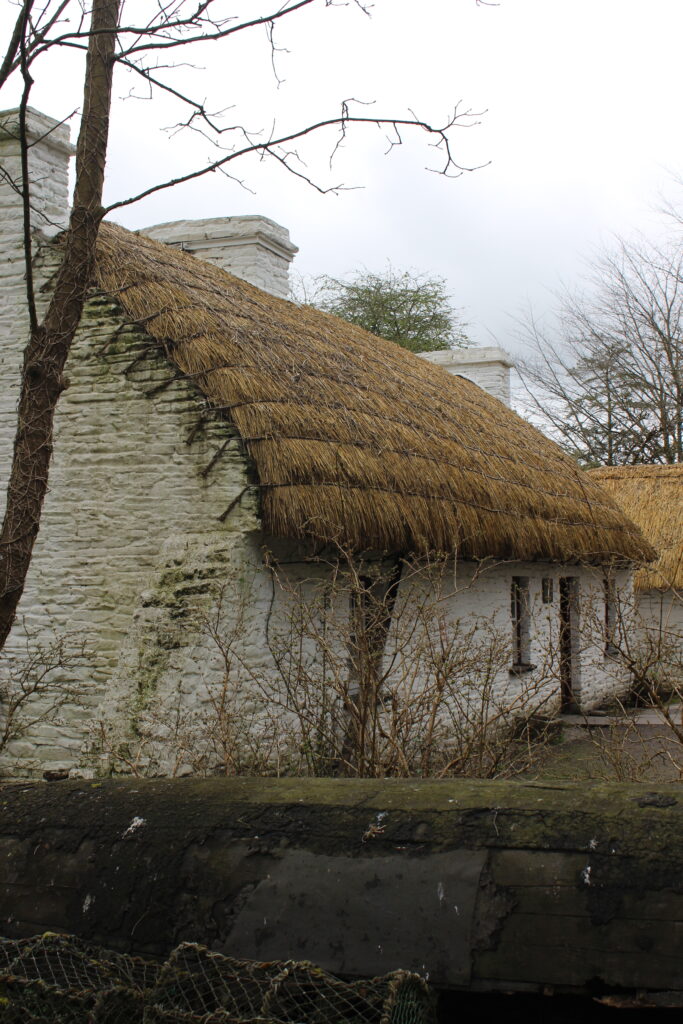
A typical sod roof Irish farm house
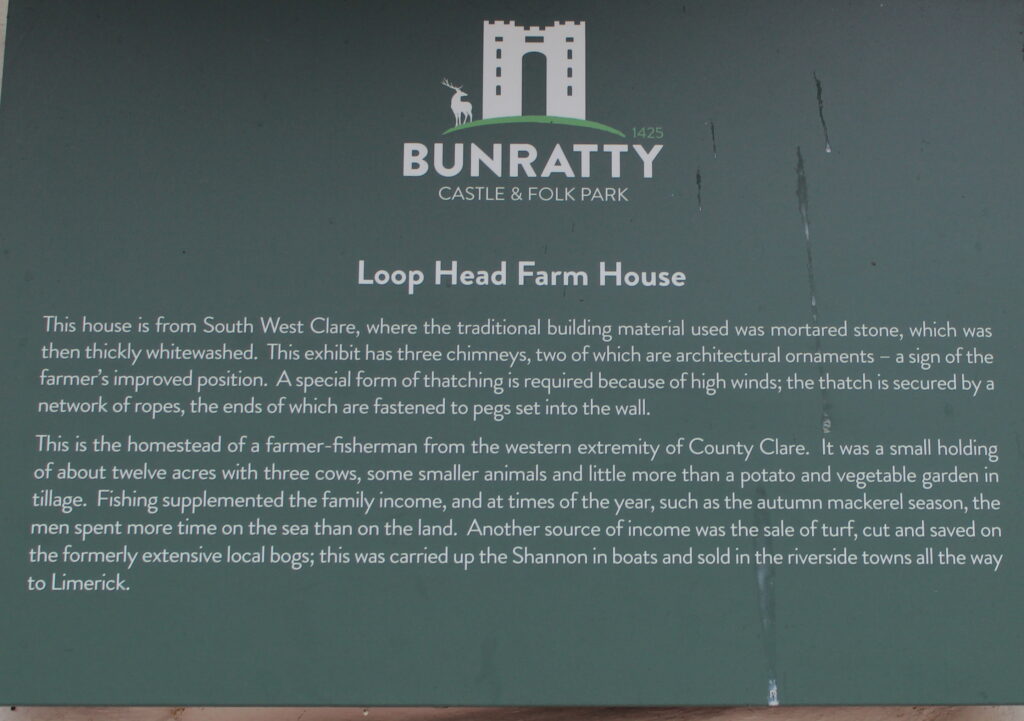
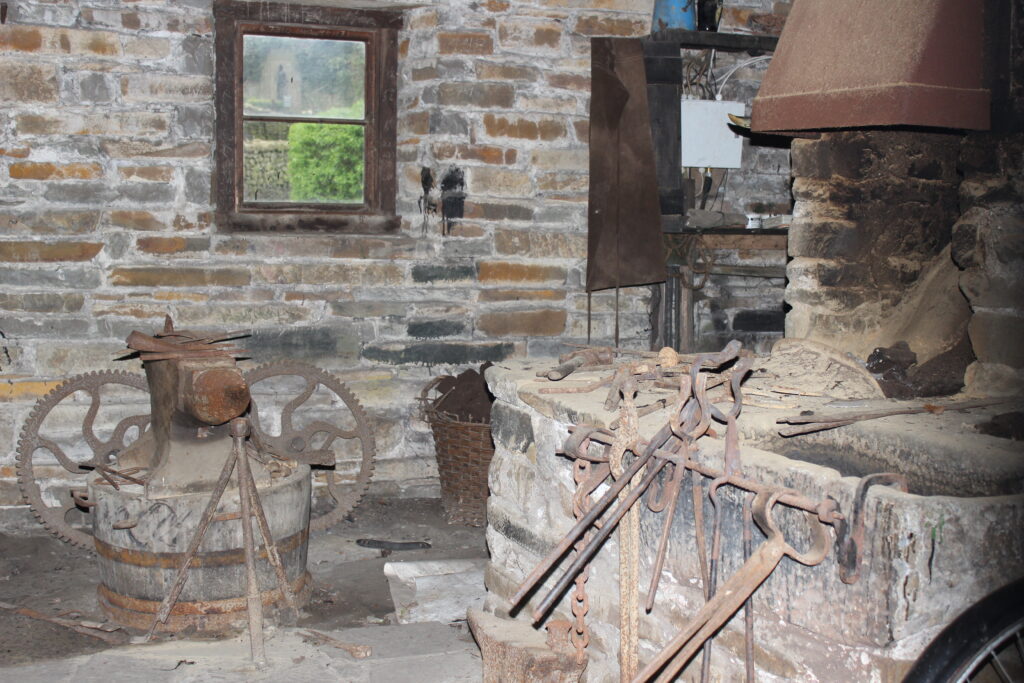
Blacksmith shops had no windows so the smith could see the color of the flames. The window here is for tourists to be able to see the shop.
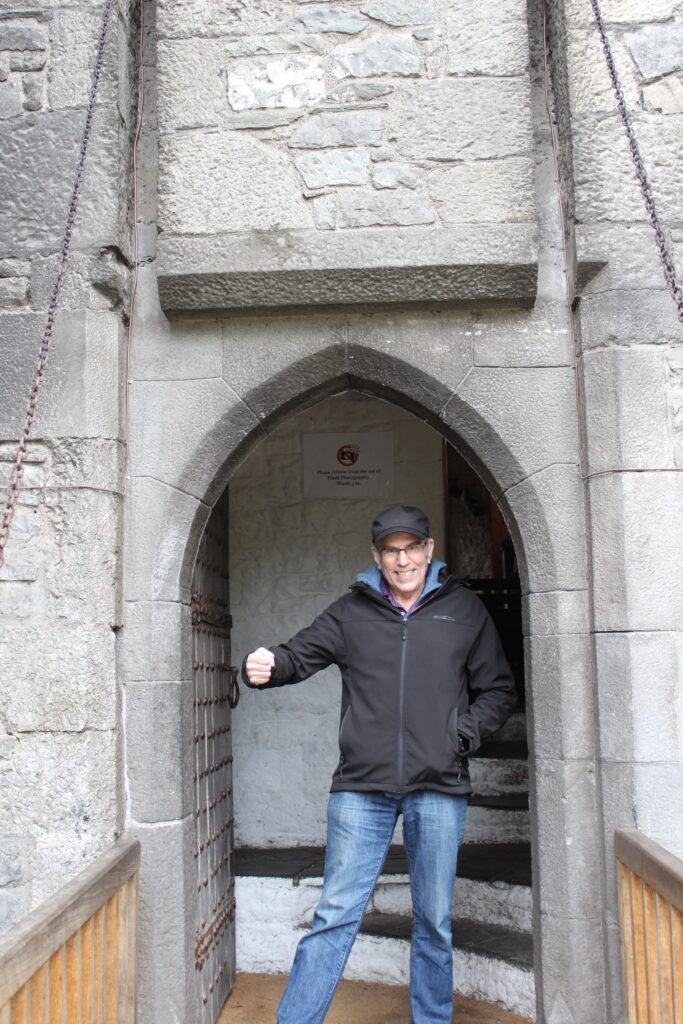
Joel is guarding the main entrance to the castle.
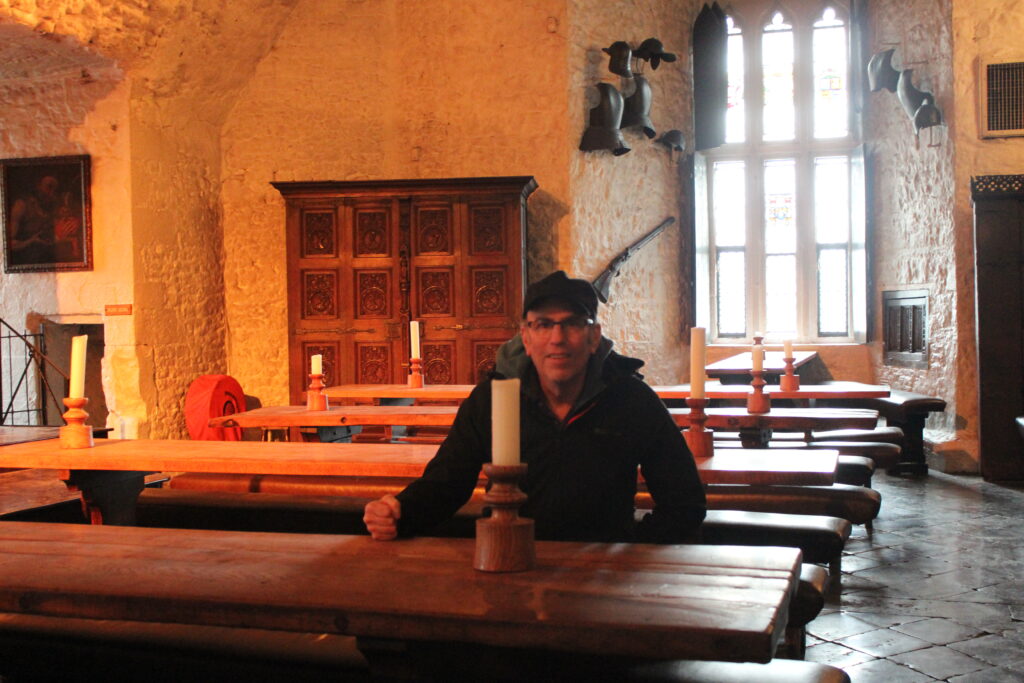
The Main Guard Room is where the knights ate, slept, and lived.
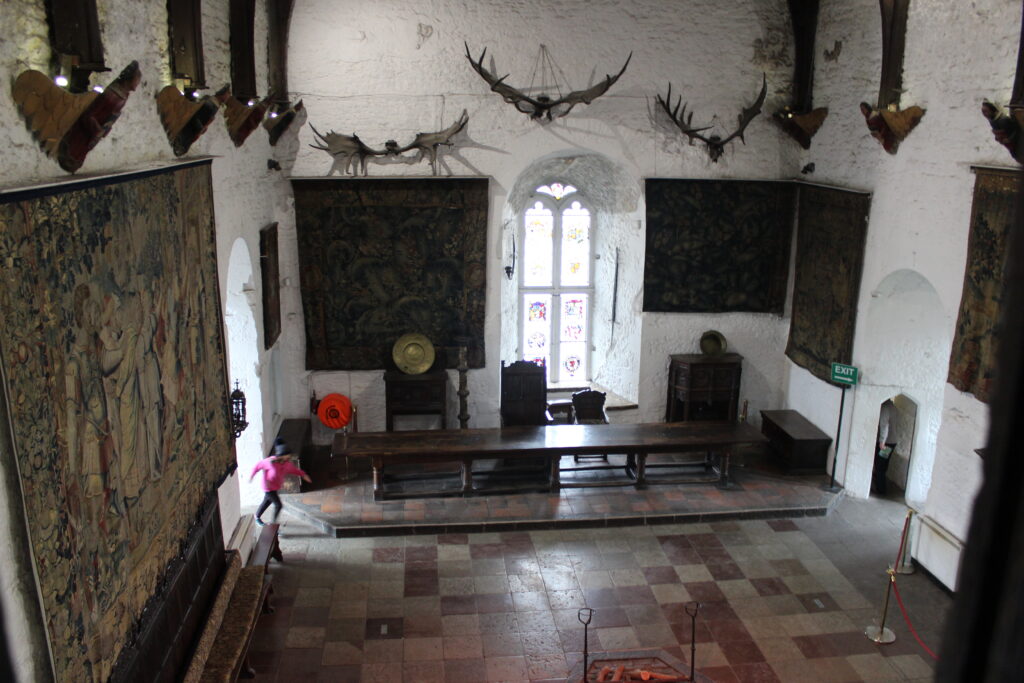
The Great Hall was the center of government and festivities.
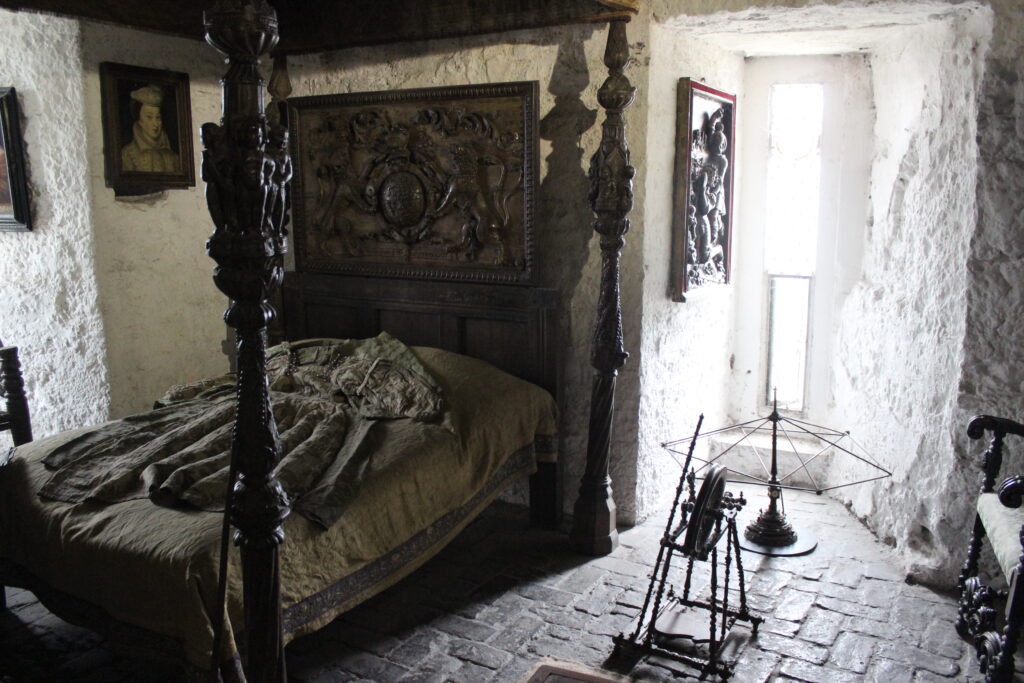
The earl’s bedroom was quite luxurious for Medieval times.
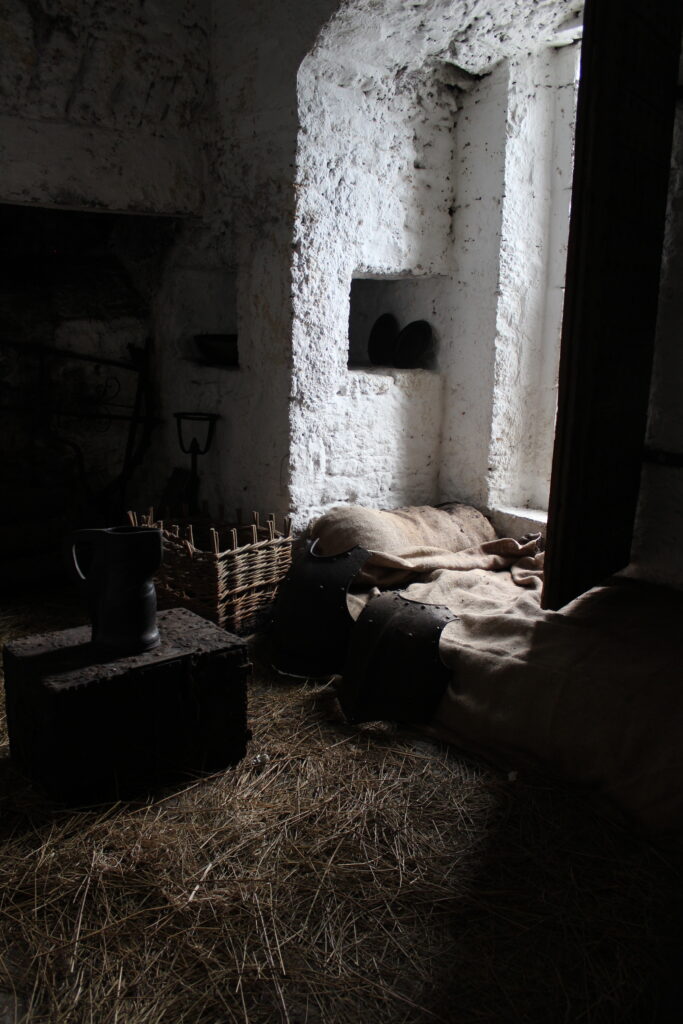
The butler’s bedroom, next to the earl’s bedroom, was a step above others with a straw sleeping palette.
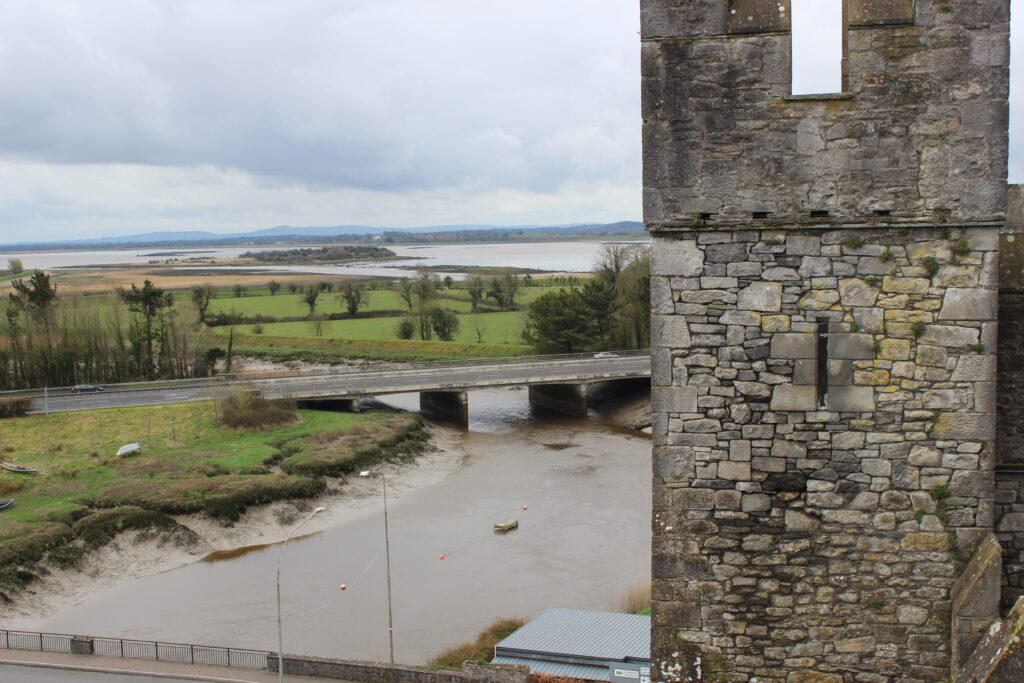
The view from the tower shows how well defensibly the castle was situated.
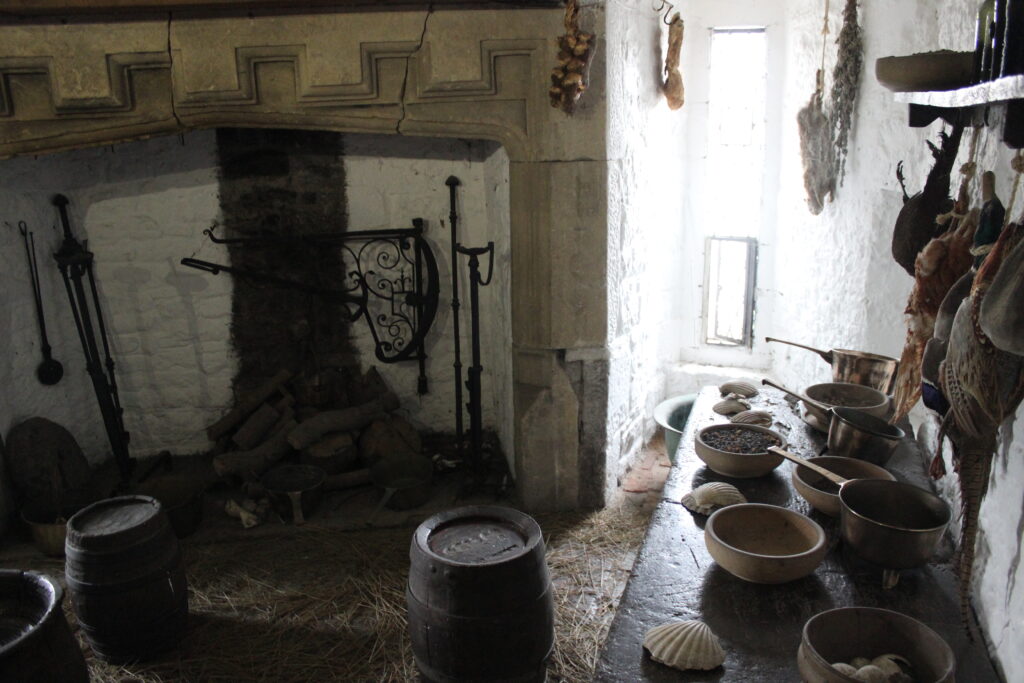
The kitchen served the entire castle and often many of the villagers.
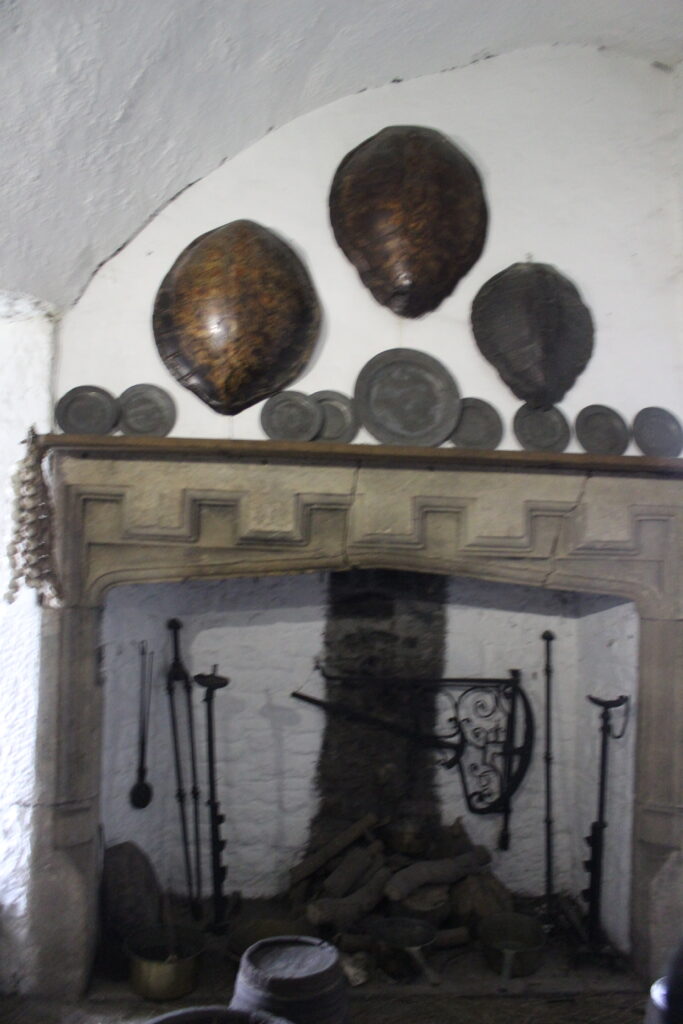
Tortoise shells functioned as serving trays.
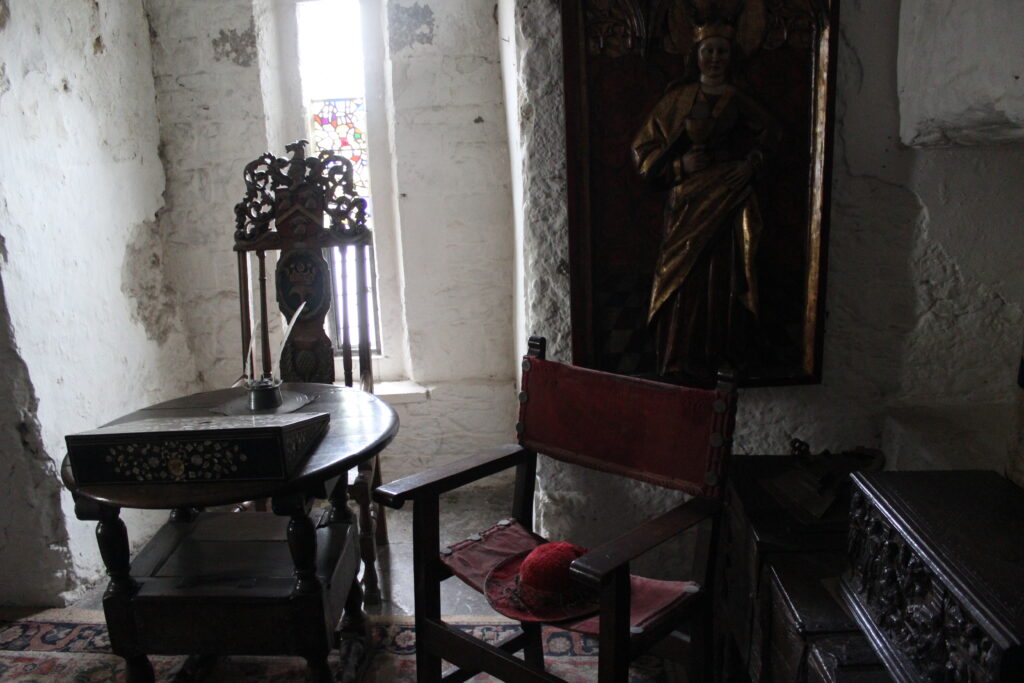
The chaplain’s room rivaled that of the earl.
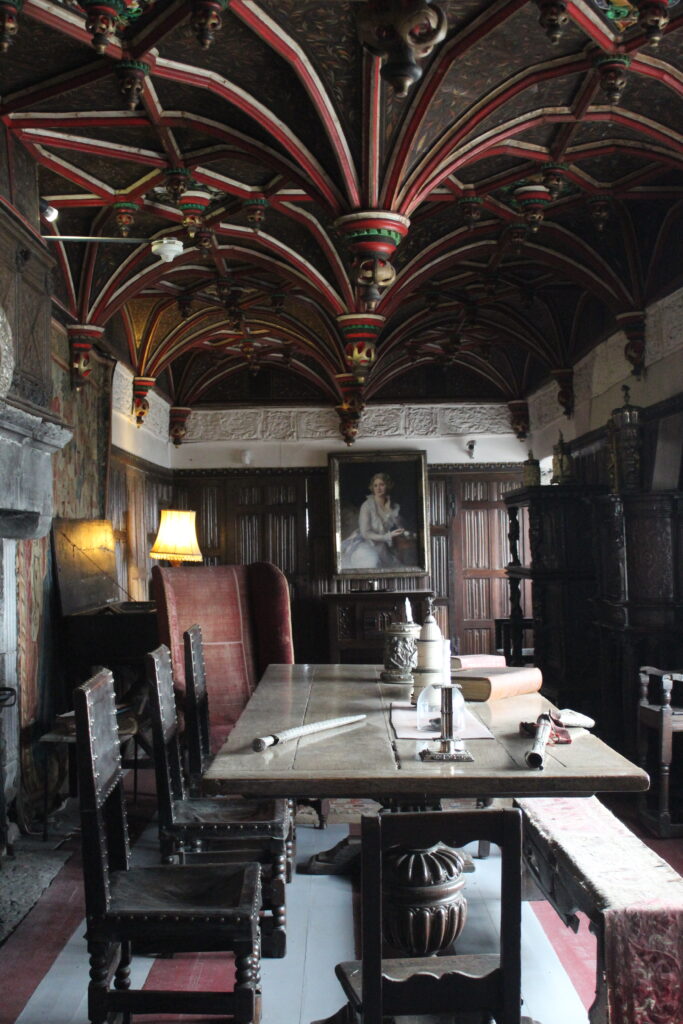
The earl had a separate private living quarters.
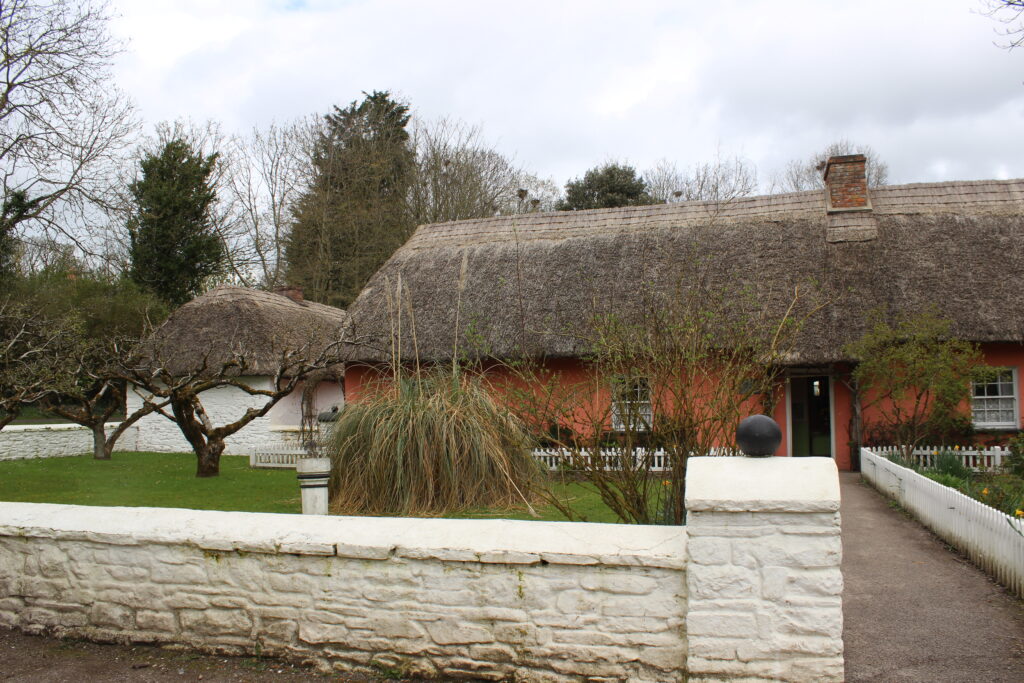
Wealthy farmer’s house
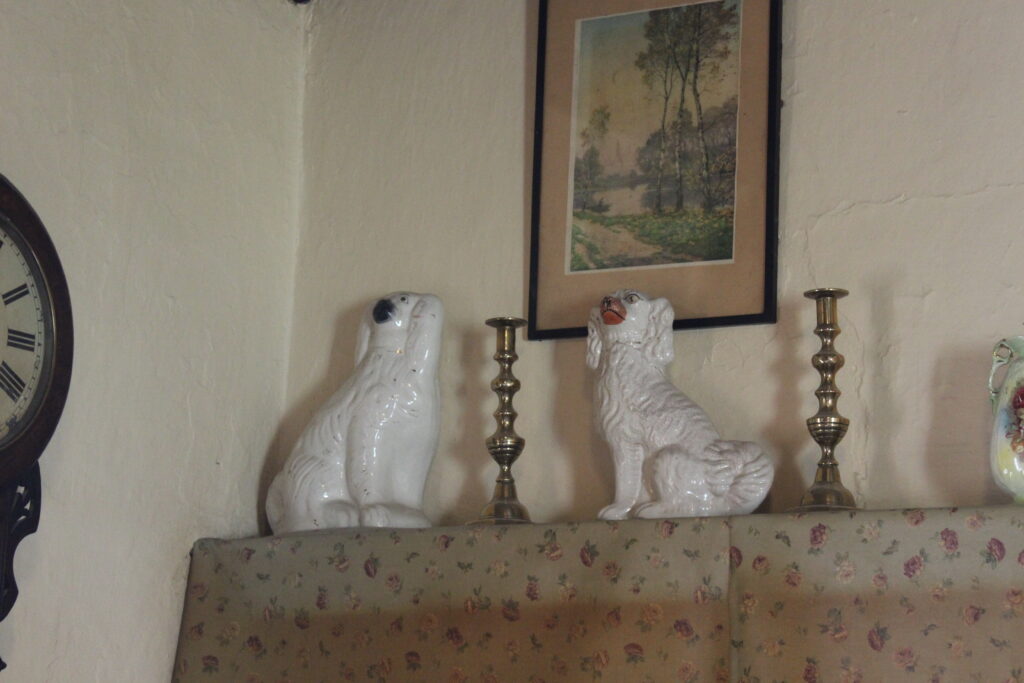
Staffordshire china dogs were a traditional Victorian wedding gift. Legend tells that these dogs are totally devoted to each other.
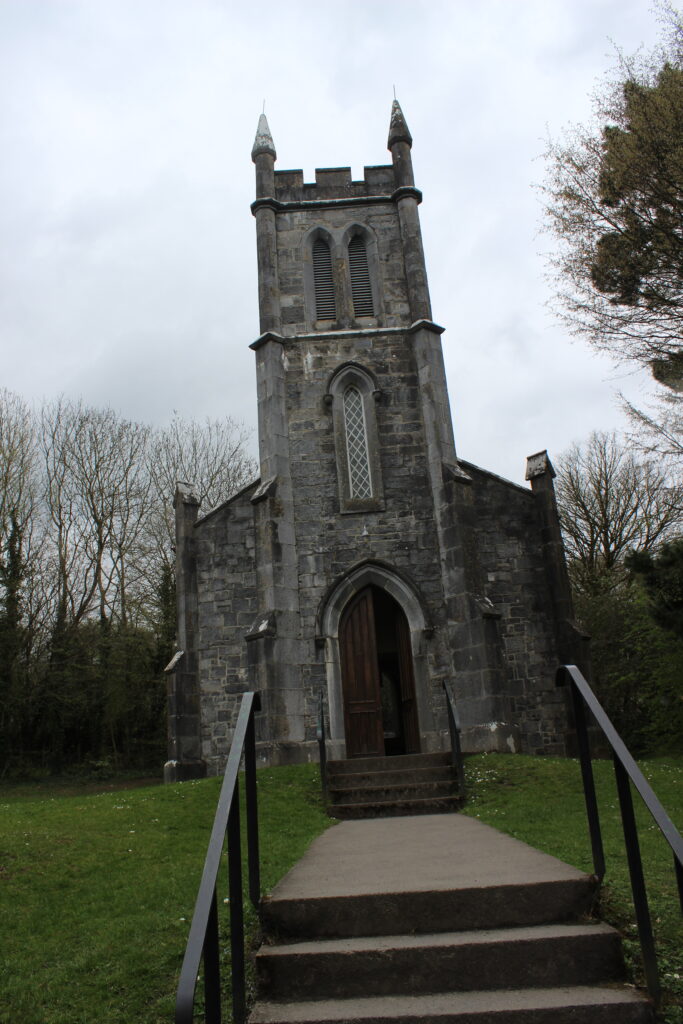
No village is complete without a church.
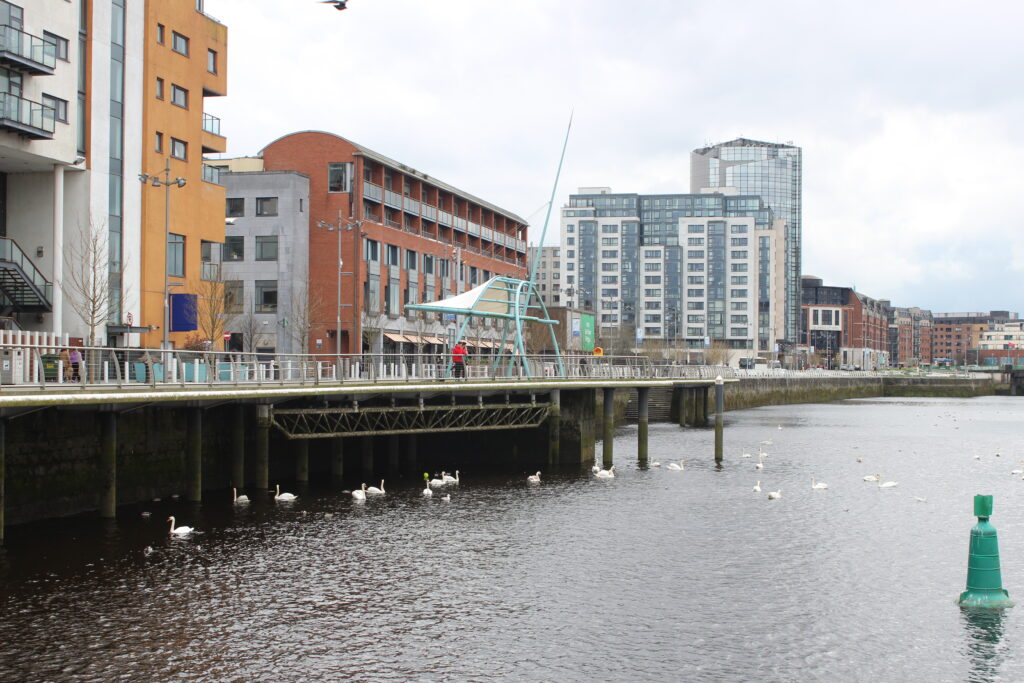
The River Limerick in Limerick
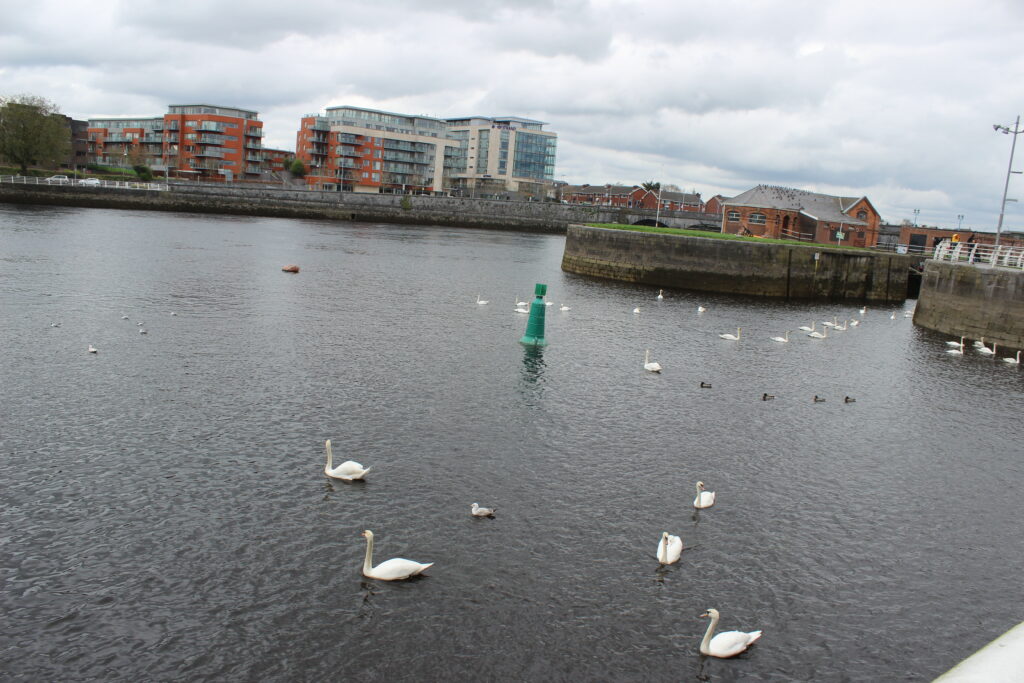
Flocks of wild swans grace the waters.
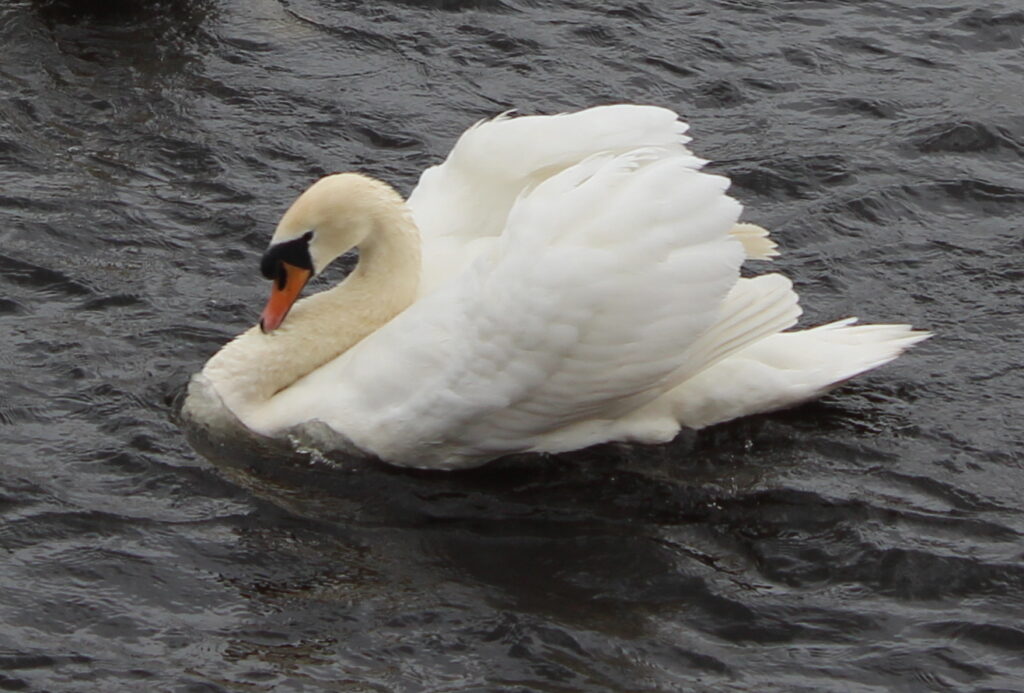
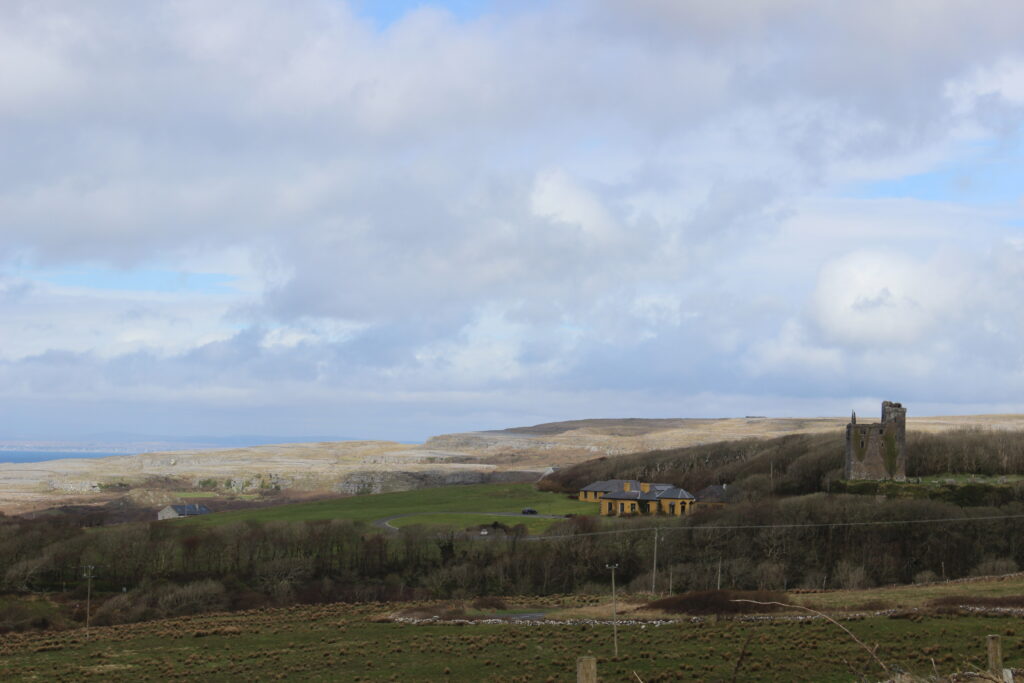
Burren Beauty Circle Drive – old mansion stands next to new luxury
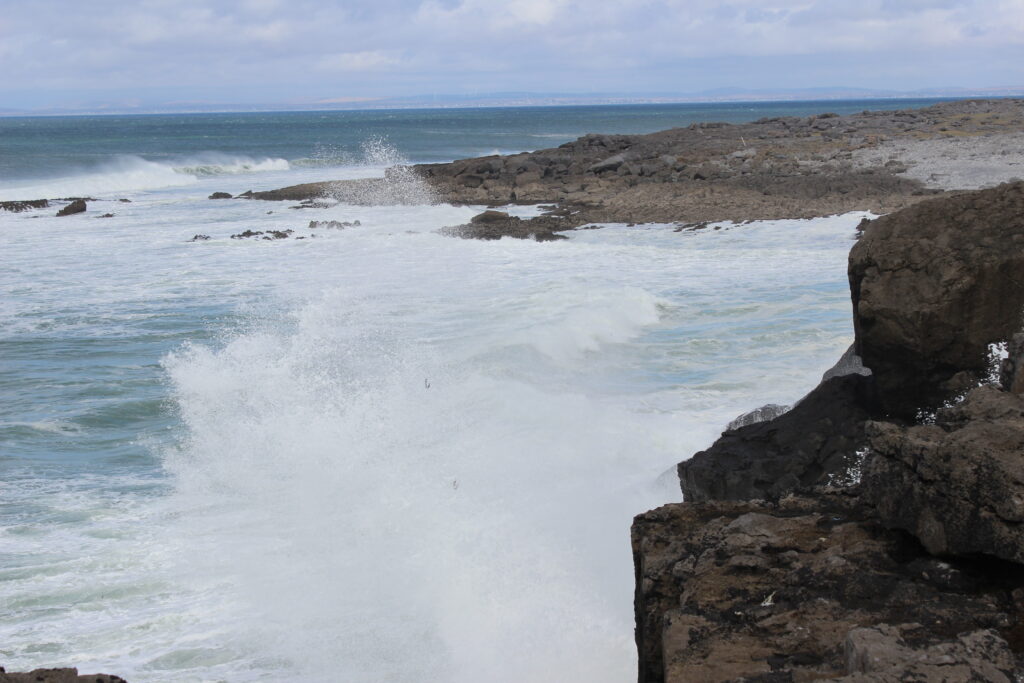
Coast line of the Burren landscape
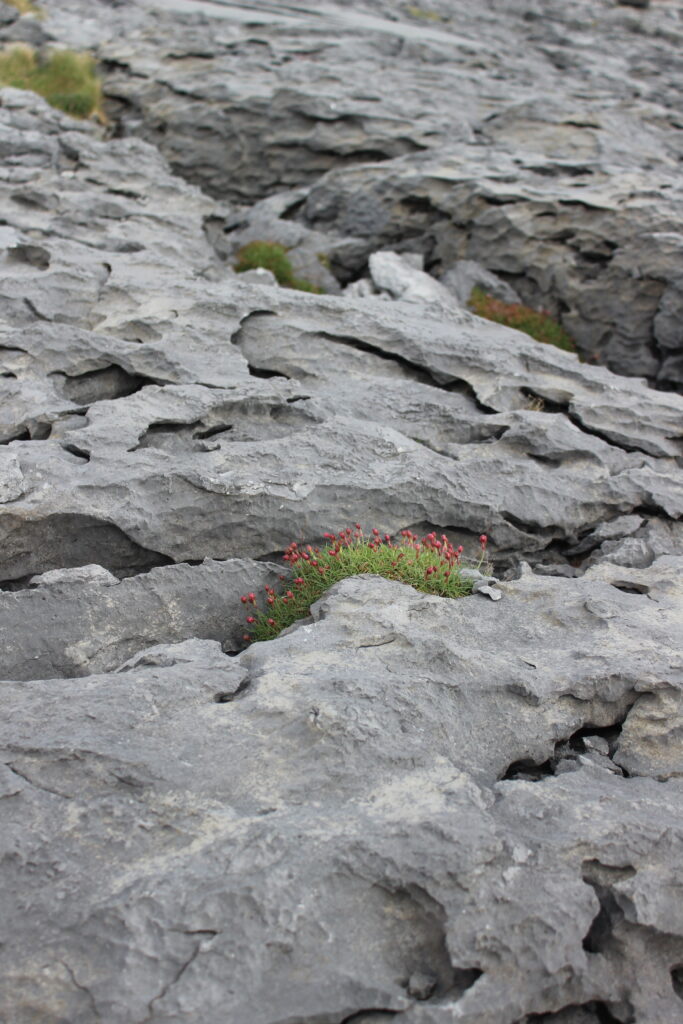
Life always finds a way.
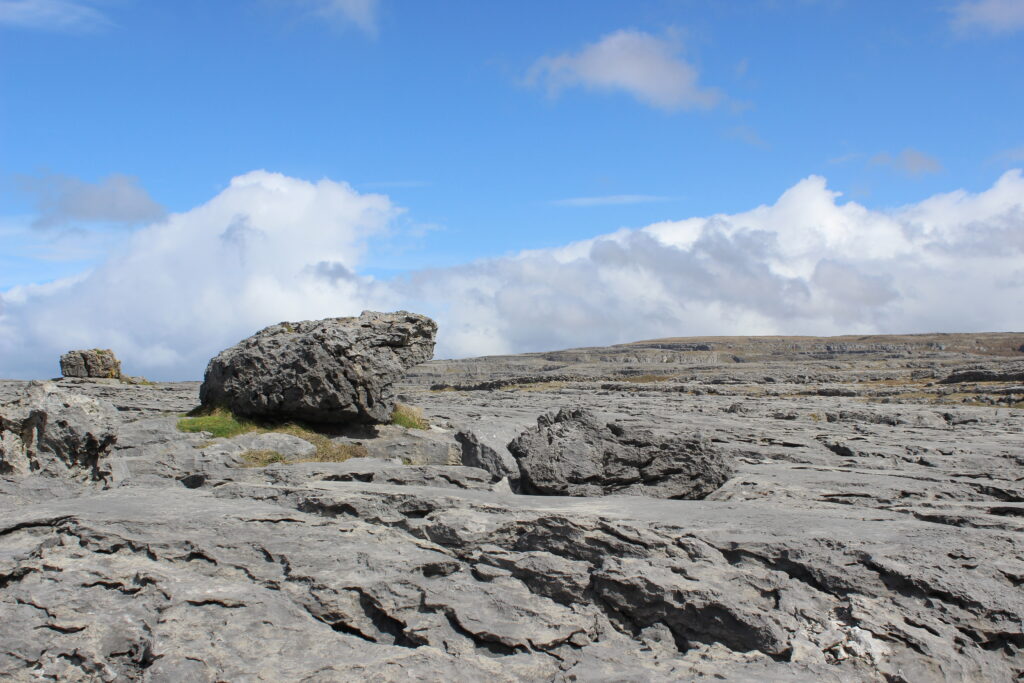
The Burren consists of glaciated karst, formed by the erosion of limestone, dolomite and gypsum.
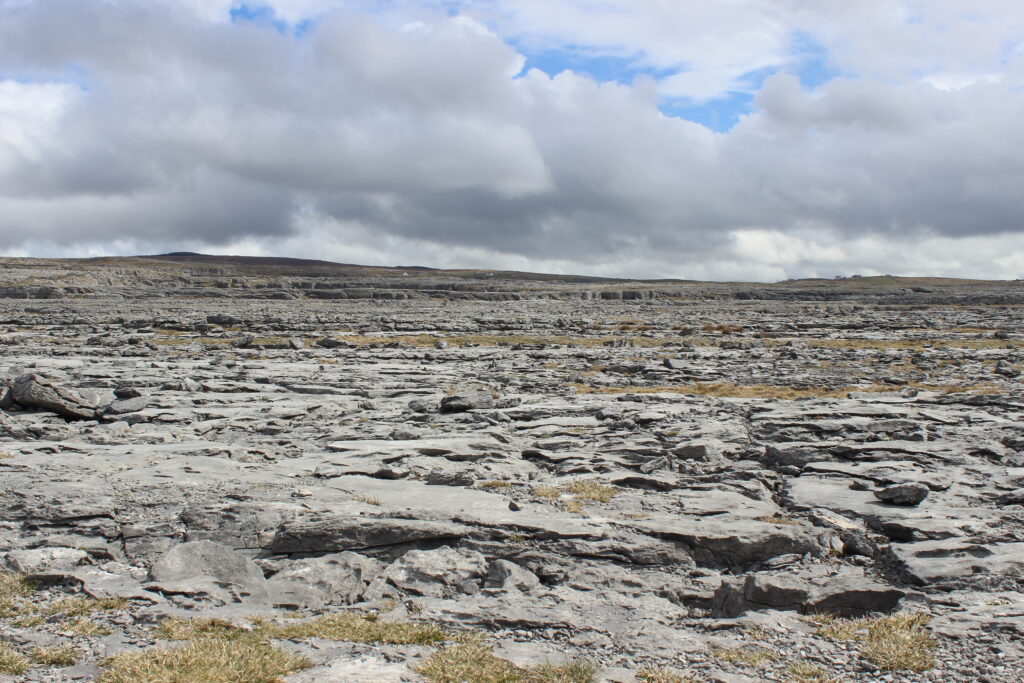
The harsh terrain, sinkholes and crevices, is the fodder for many an Irish legend.
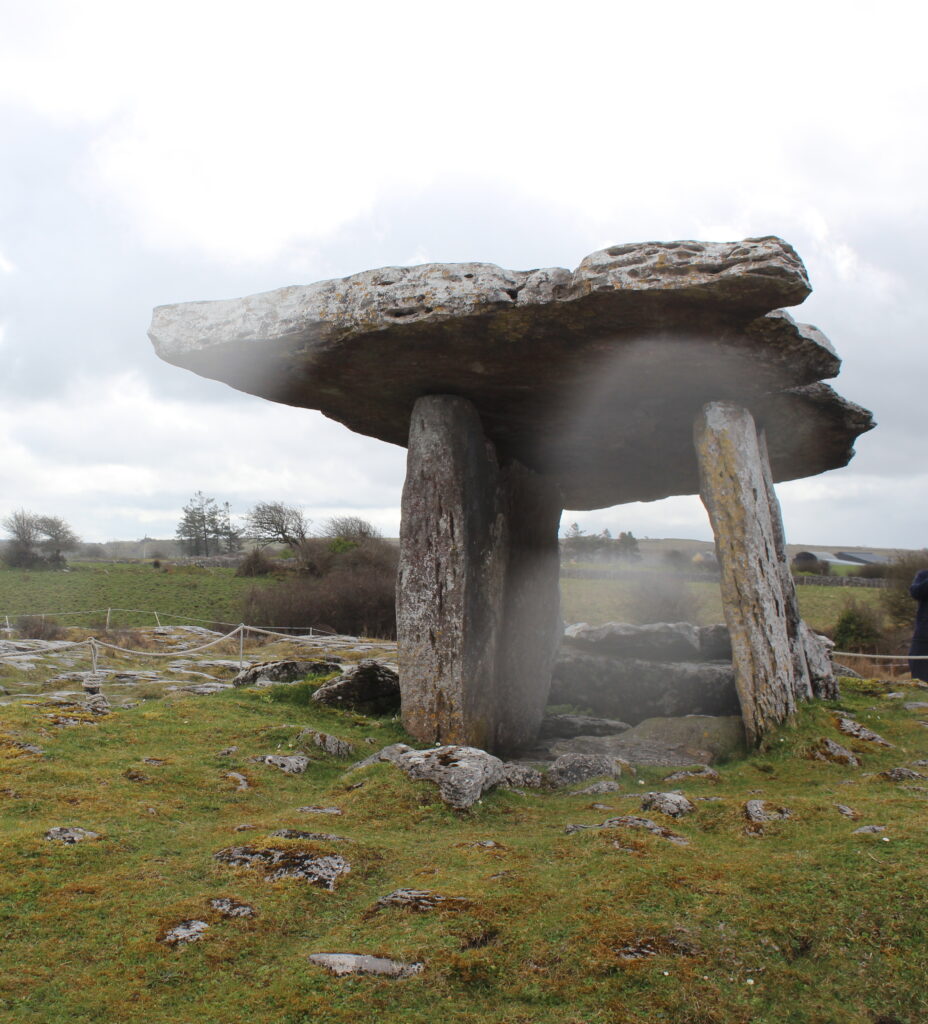
Neolithic portal tomb – is that a ghost in the picture?
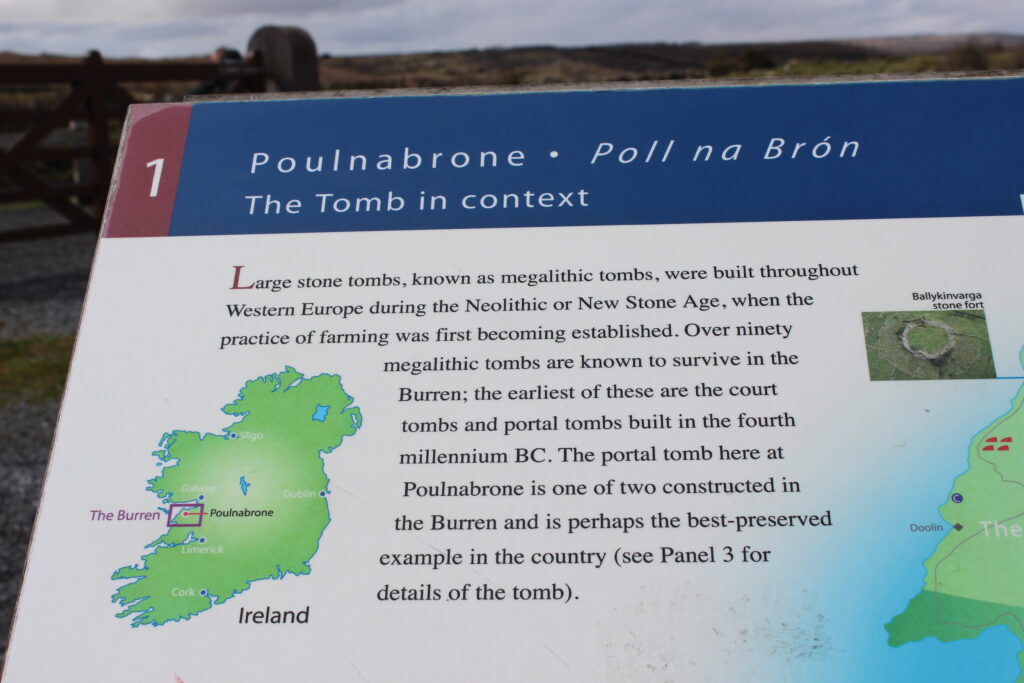
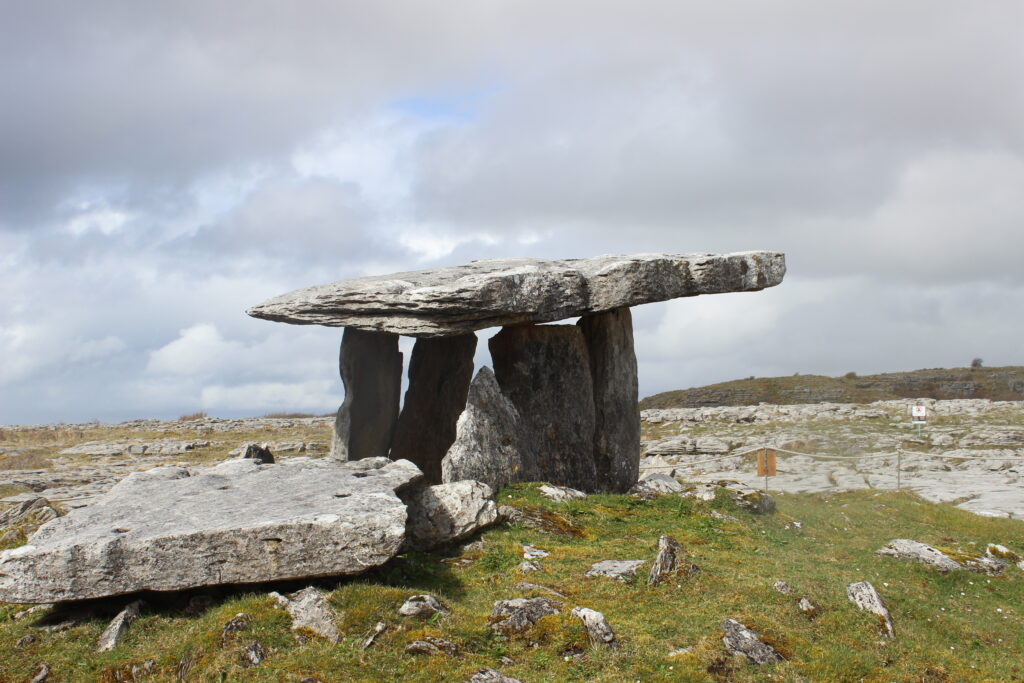
Built between 4200 BCE to 2900 BCE, multiple skeletons and artifacts were found here.
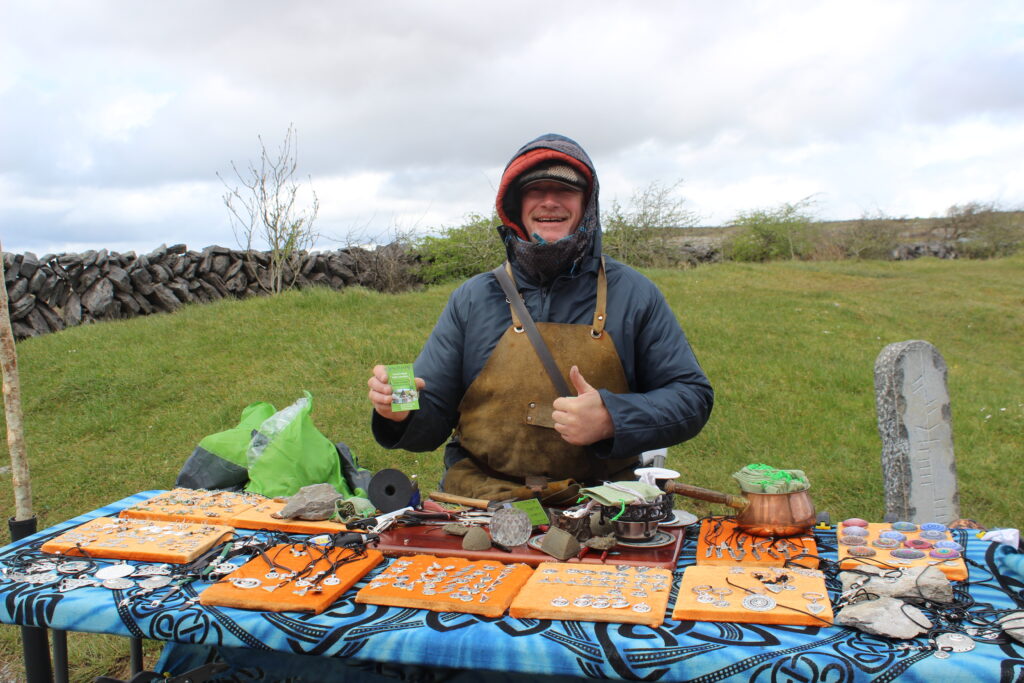
This silversmith braved the elements to sell his wares.
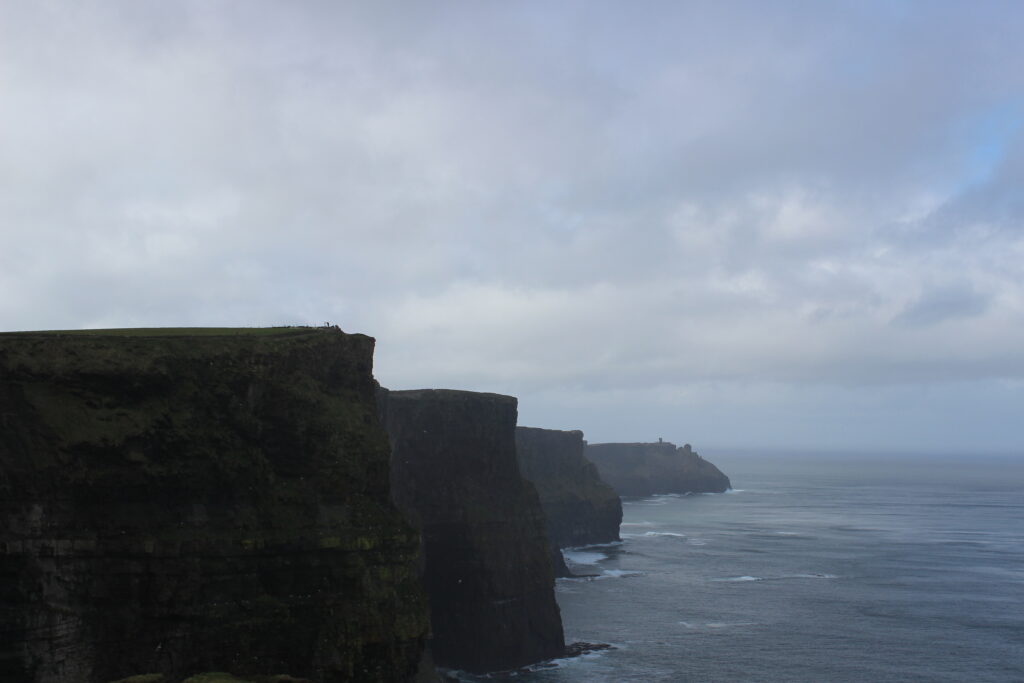
Cliffs of Moher, Ireland’s most popular attraction, rise 120 meters above the sea
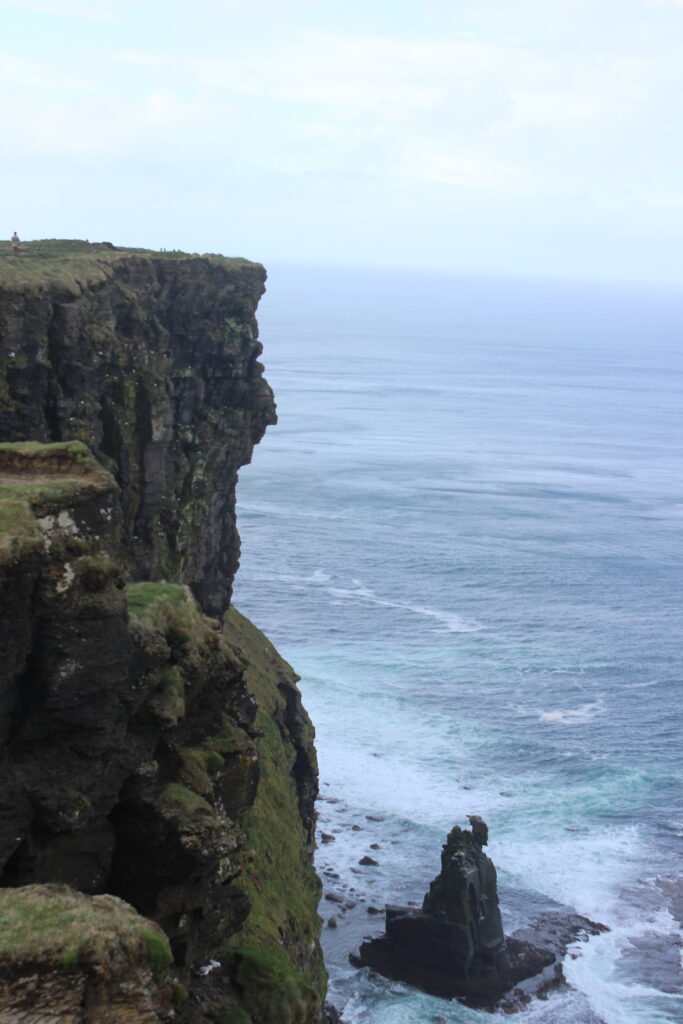
Named for Fort Mothar, demolished in 1808
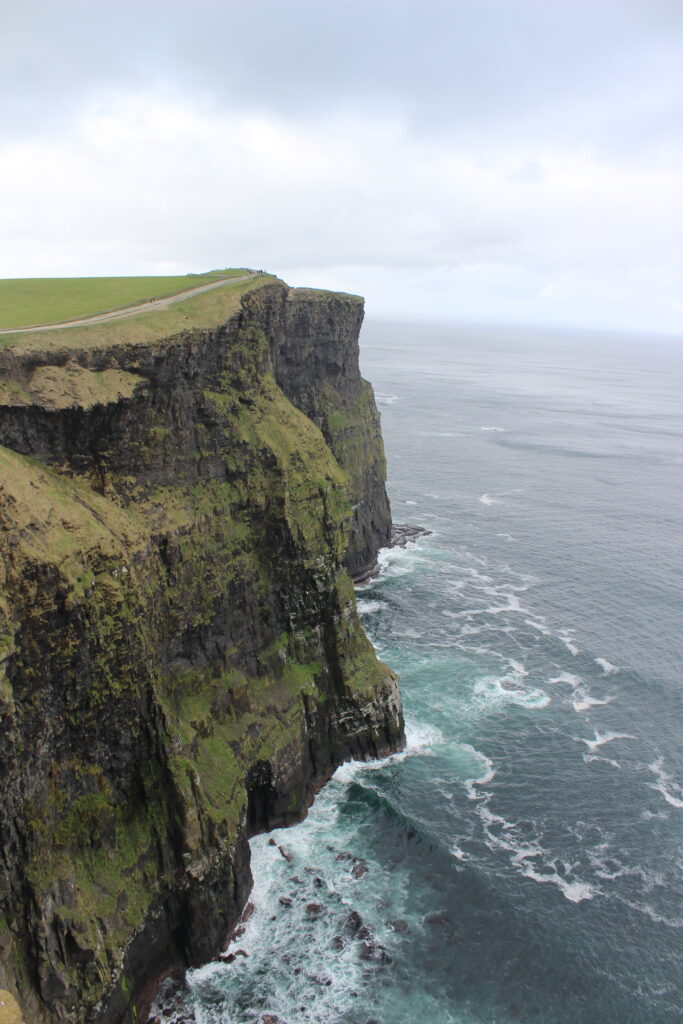
The hiking trail runs along the cliffs without fencing.
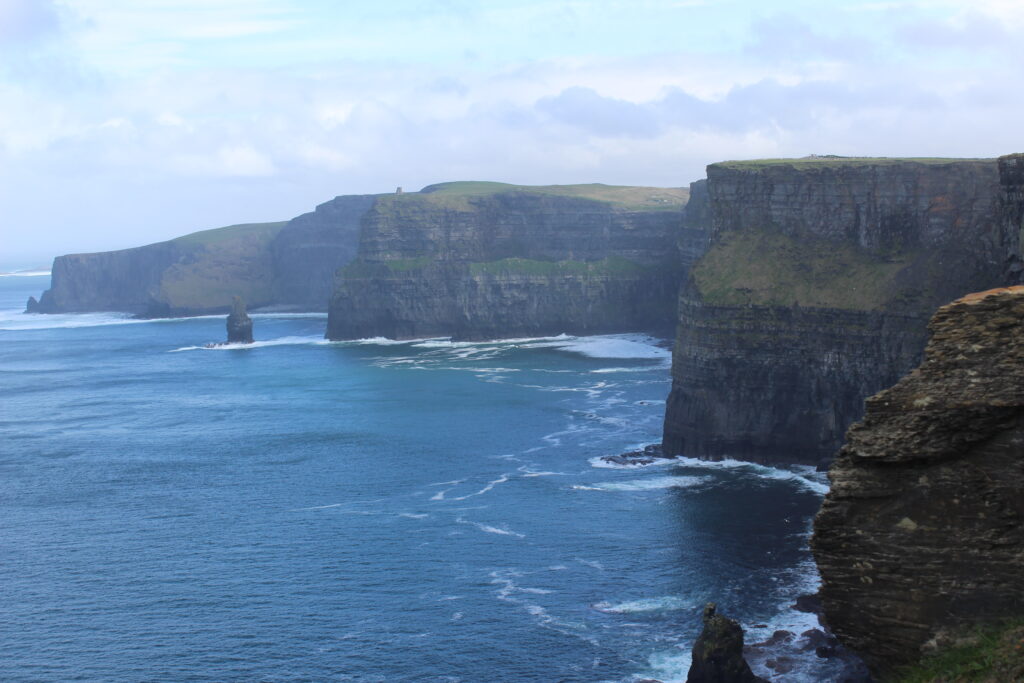
Looking north towards O’Brien’s Tower
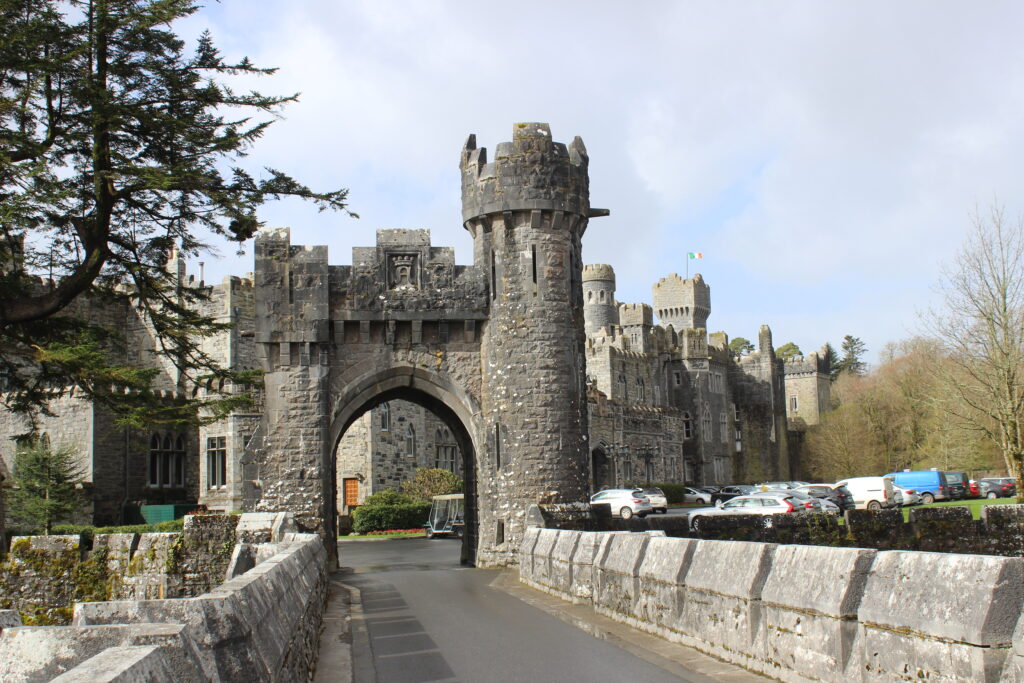
Welcome to Ashford Castle, a most luxurious castle hotel
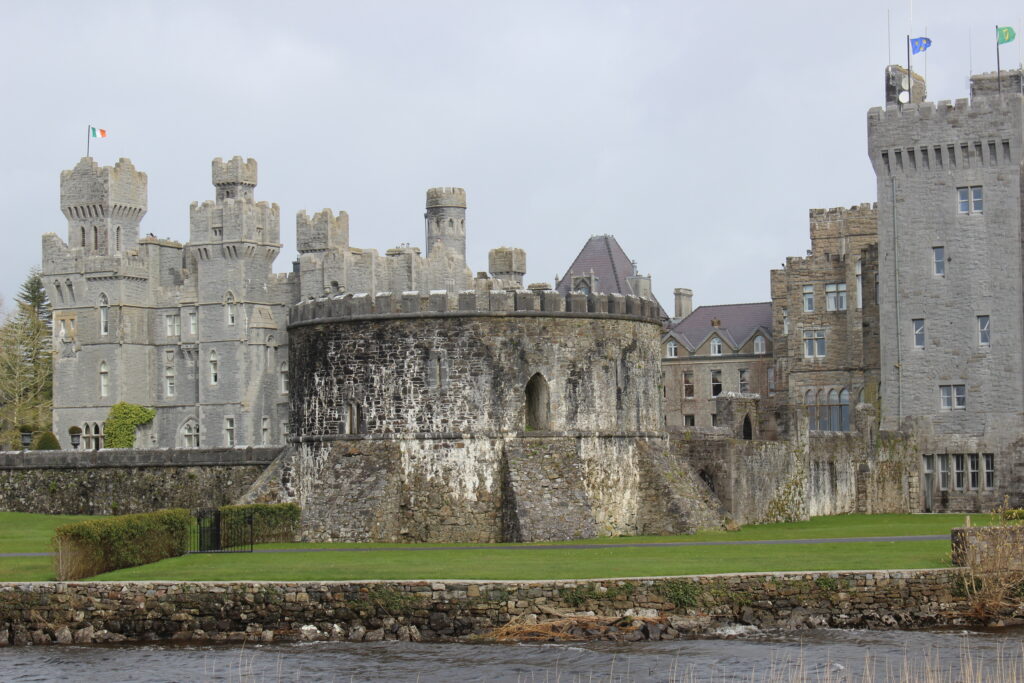
Originally built in the 11th century by the de Burgos family
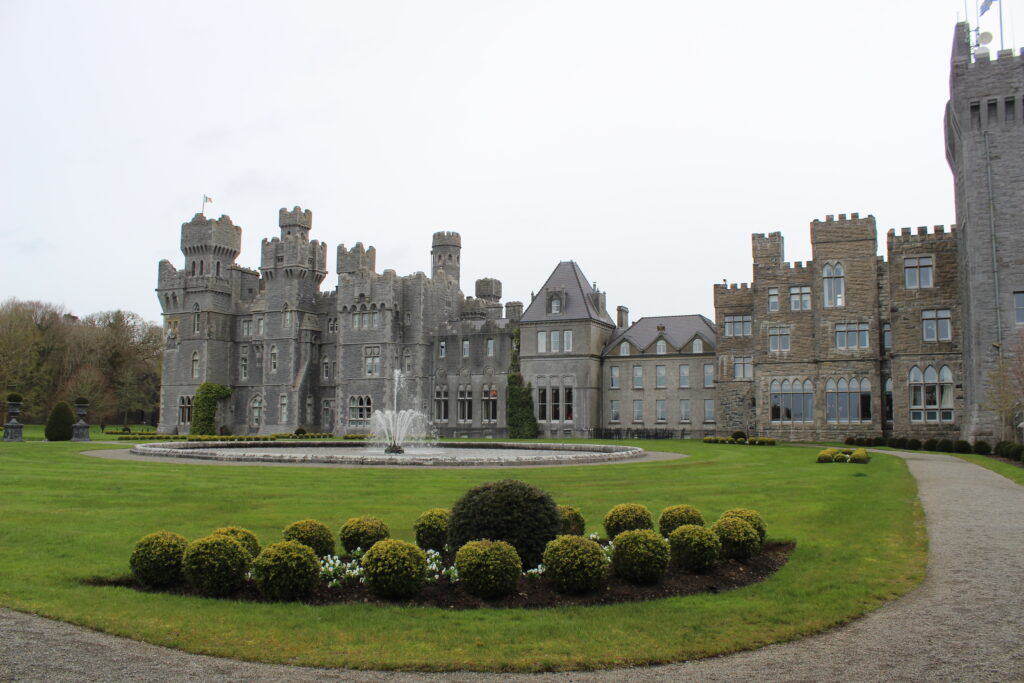
Purchased in 1852 by Sir Benjamin Lee Guinness who owned it until the 1970’s
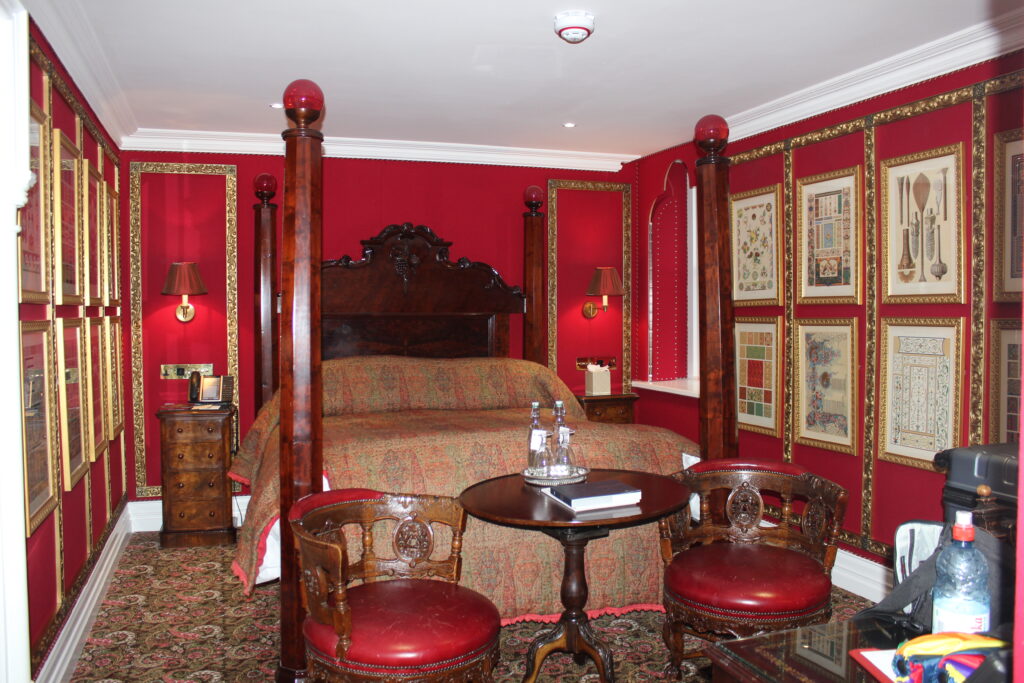
All guests are treated like royalty!
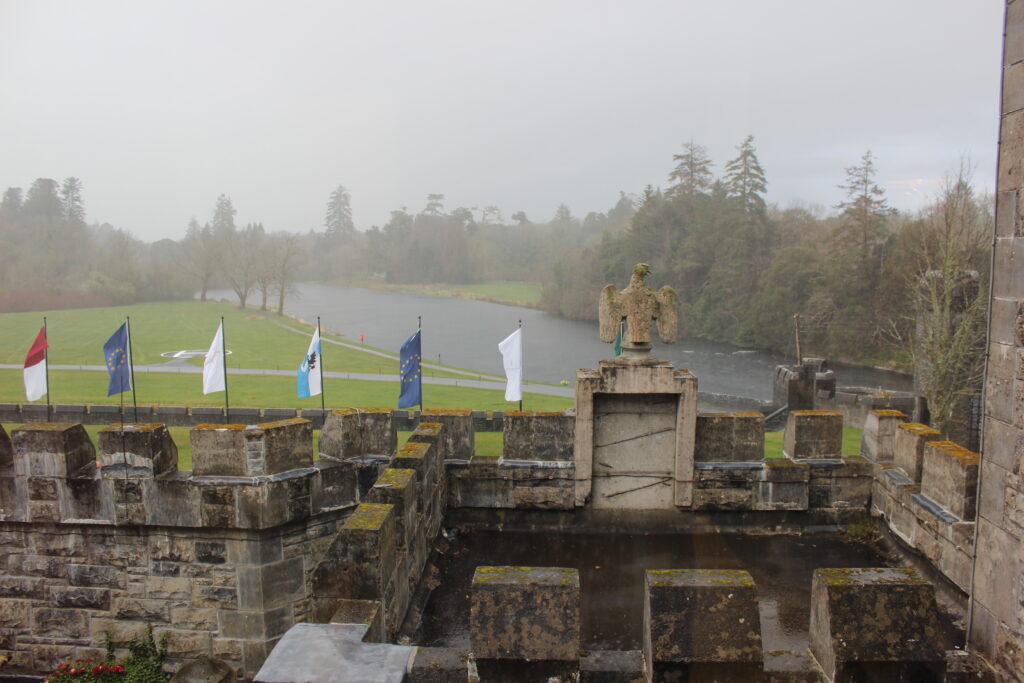
The view from our “throne”
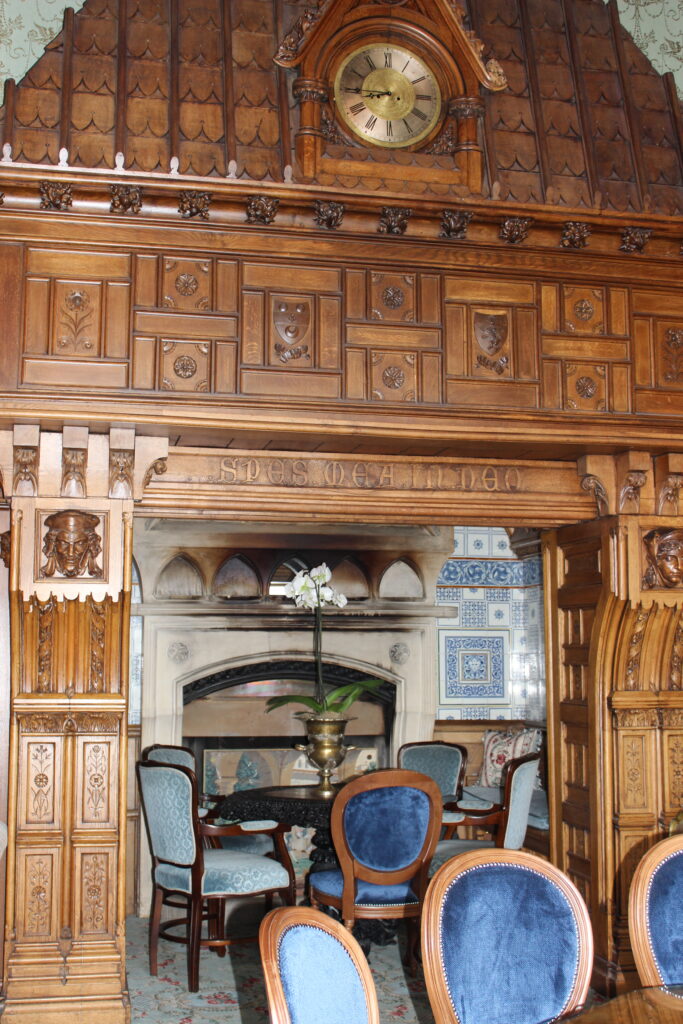
Restoration revealed original Italian tiles and a secret room behind the fire place.
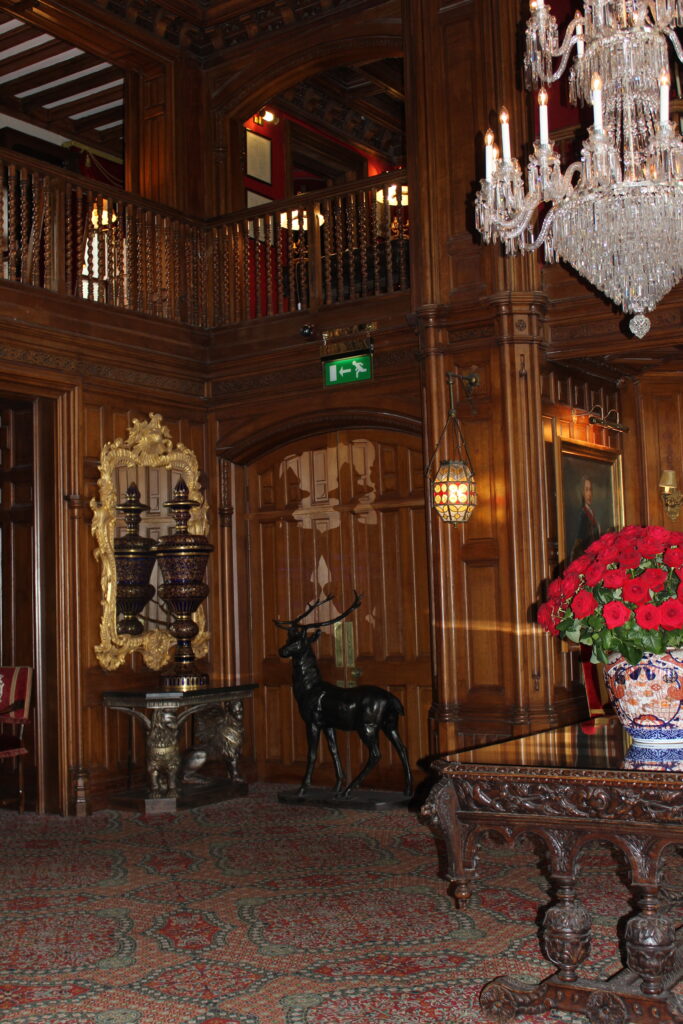
The entrance hall leading to the main lobby
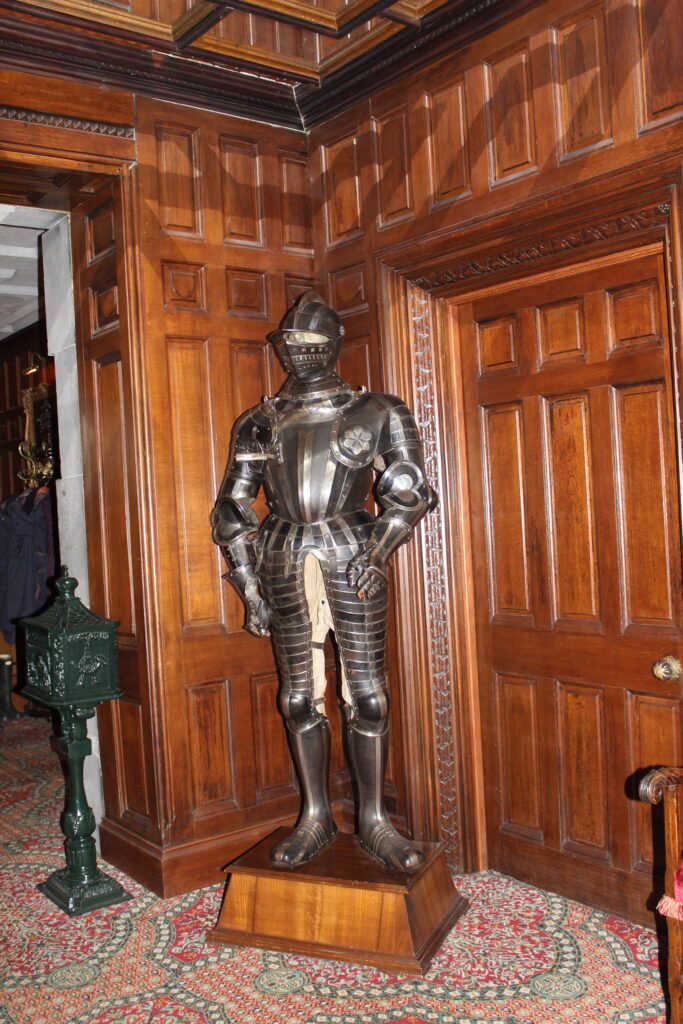
Ready to guard the castle
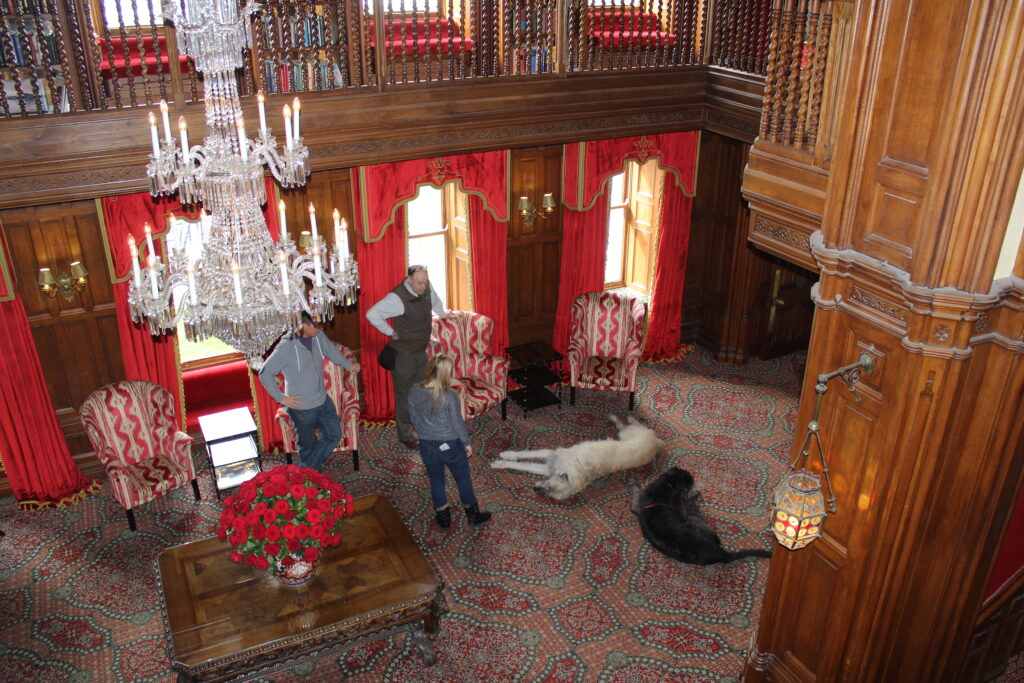
Irish wolfhounds greet the guests every morning.
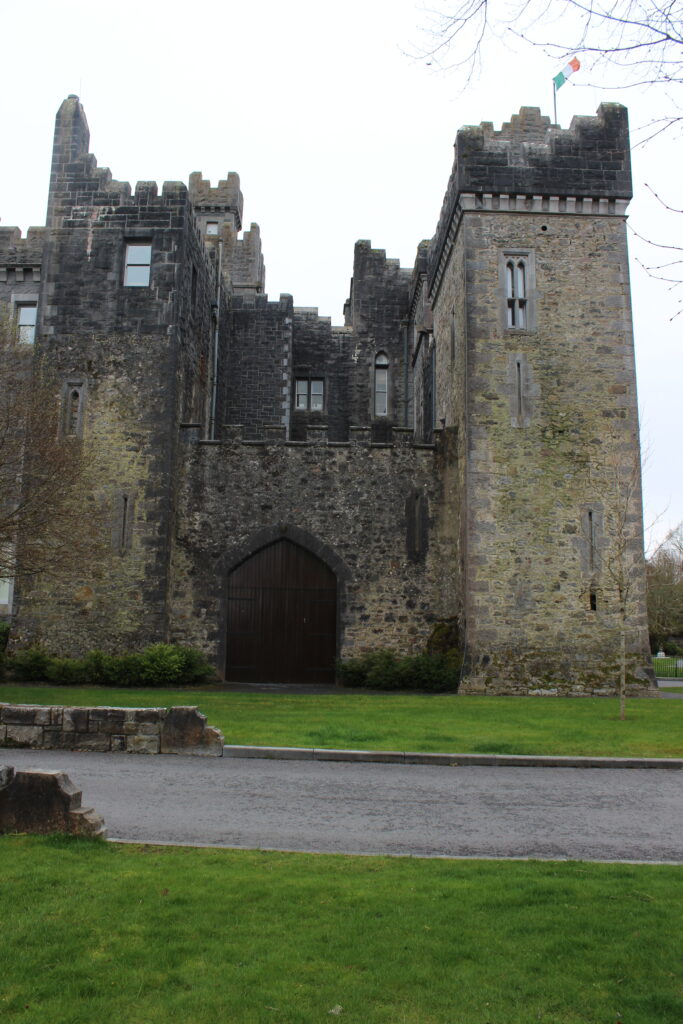
Part of the original de Burgo castle, 1228
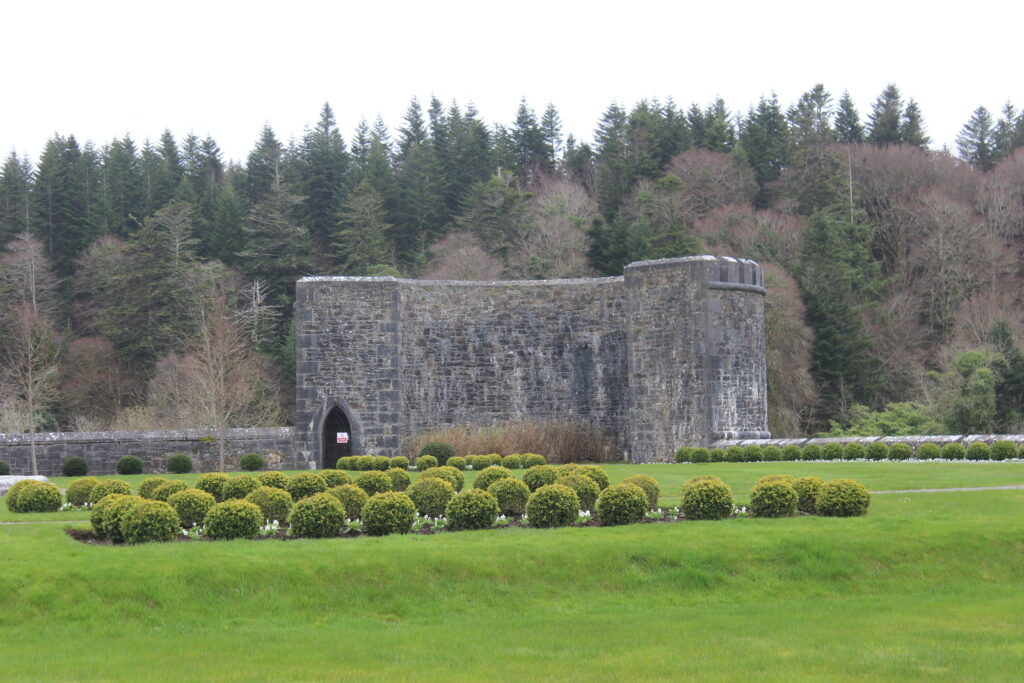
Remnant of a British fortress enclave wall, 1589
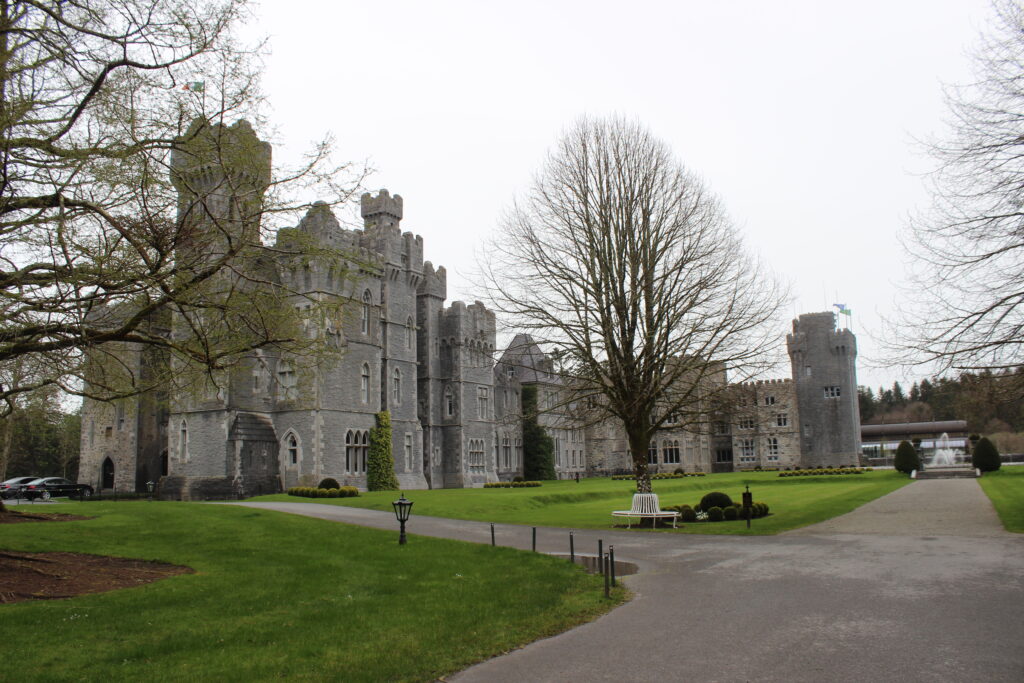
Triangular piece in the middle was built in 1715 by Oranmore and Browne family to be used as a hunting lodge and holiday residence.
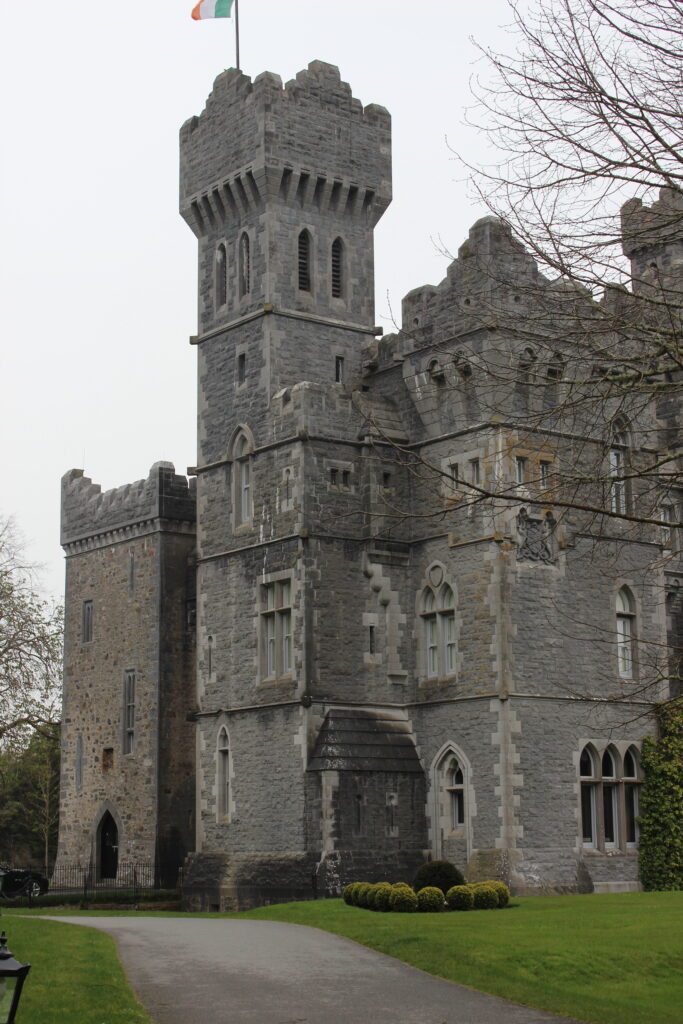
West wing addition, 1852, built by Sir Guinness
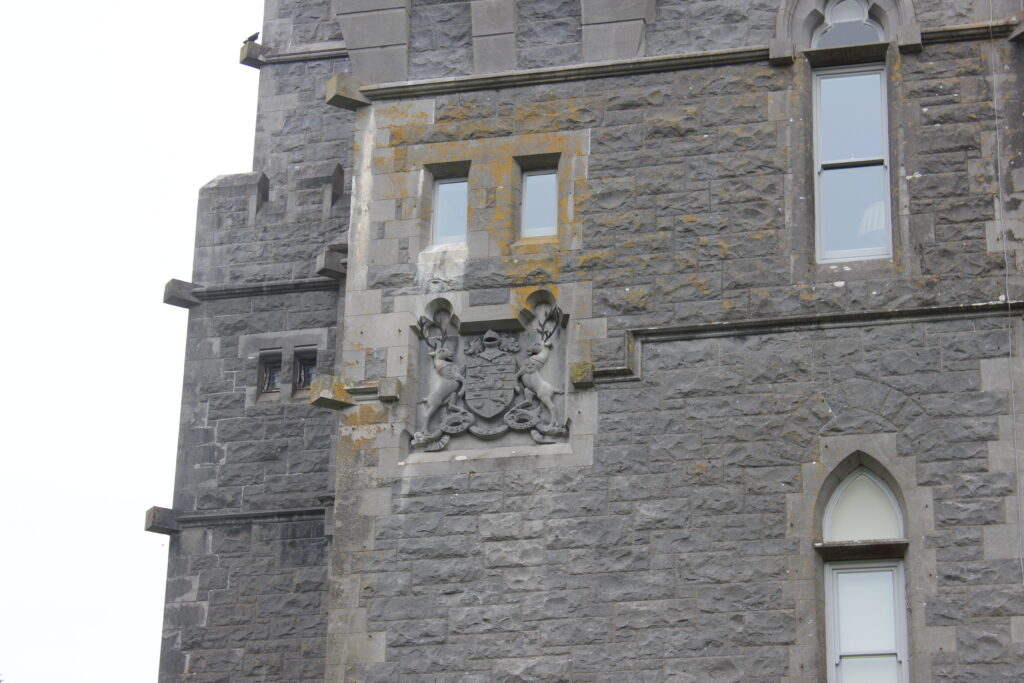
Guinness family coat of arms
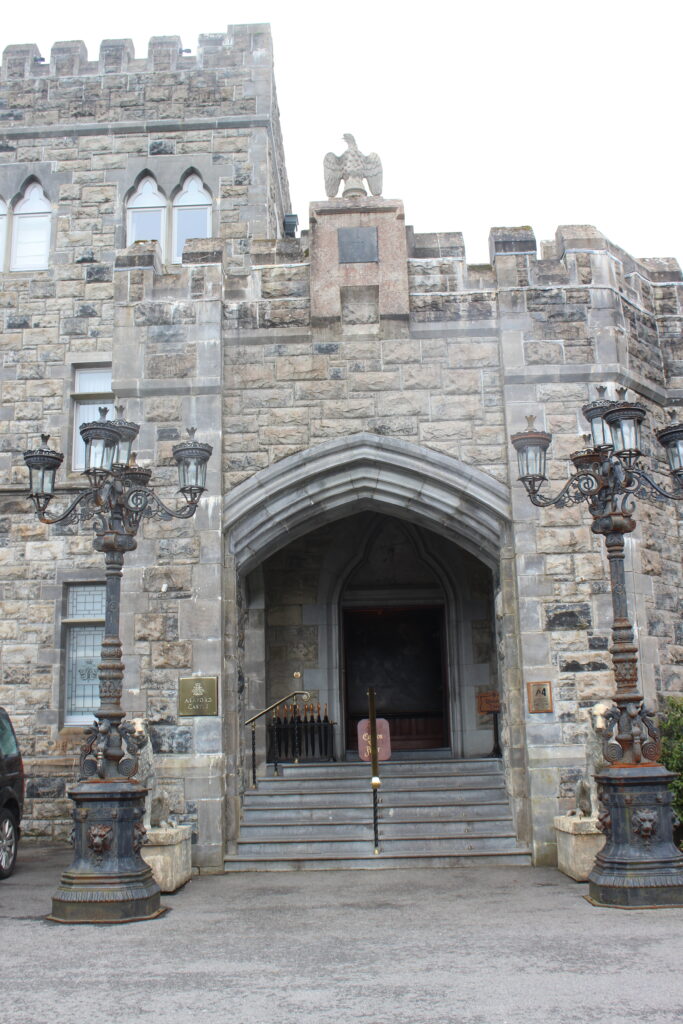
Main entrance of the castle
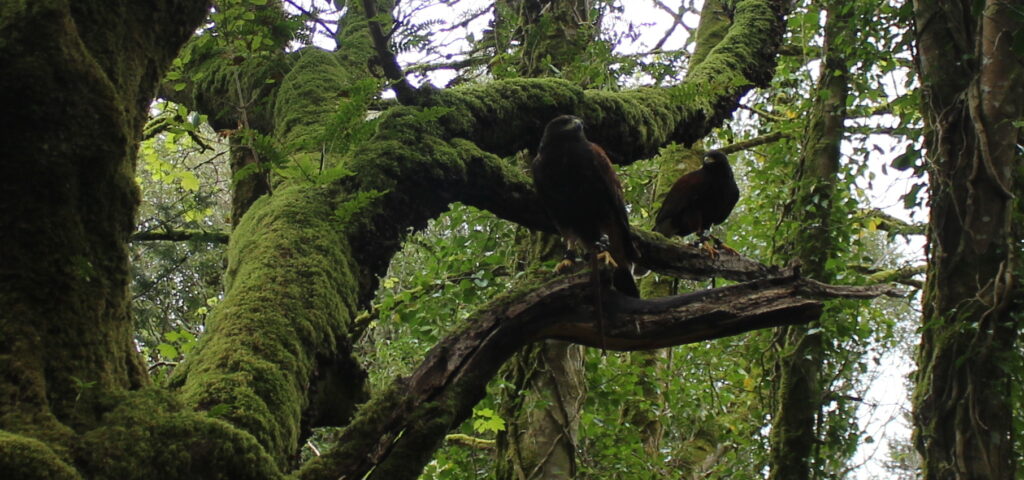
Taking advantage of the castle’s School of Falconry
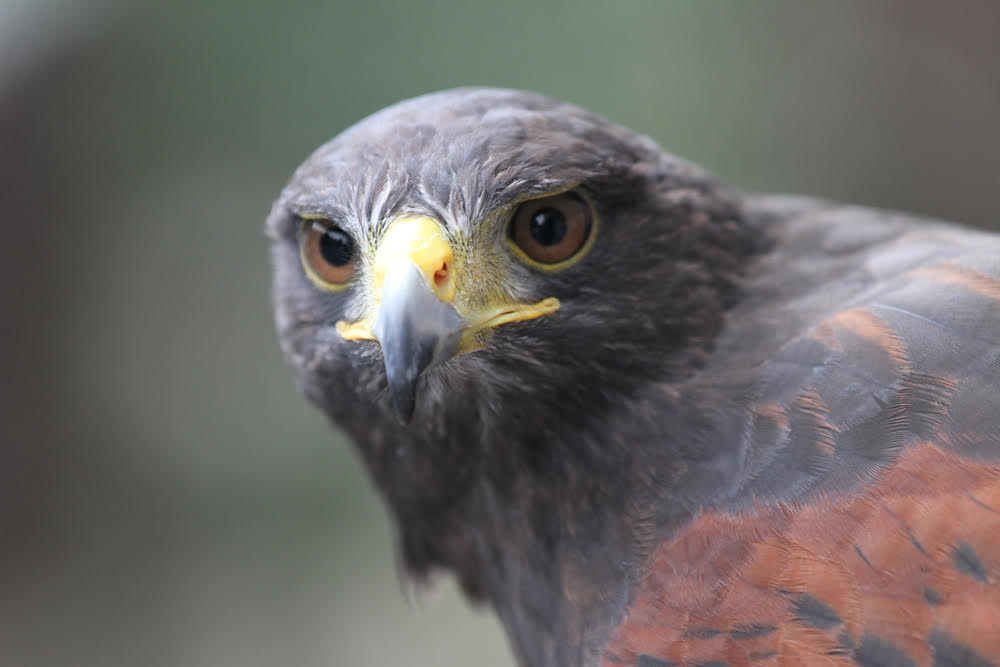
The school uses Harris Hawks. This if Fomar, Joel’s hawk.
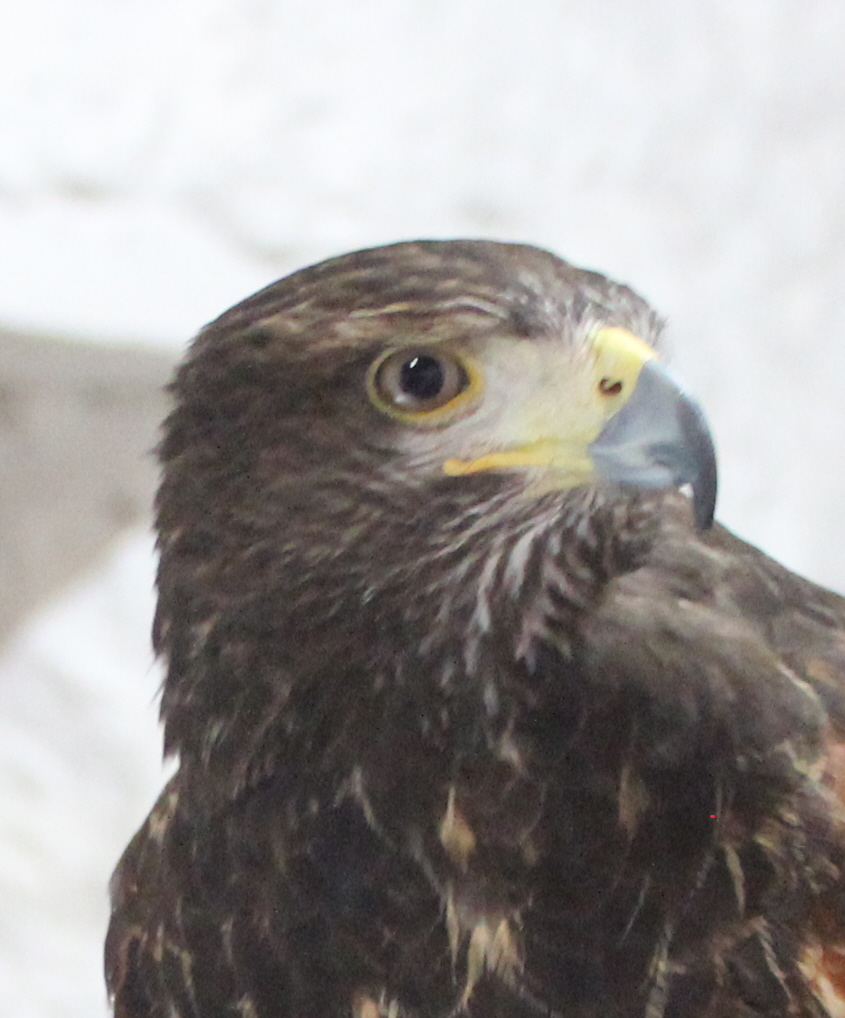
Inca was mine.
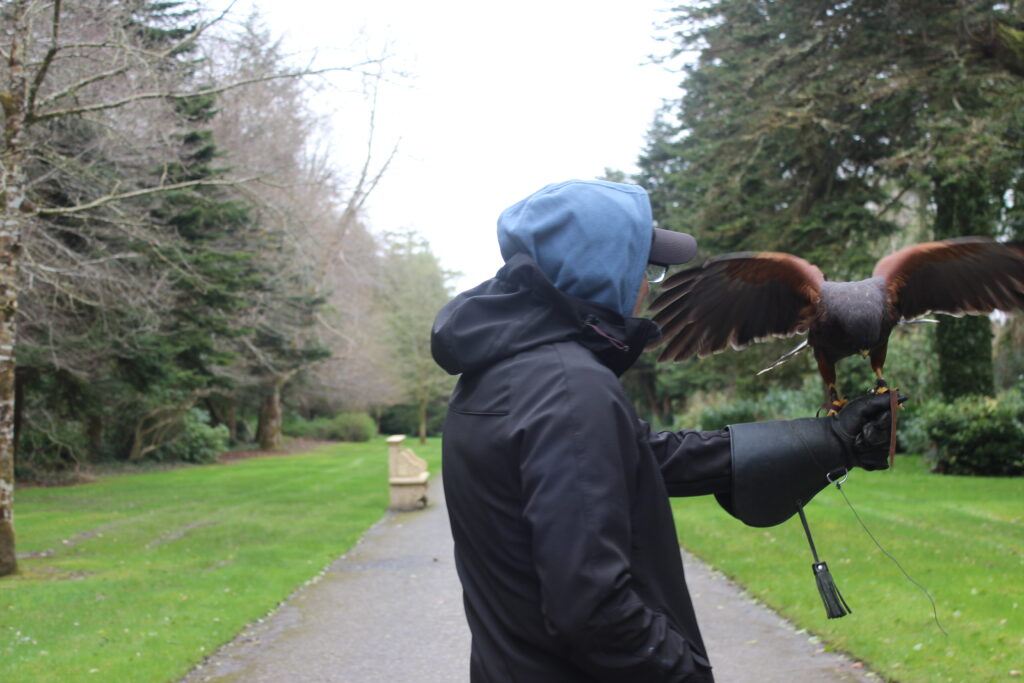
Calling back Fomar
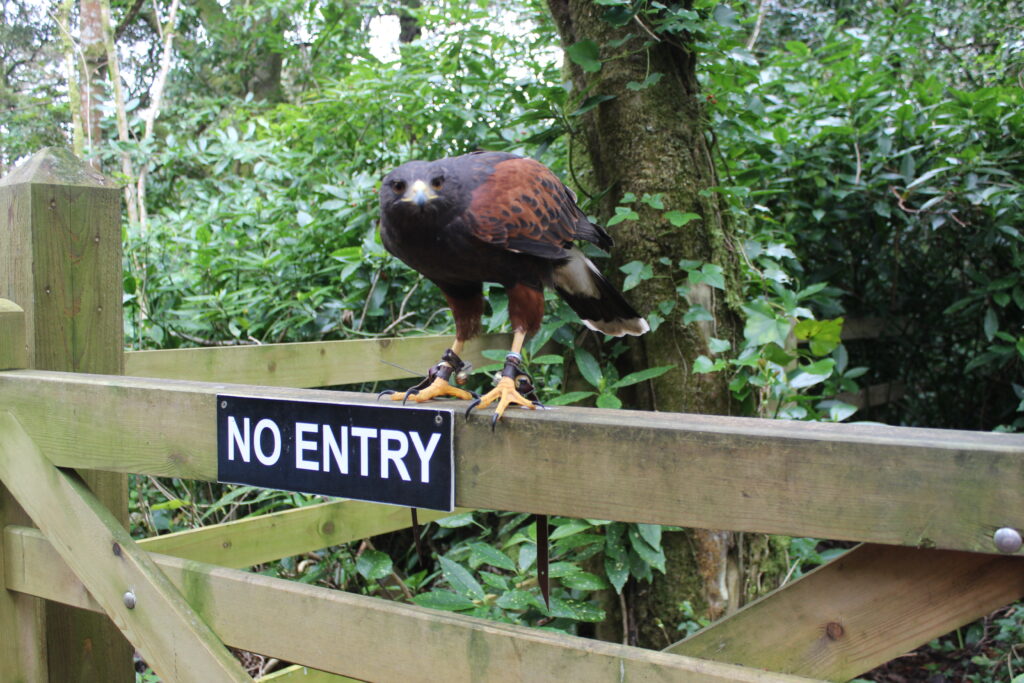
Fomar, the watch hawk
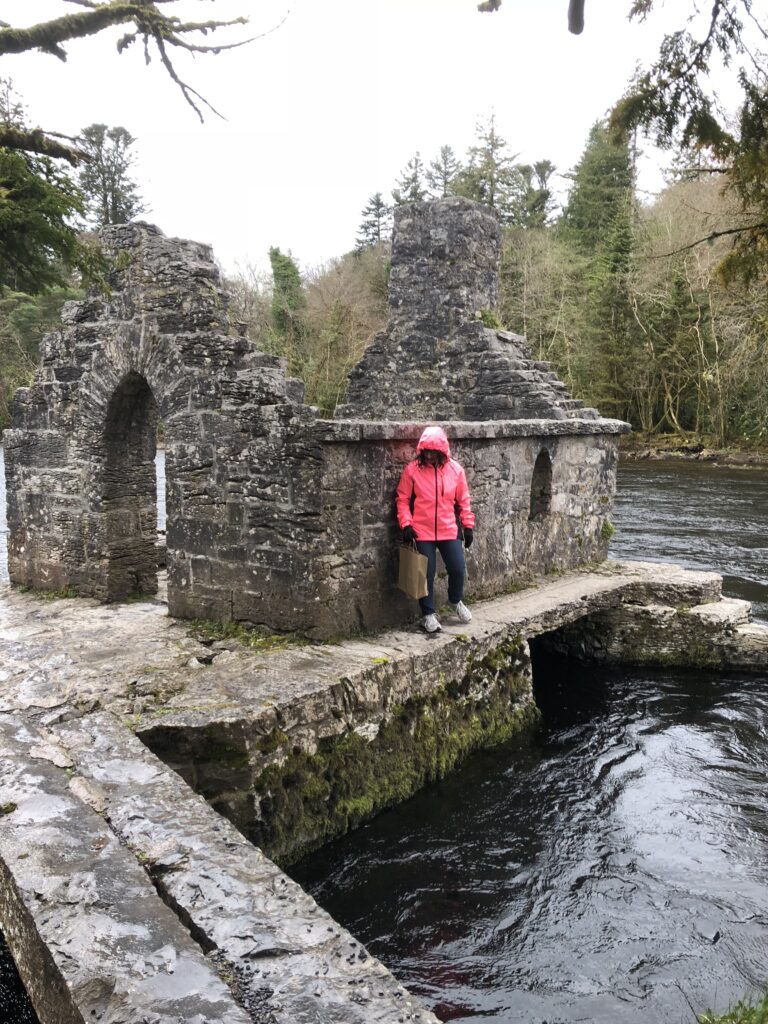
The monk’s fish house in Cong
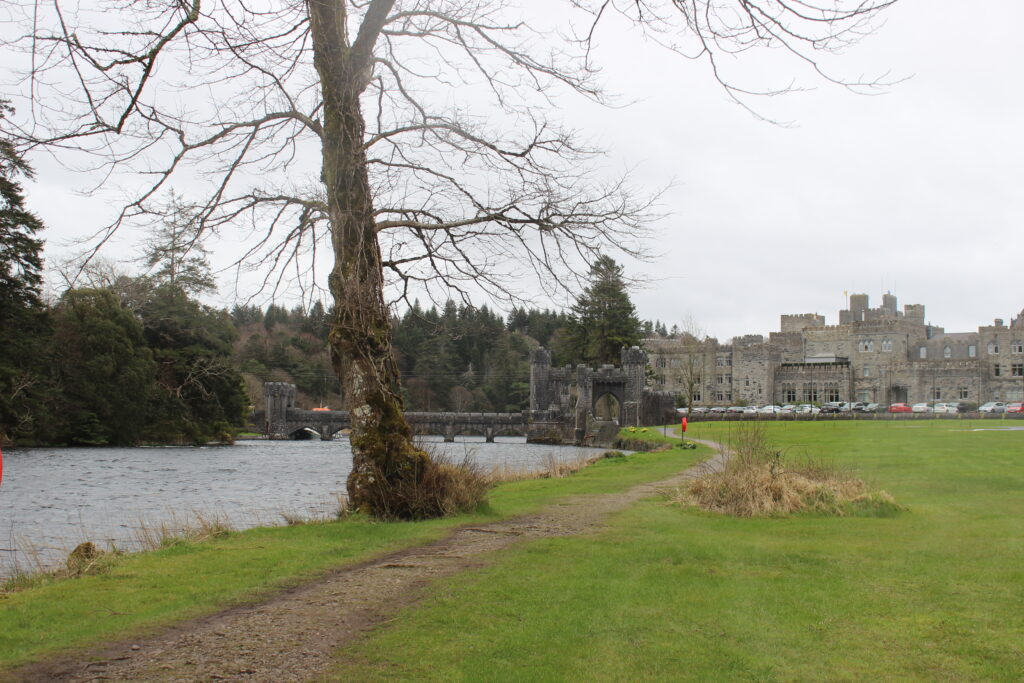
Walking back to the castle from Cong
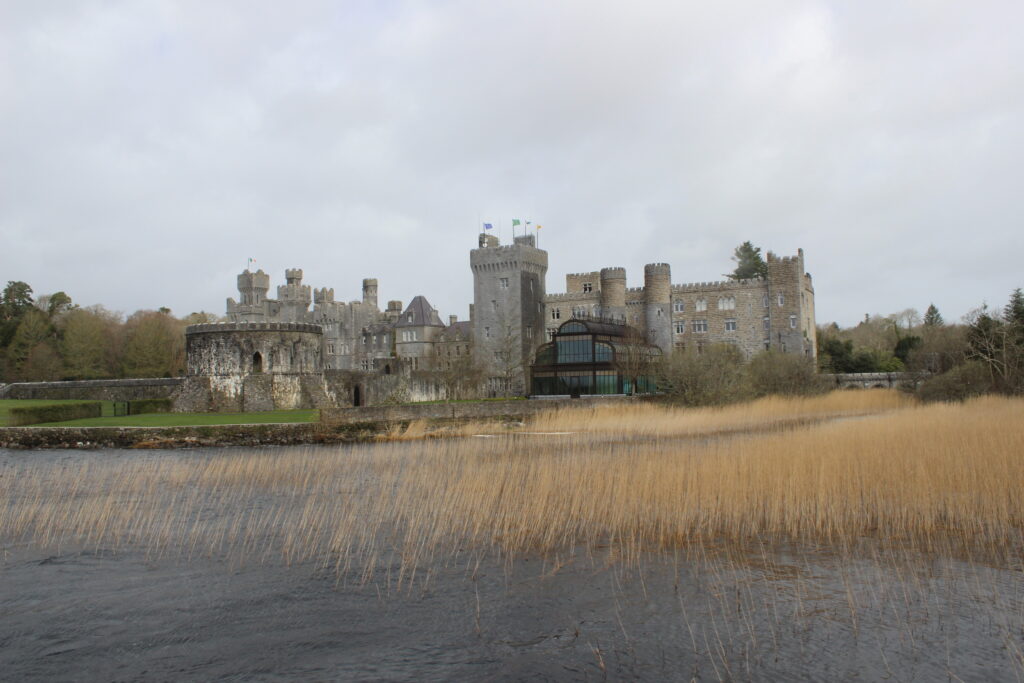
Castle as seen from the lake
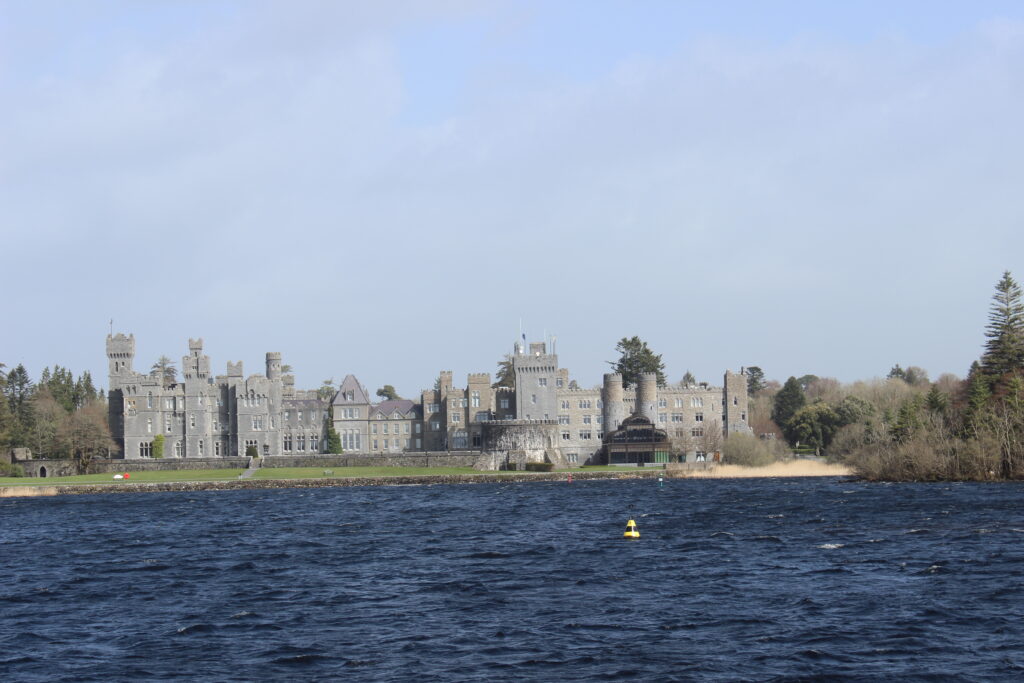
Lough Corrib is the largest lake in Ireland. Artifacts from the Bronze and Iron Ages have been found in it.
Good bye to Ireland